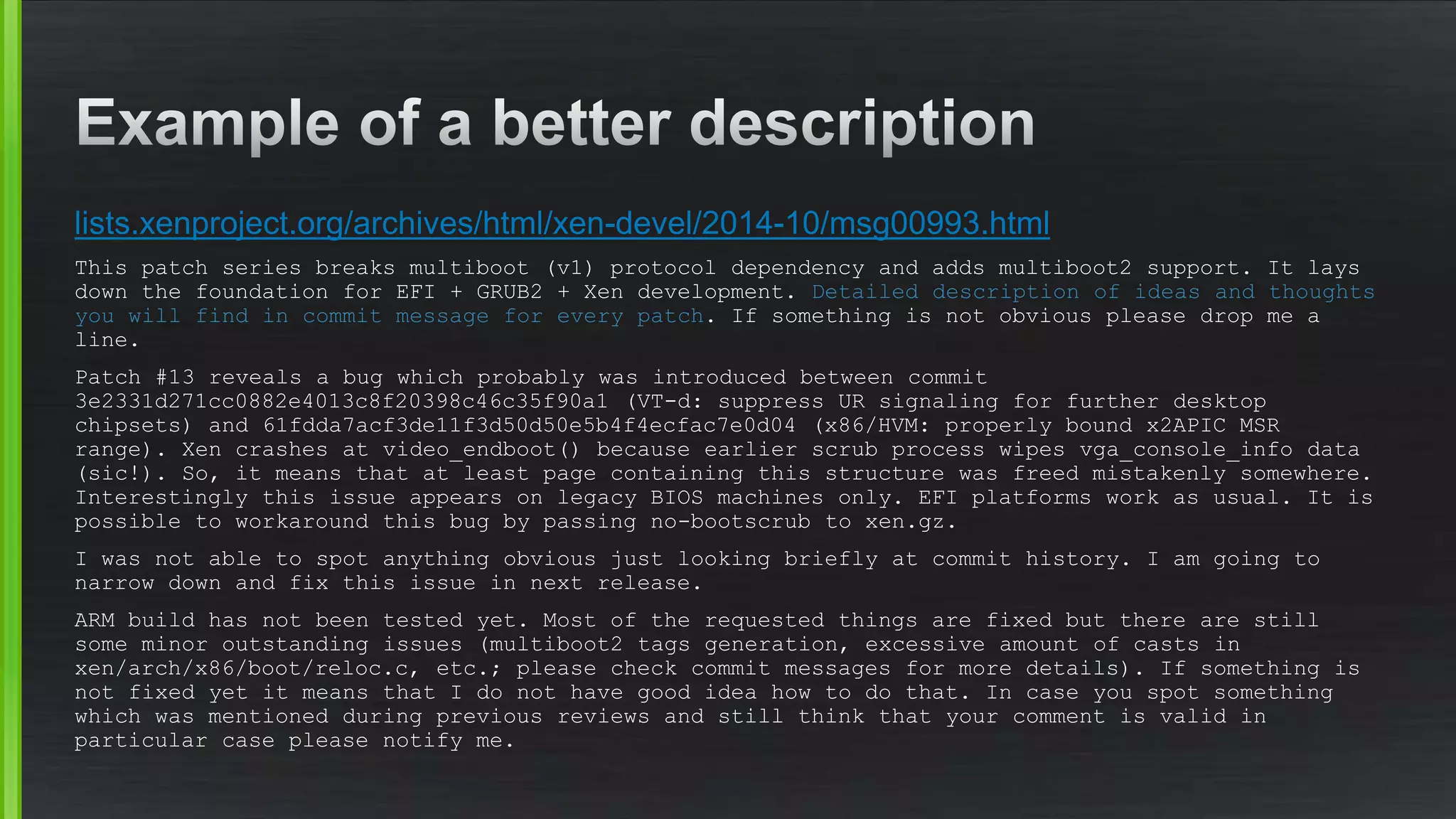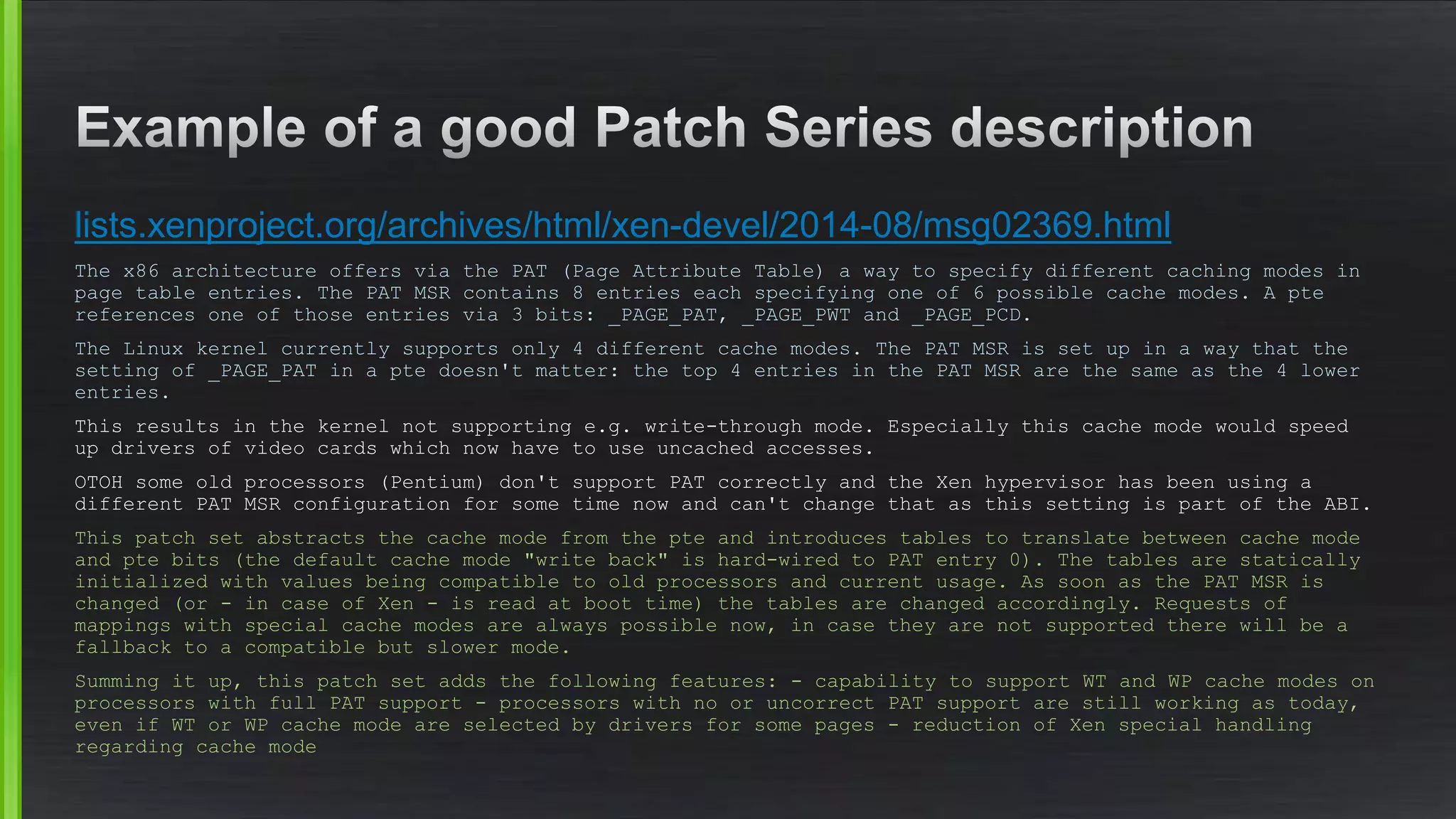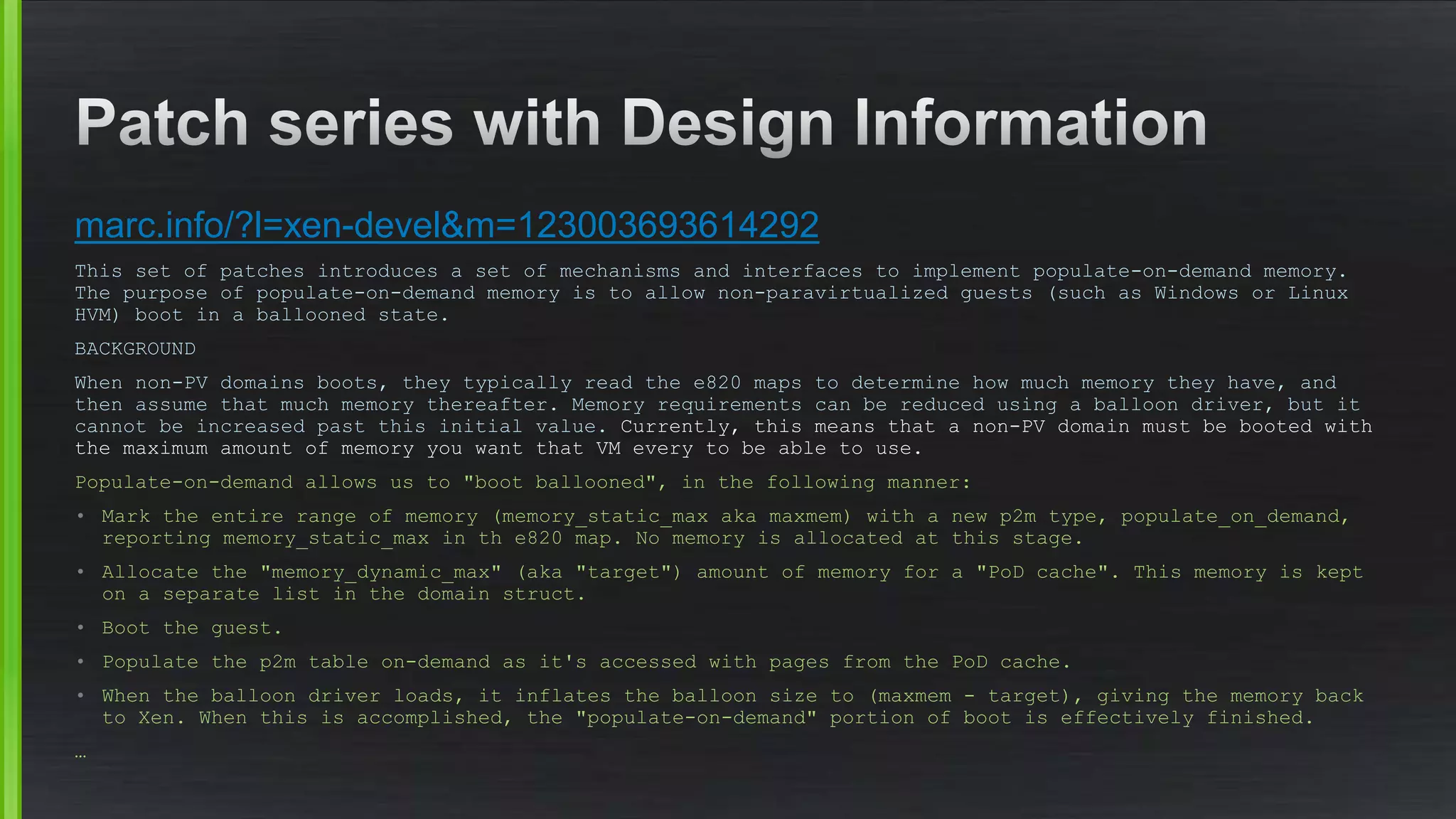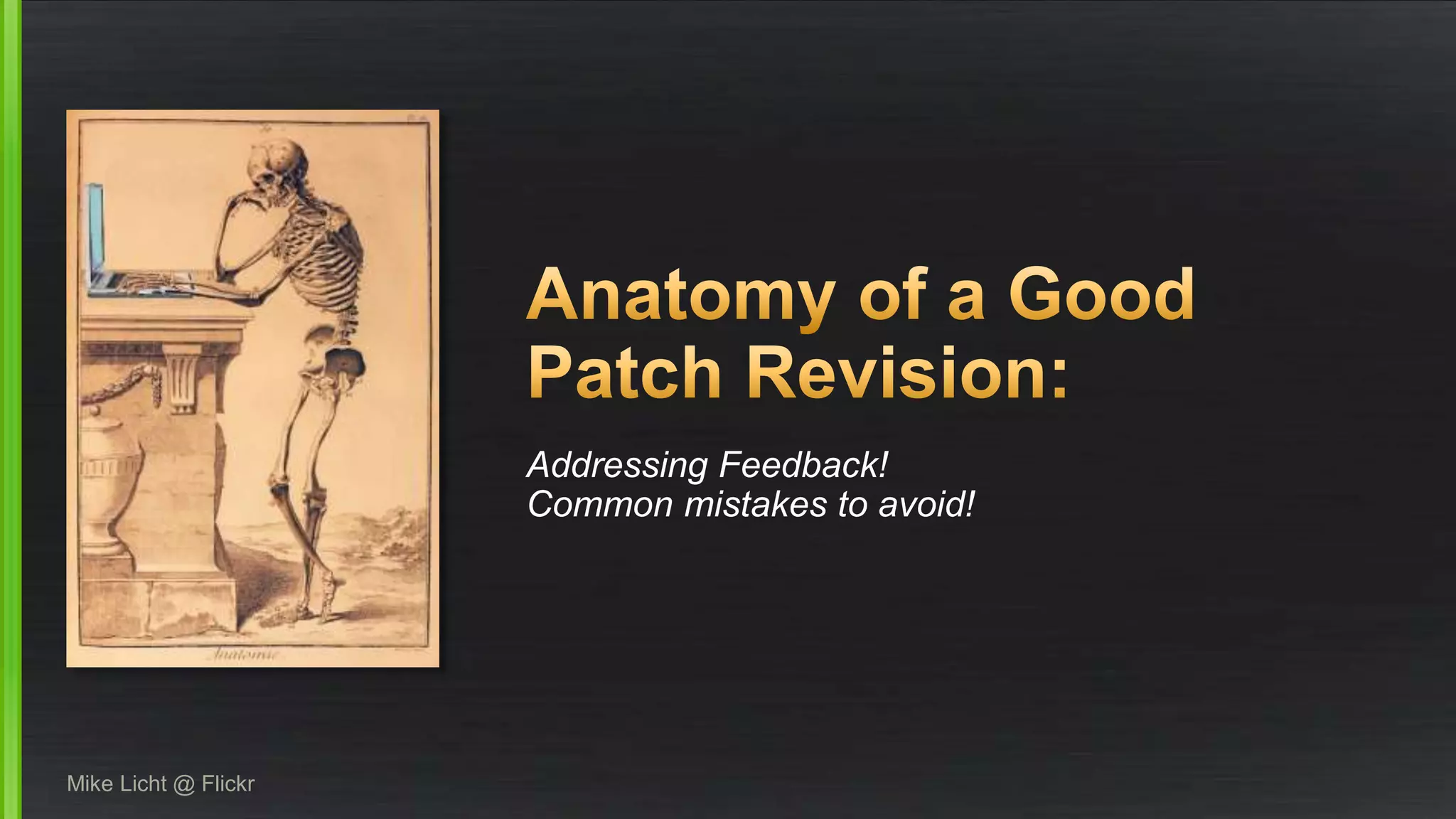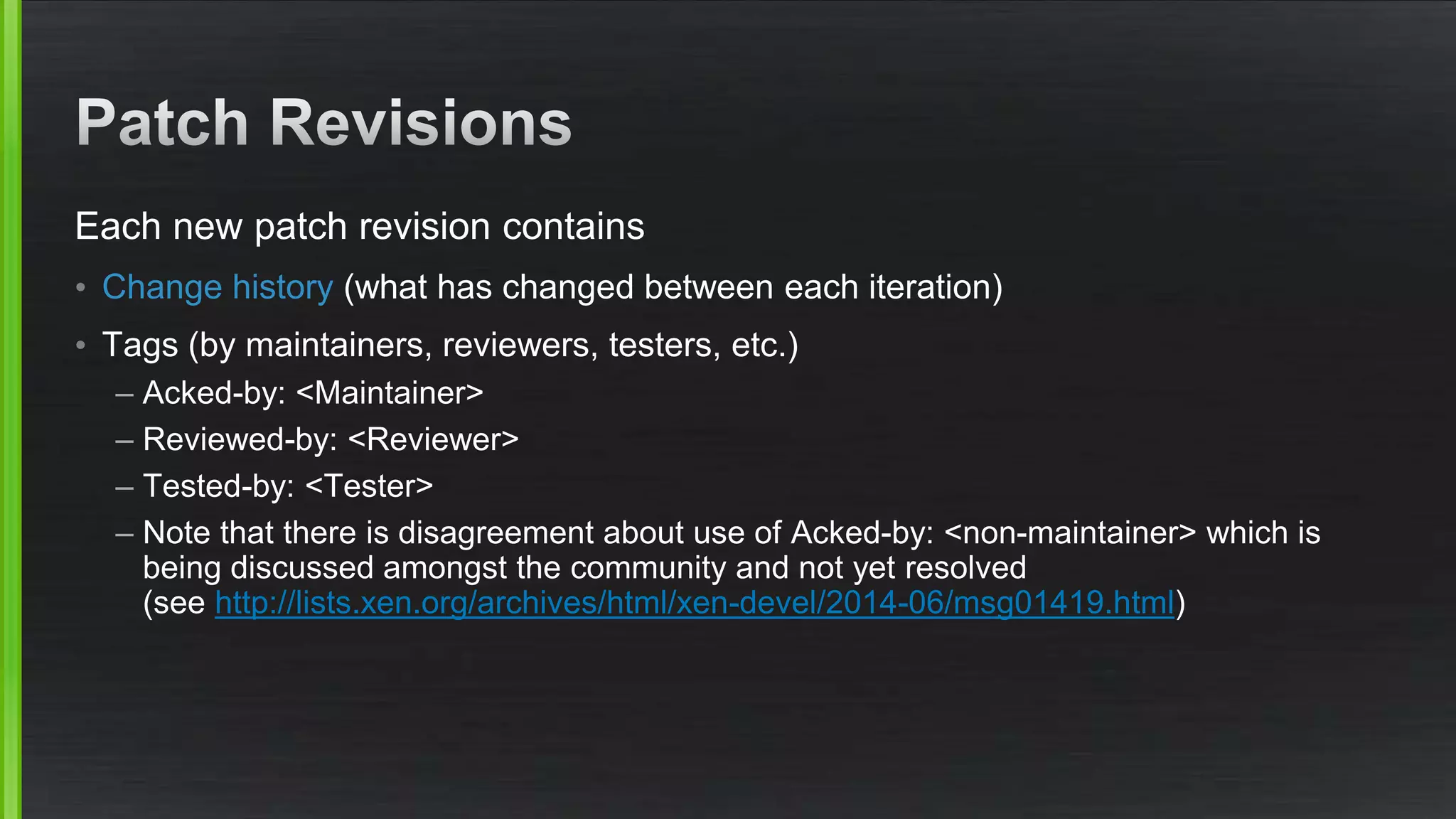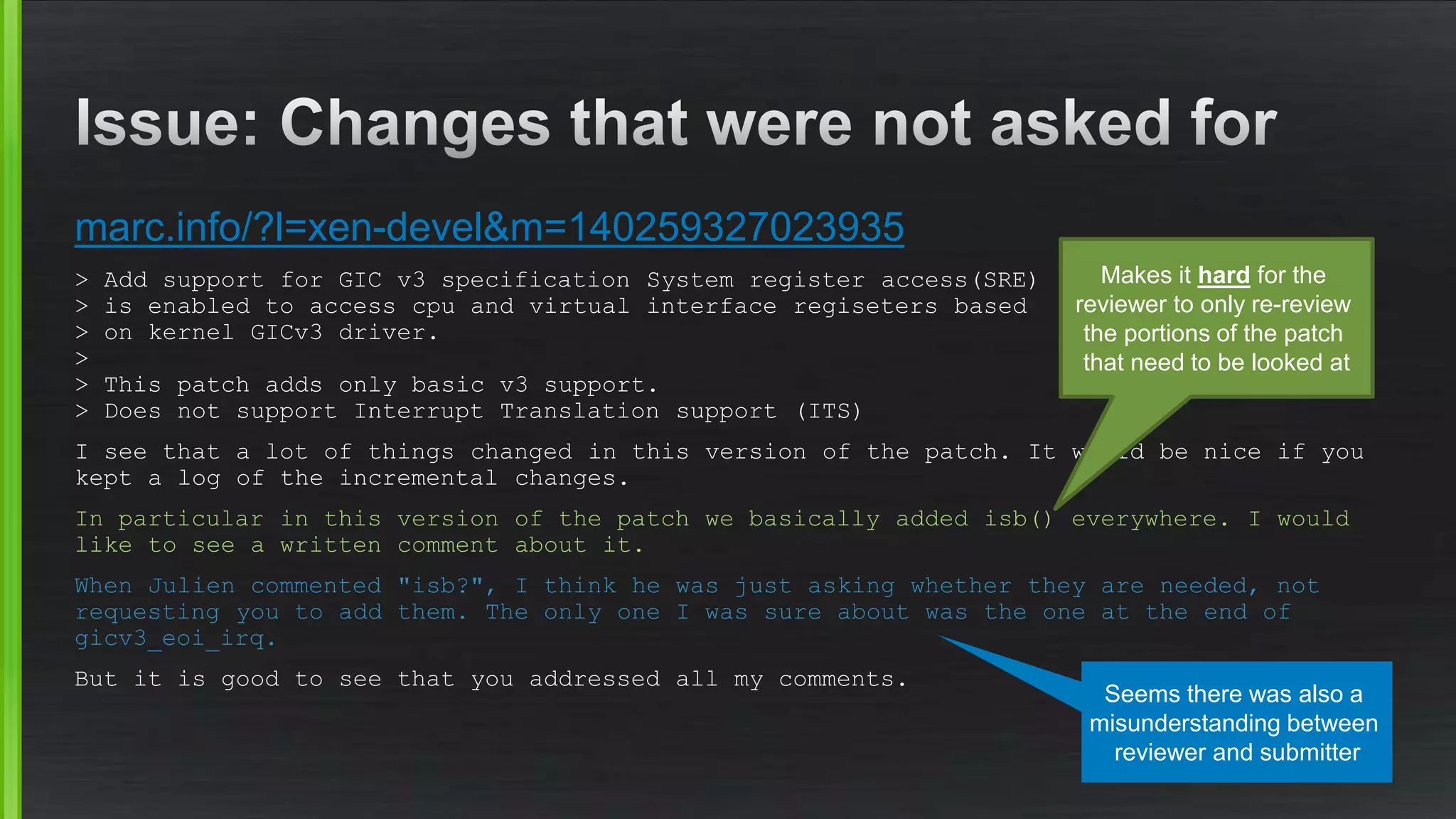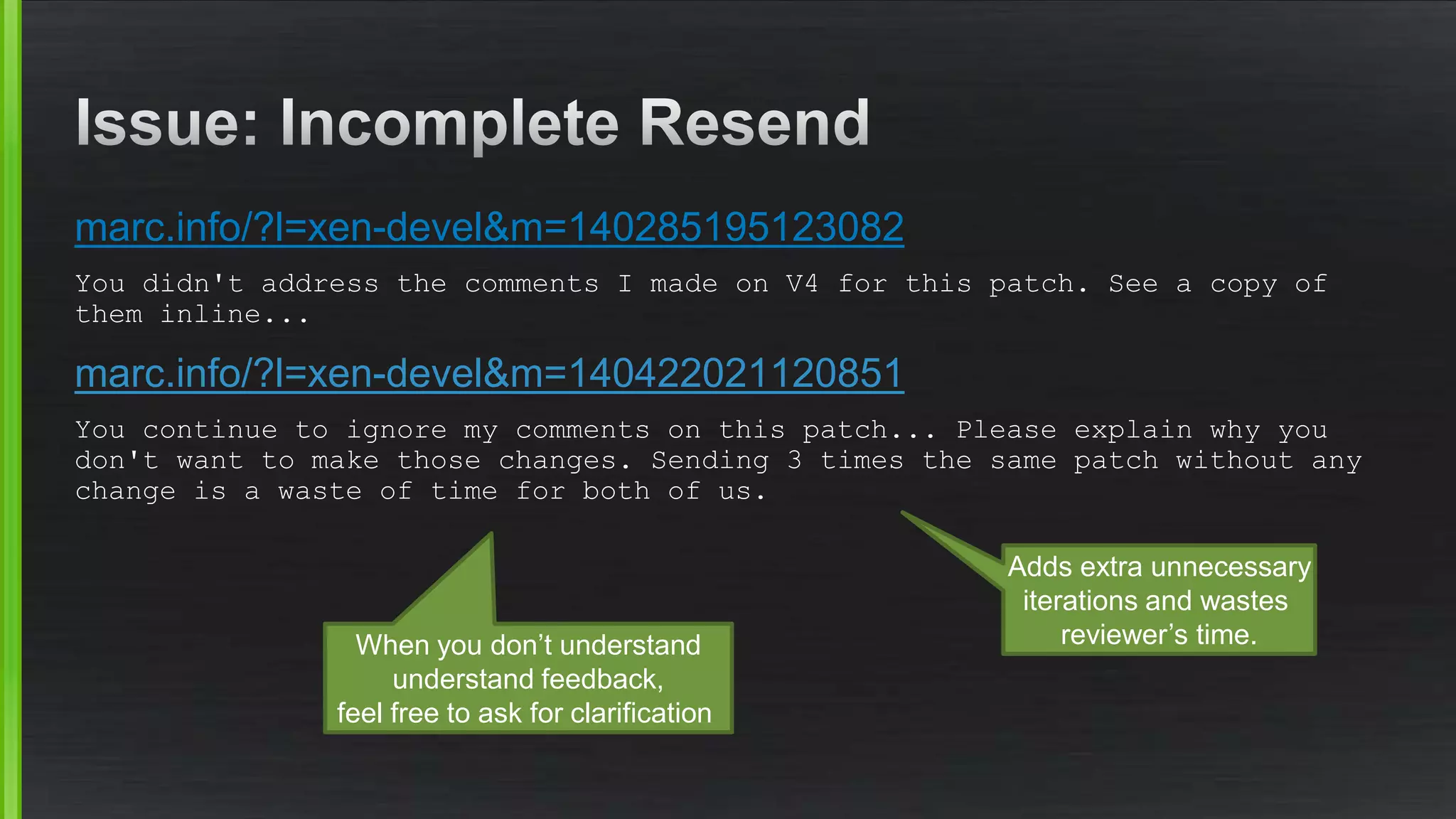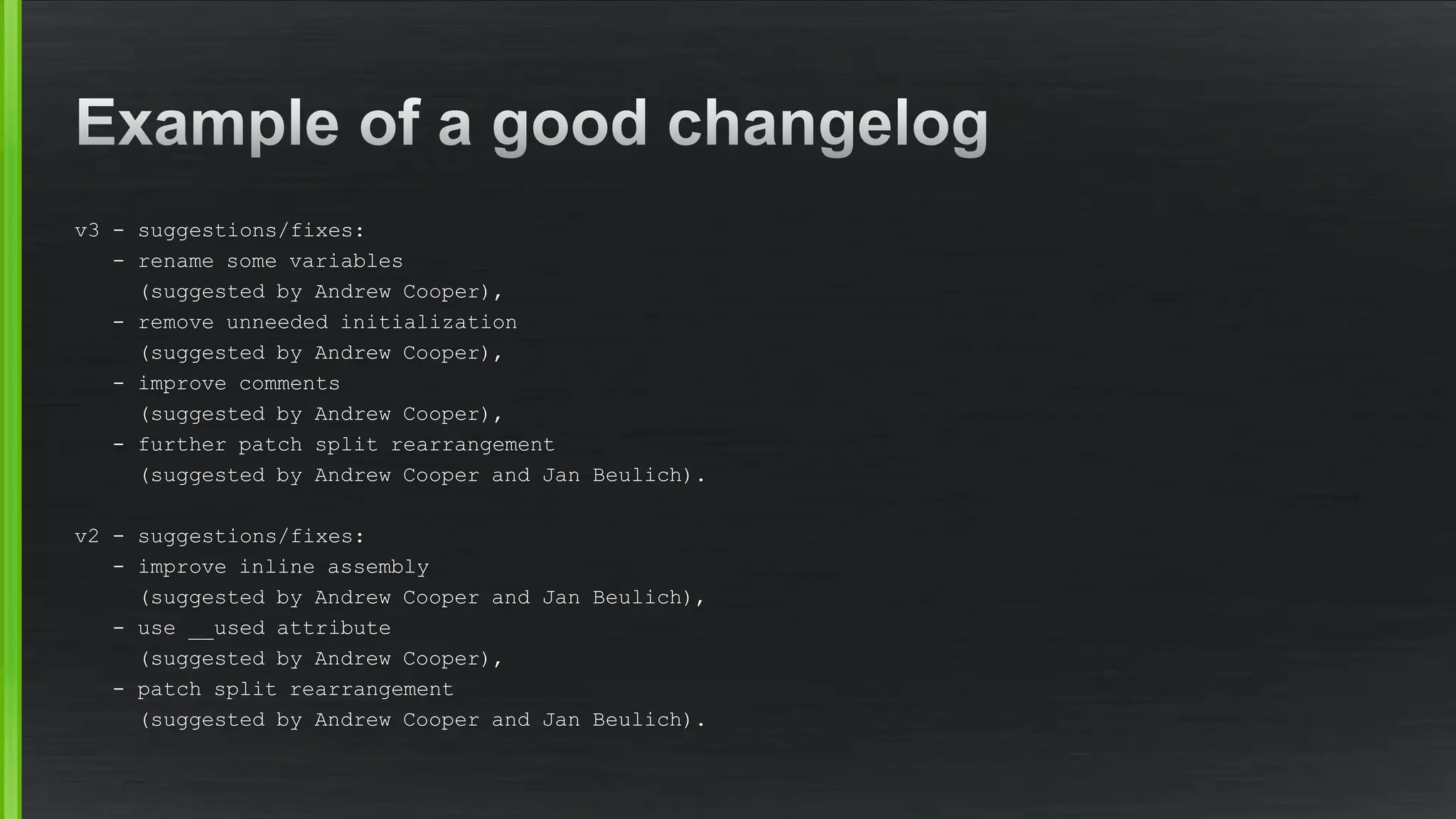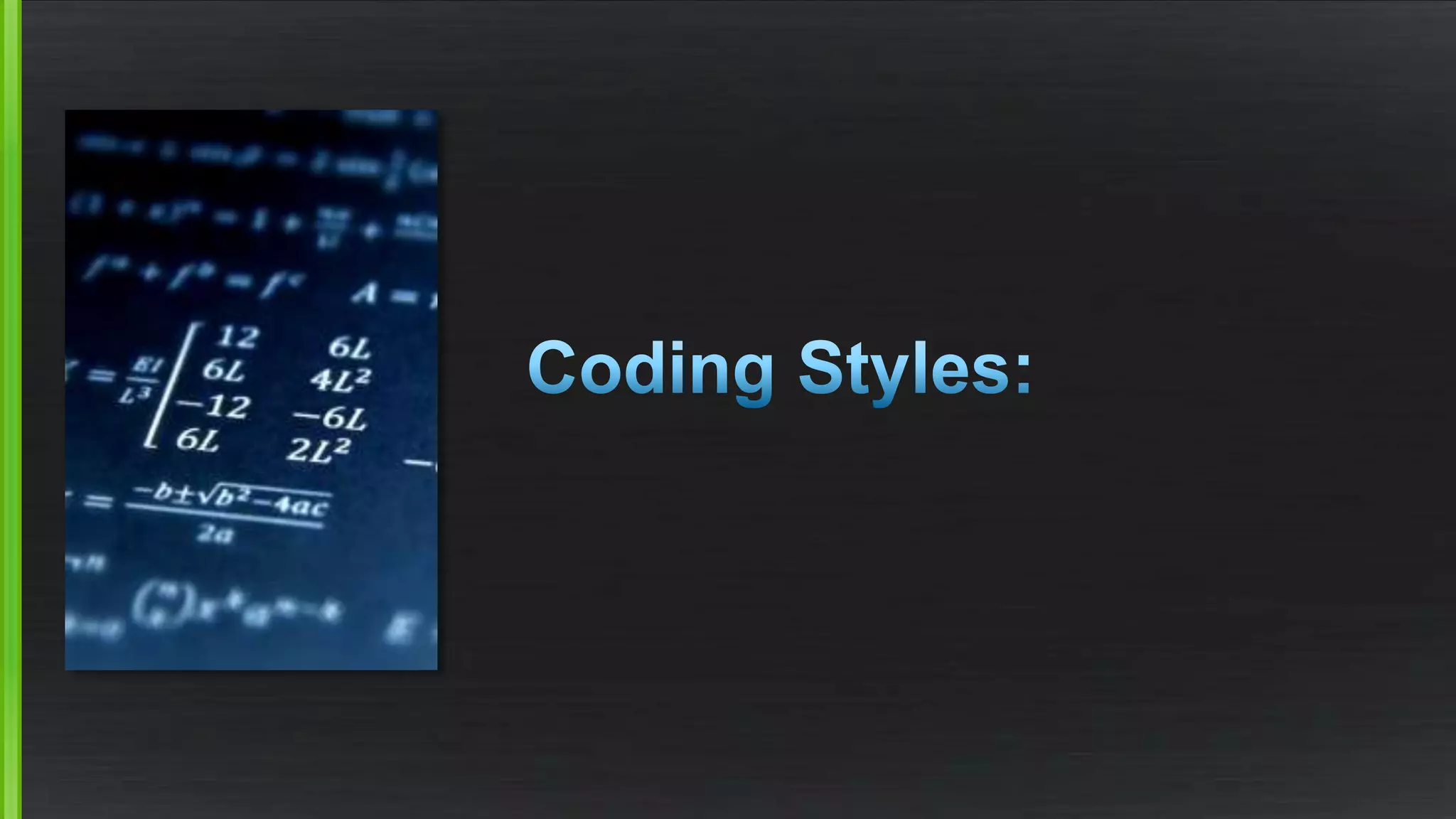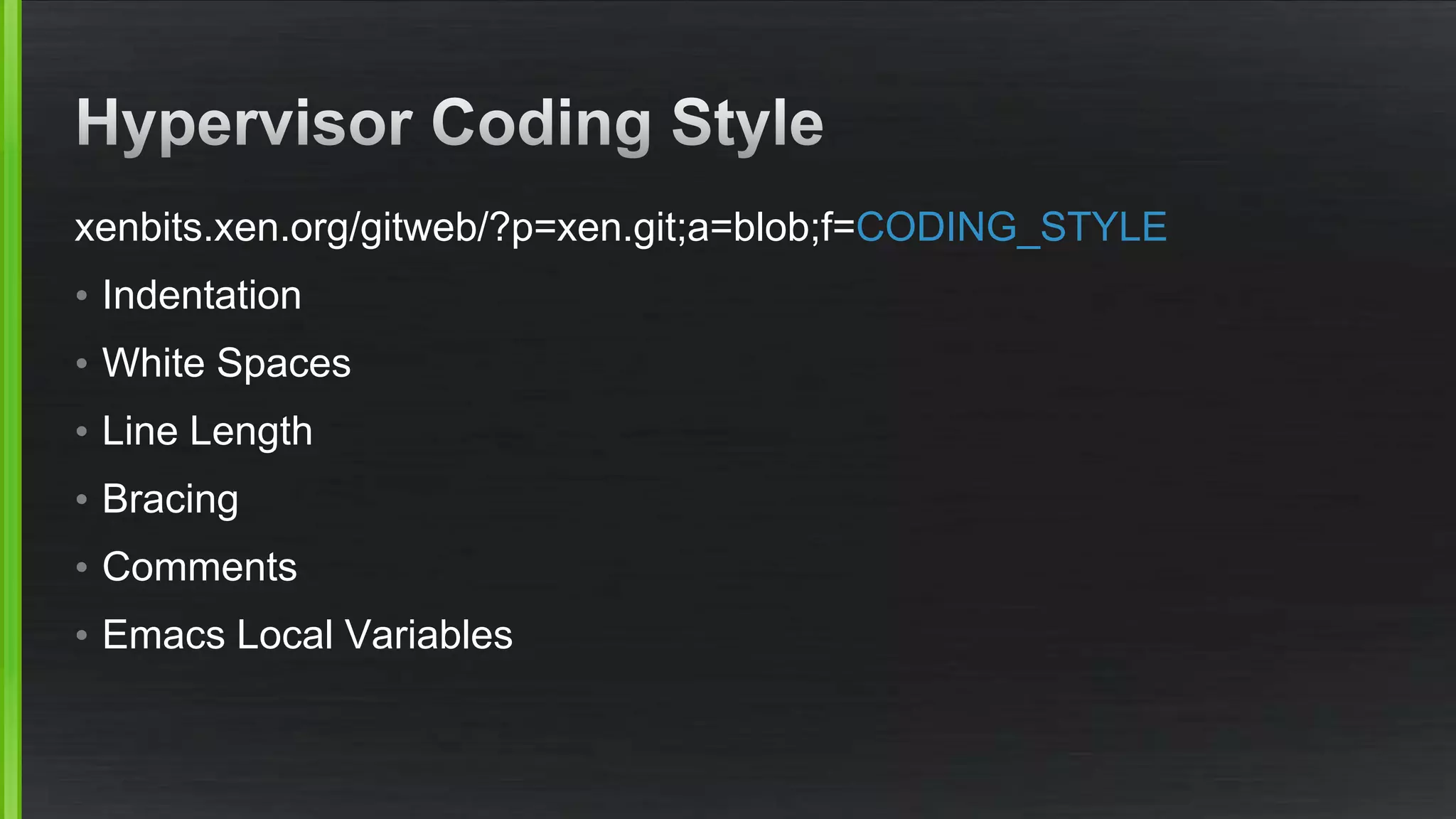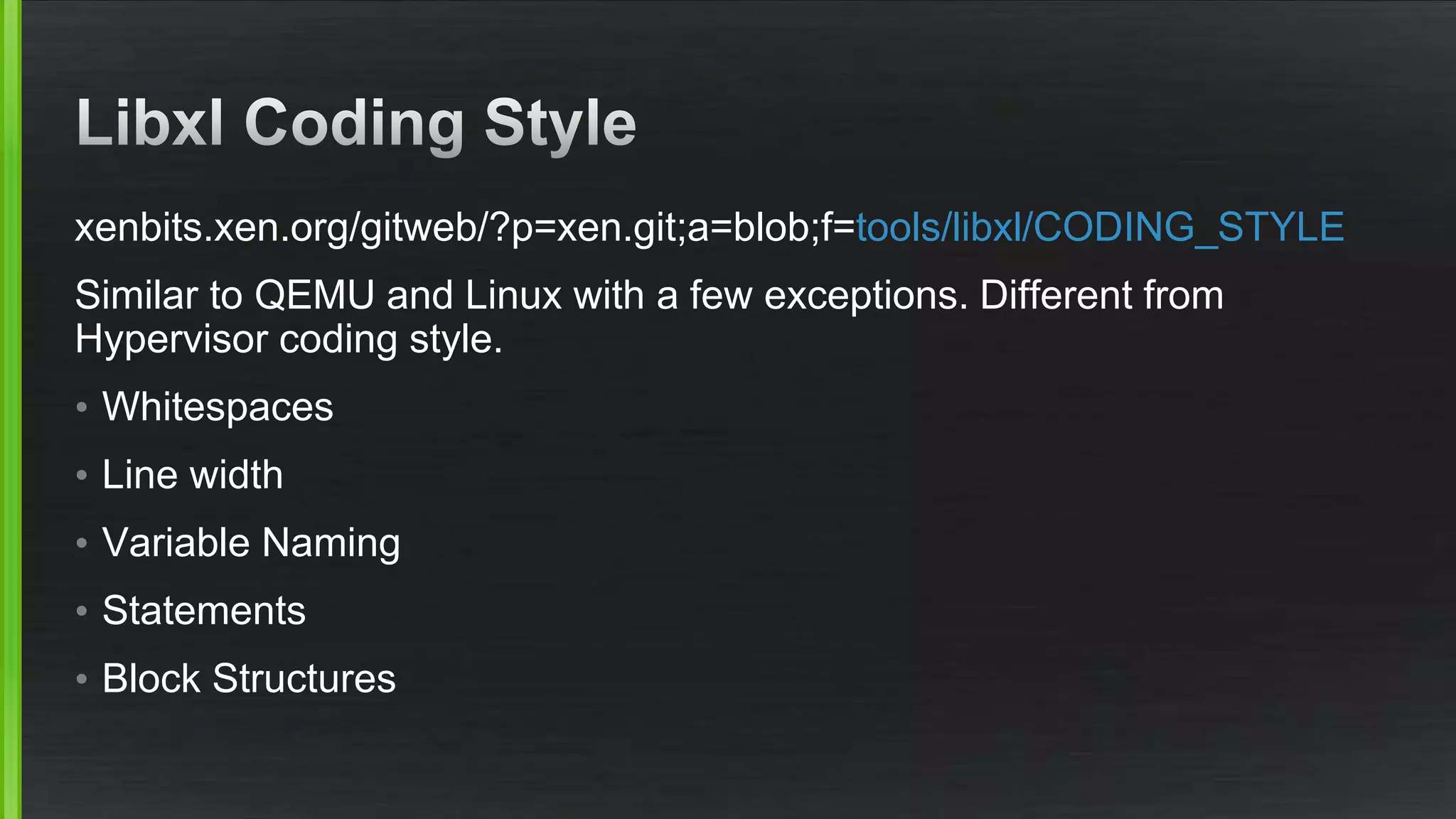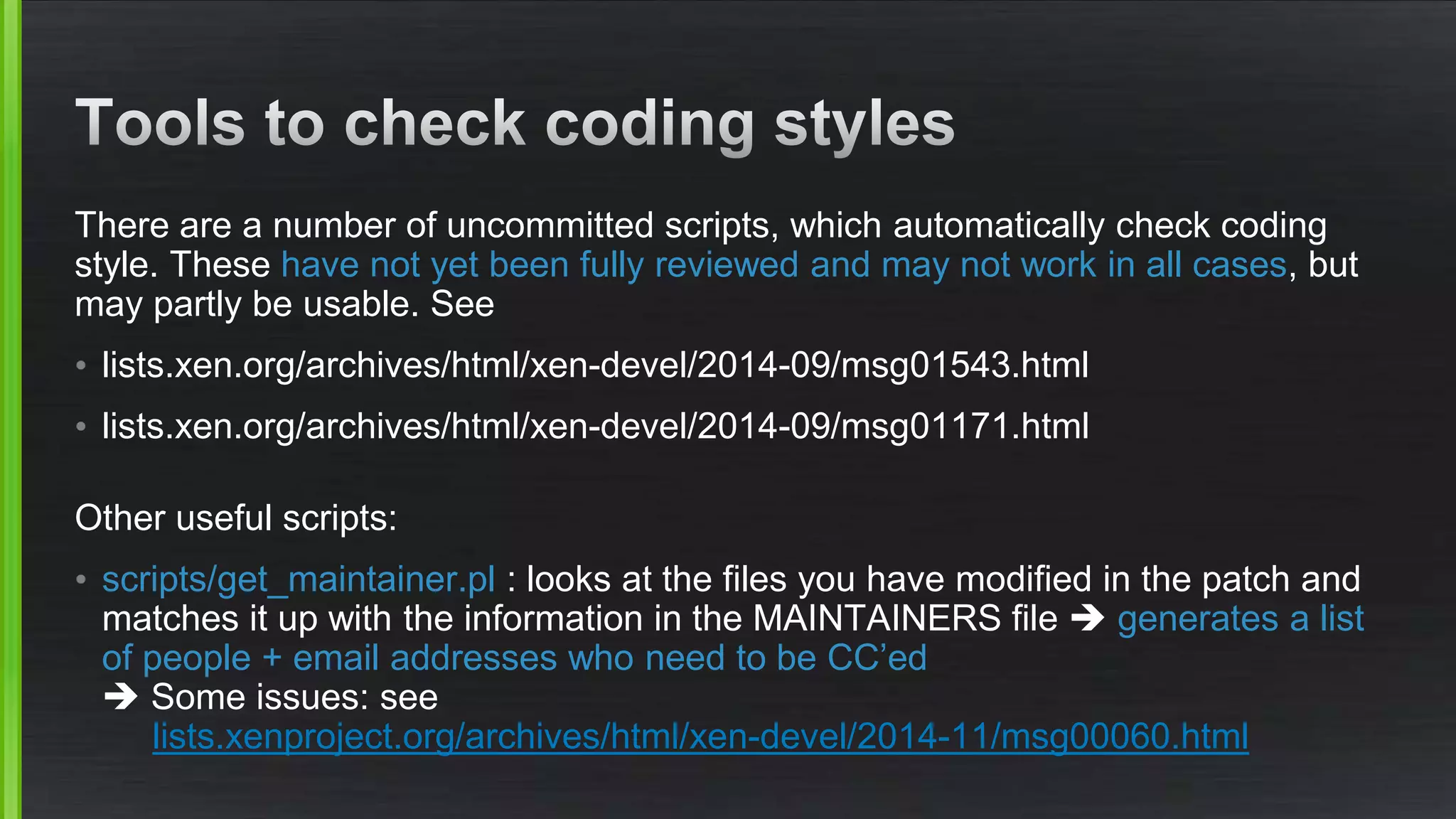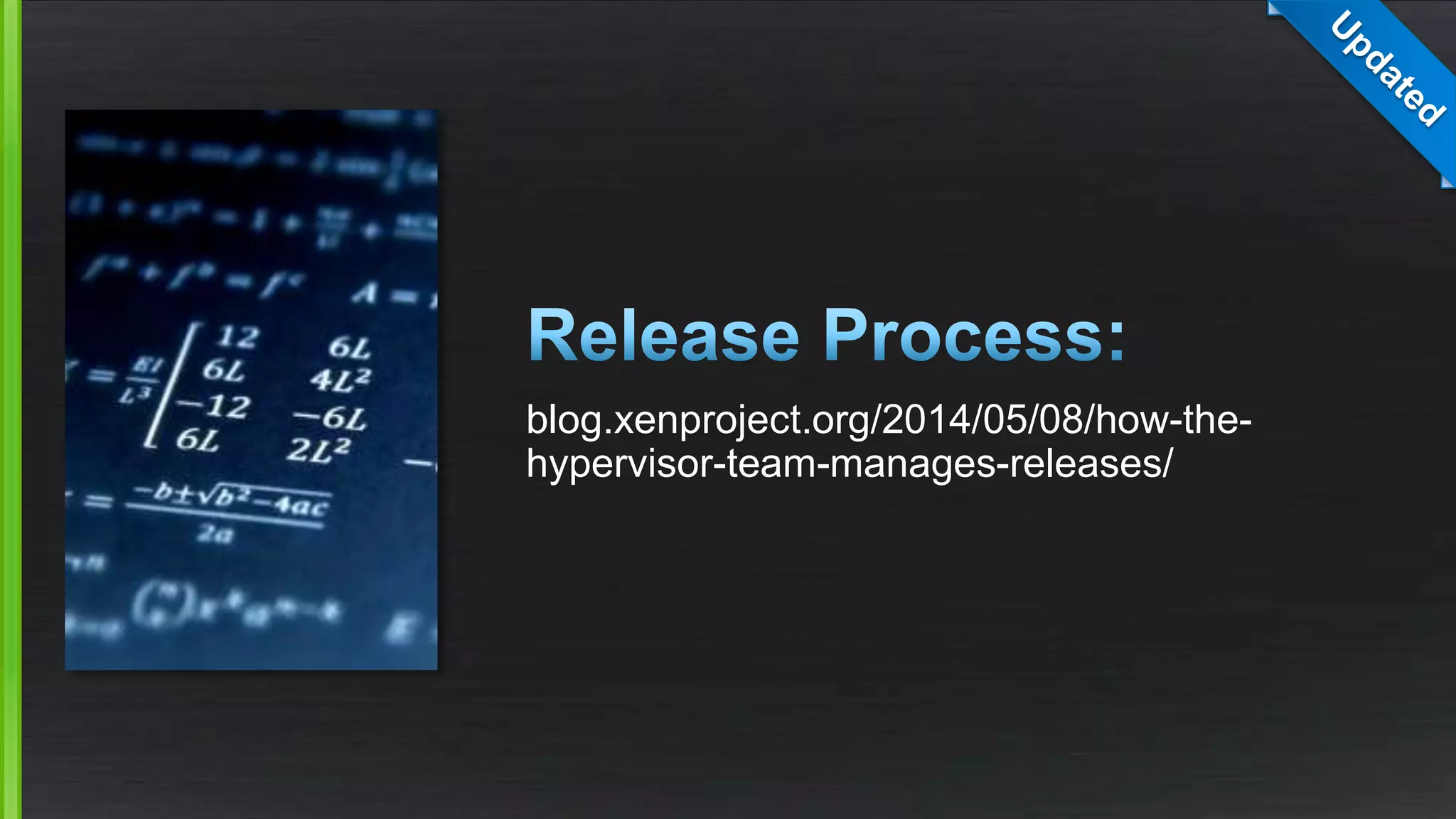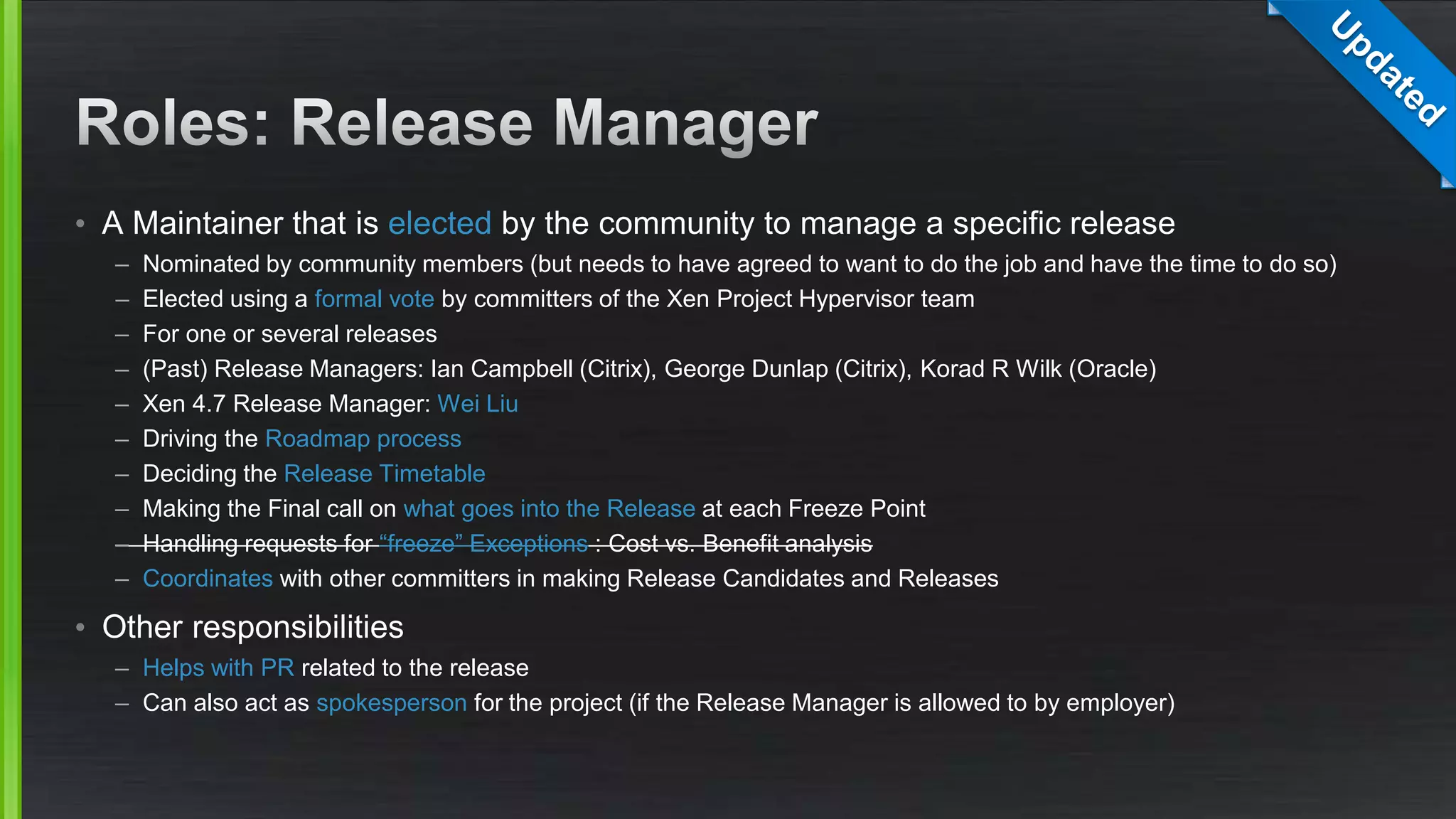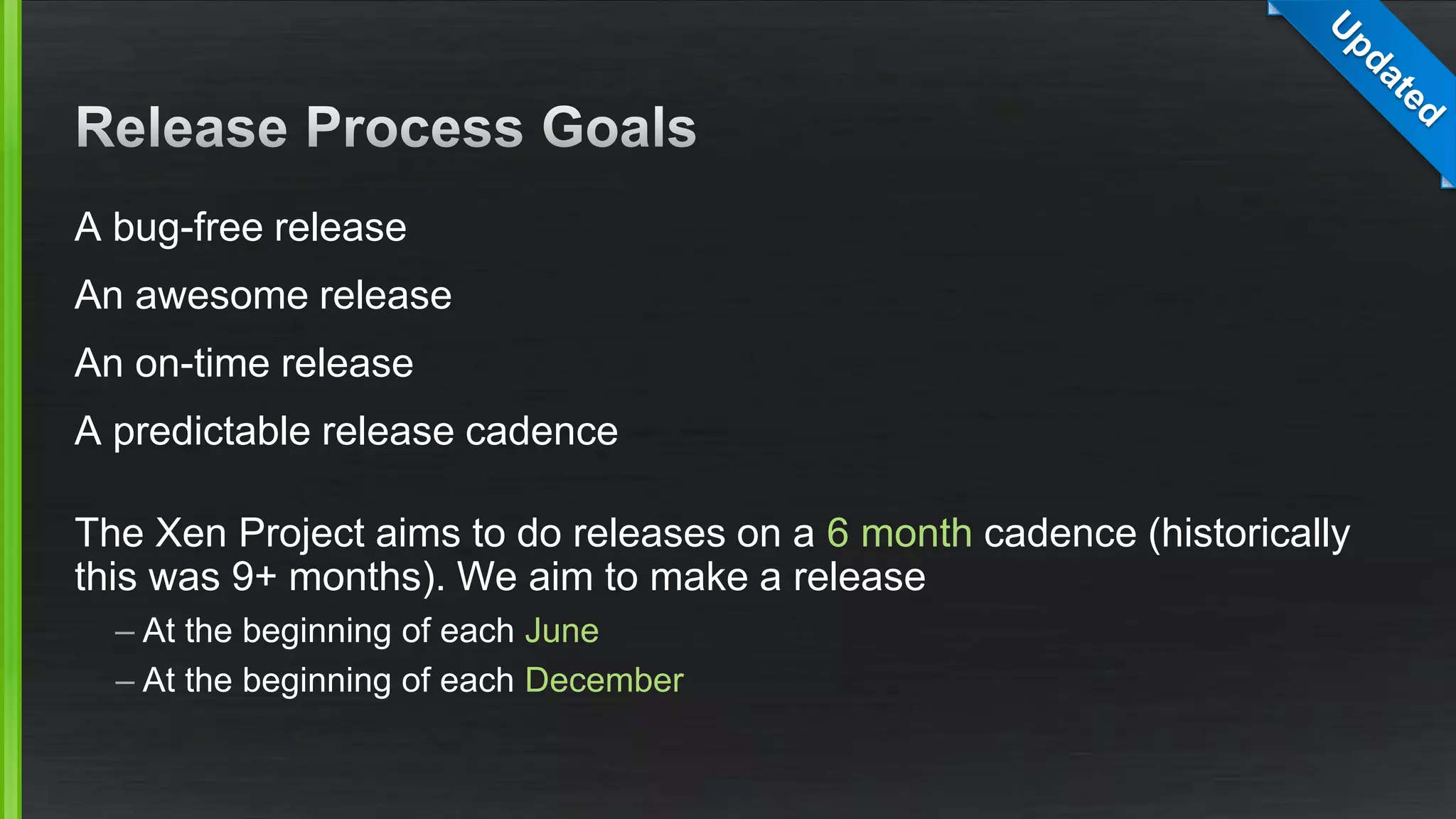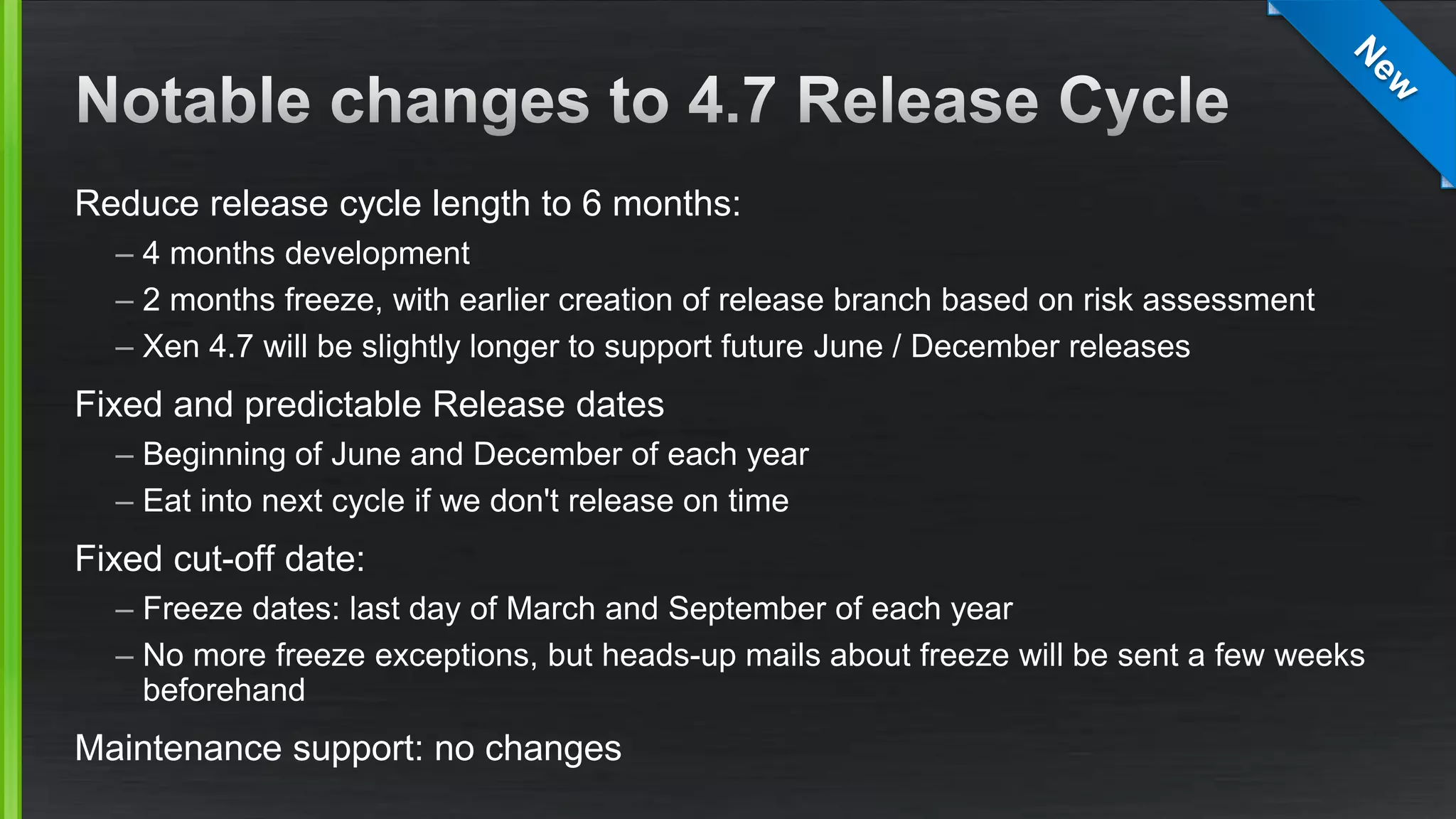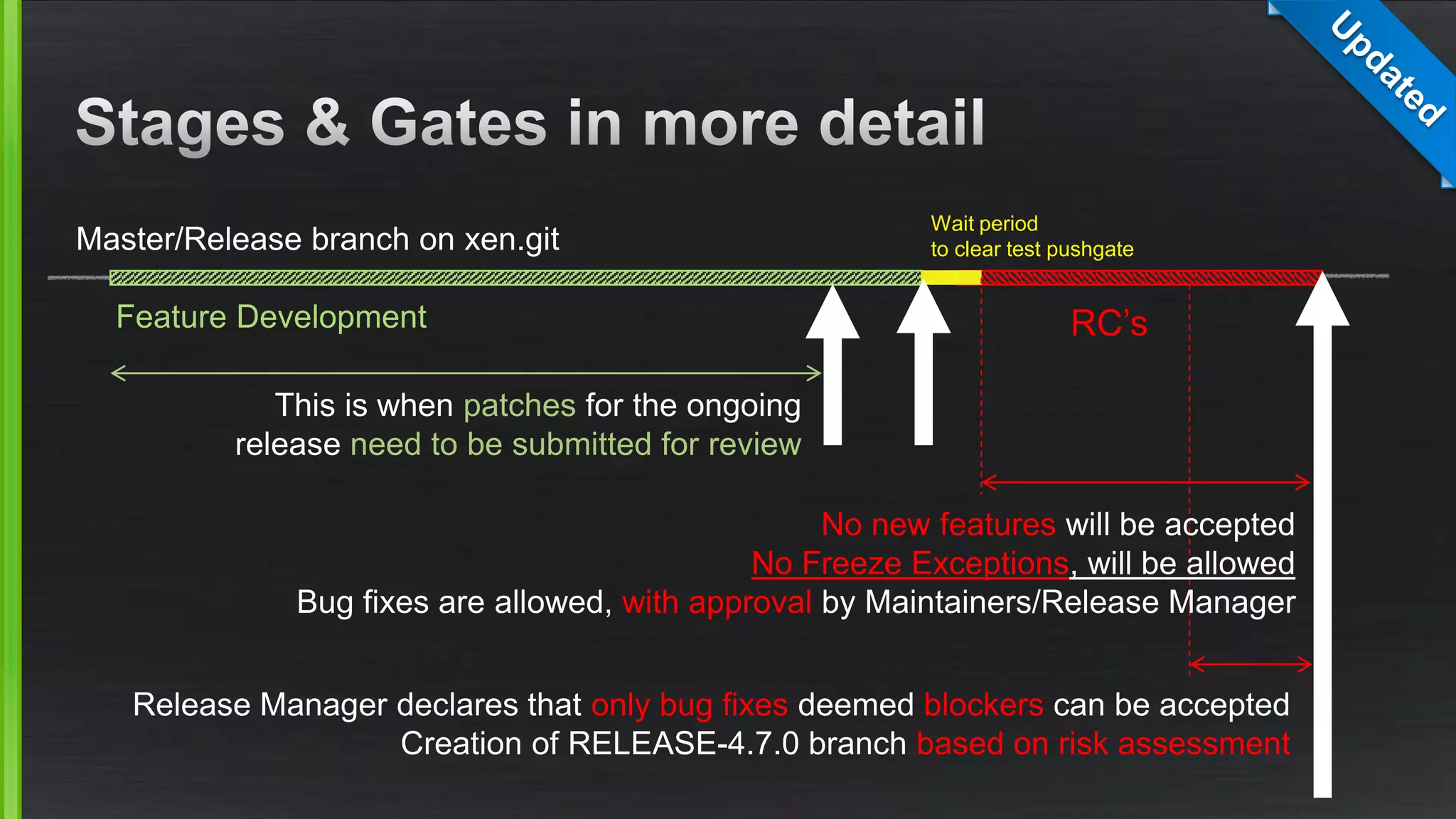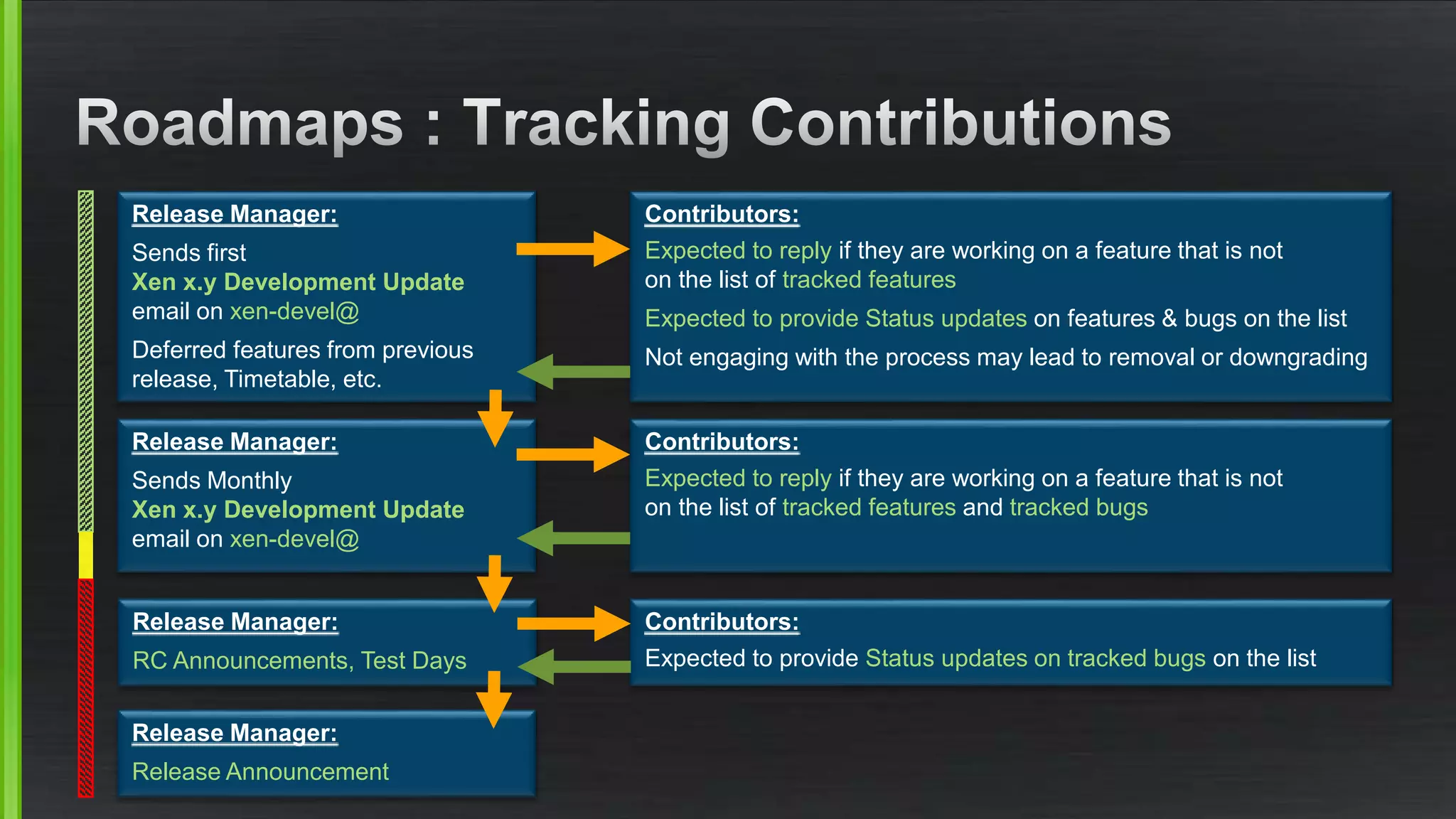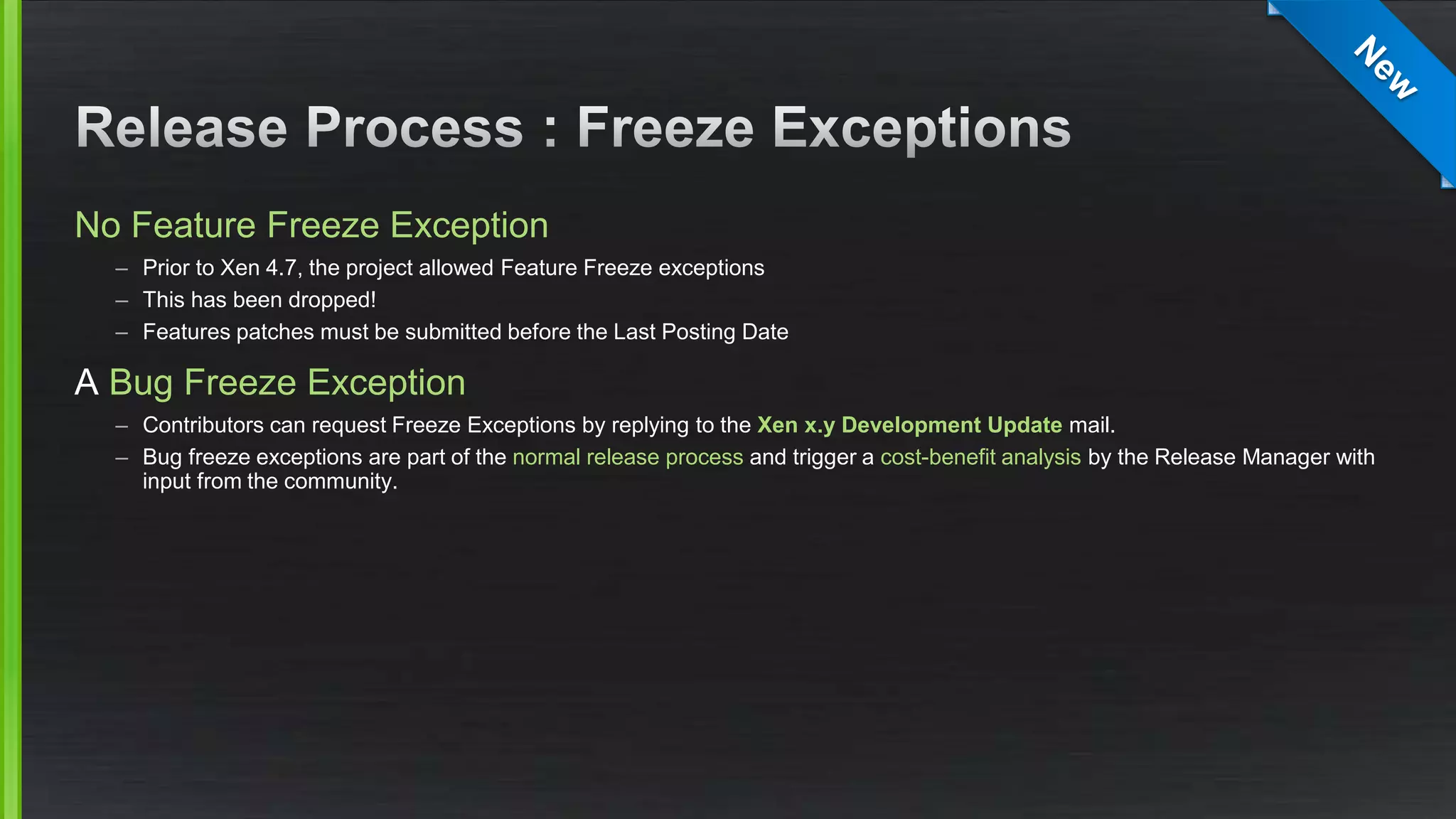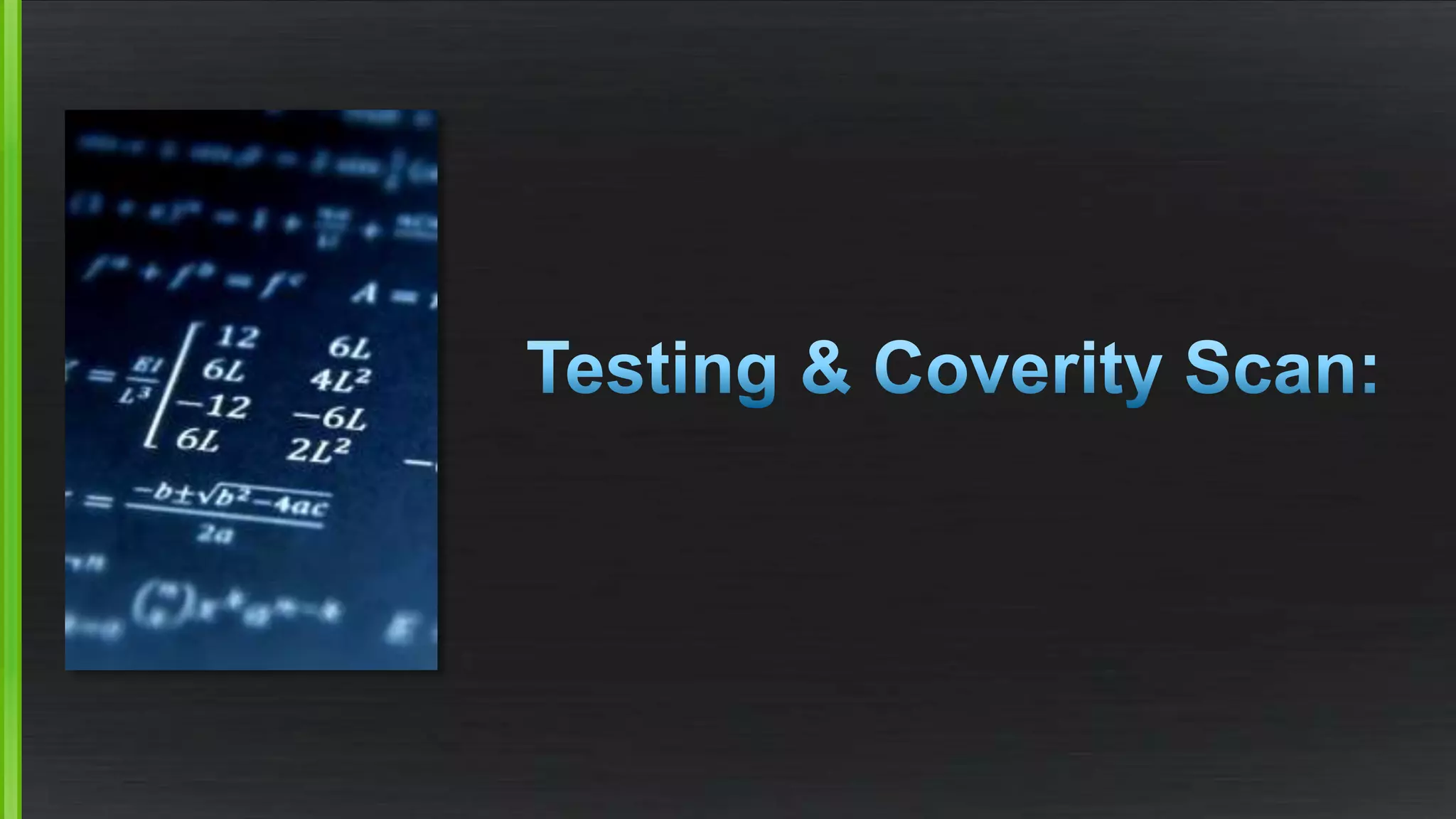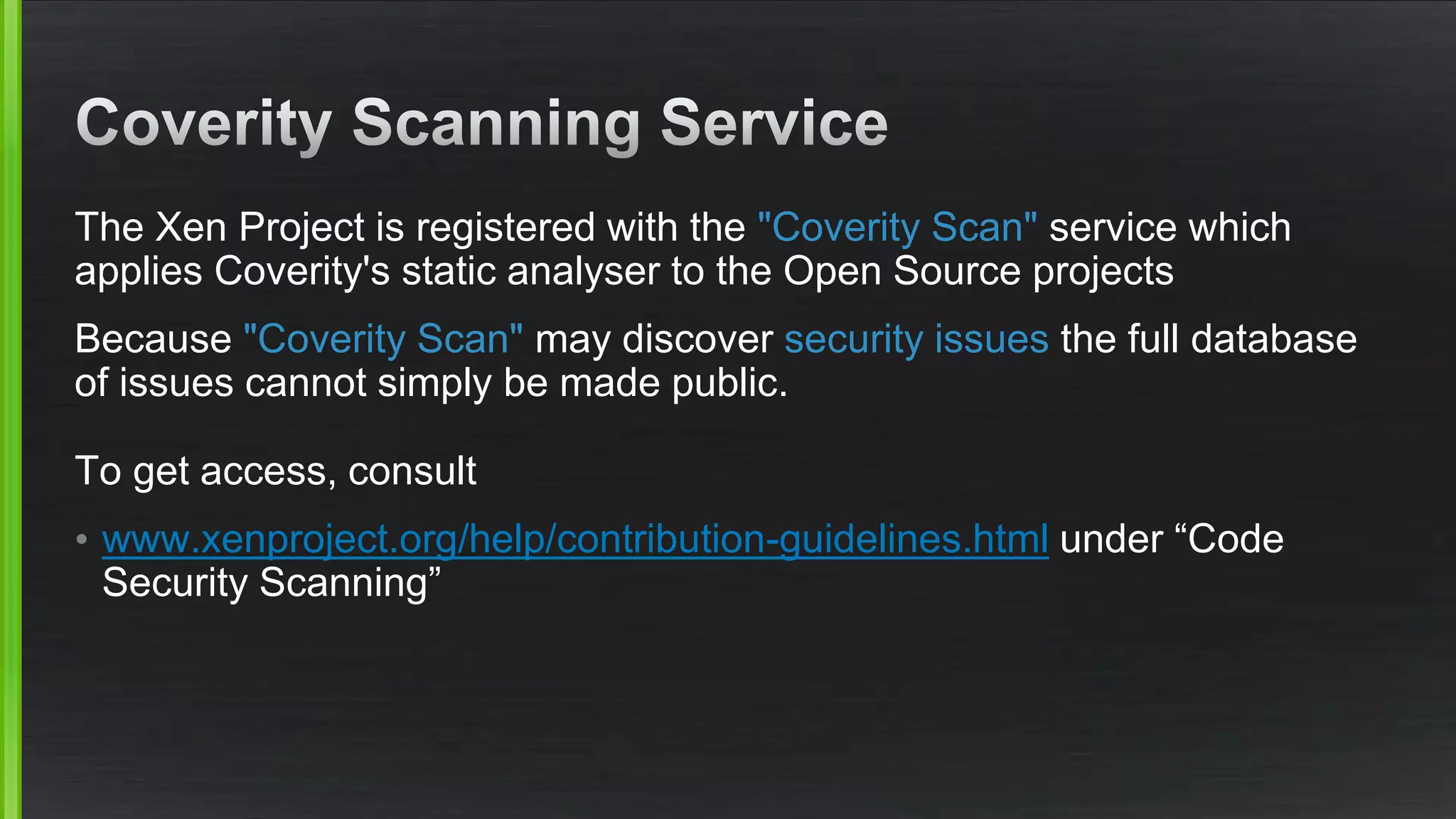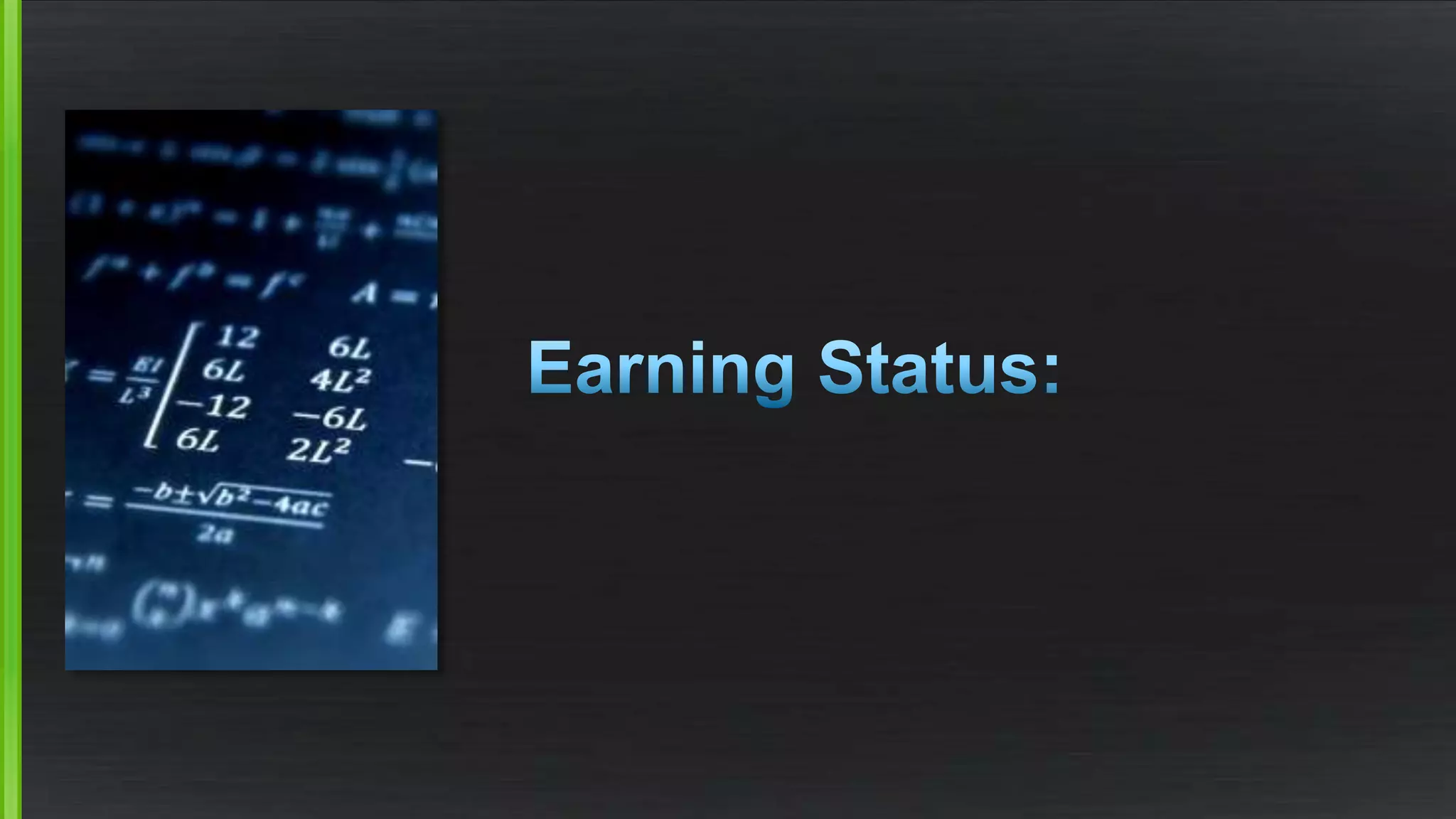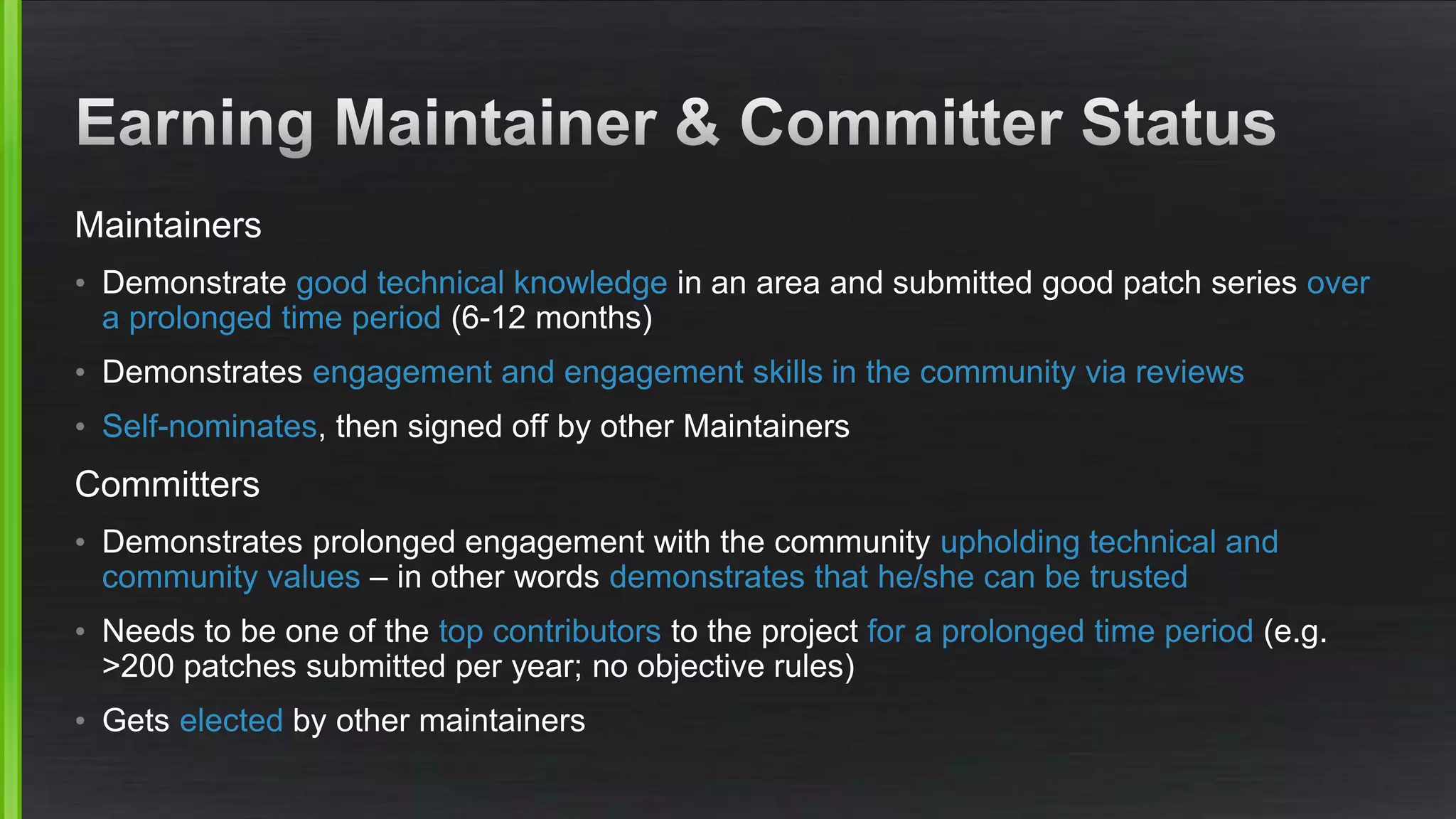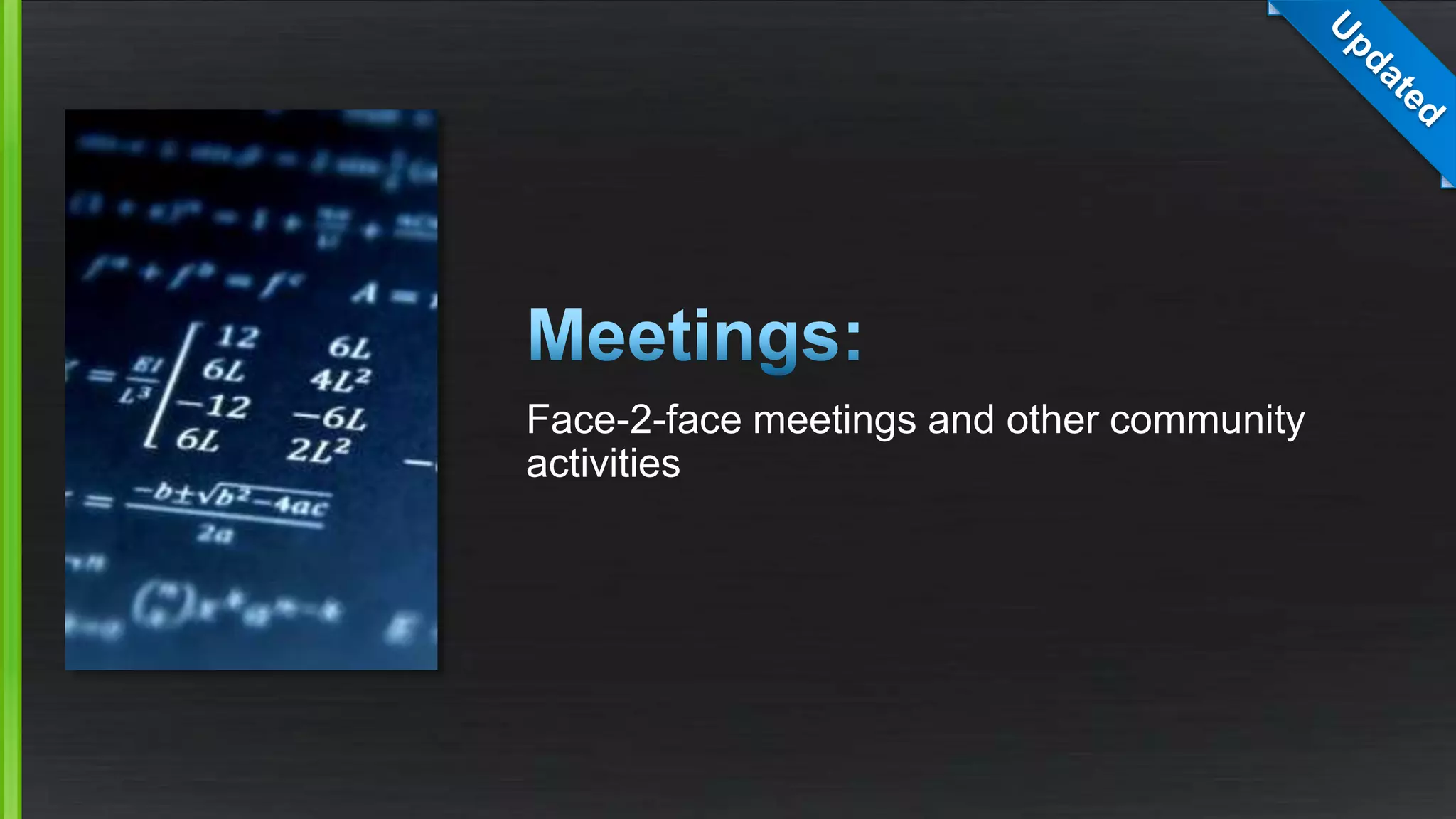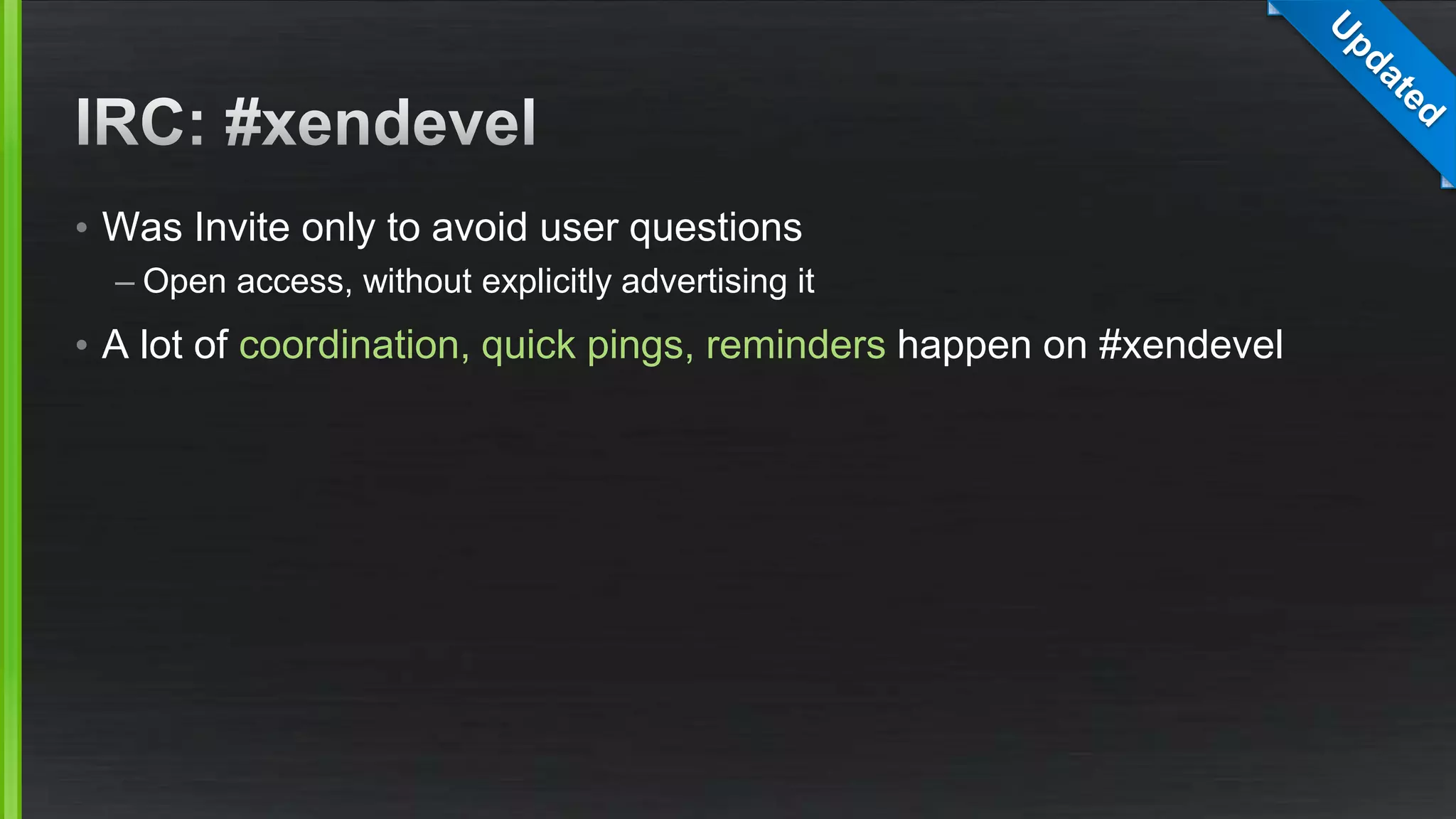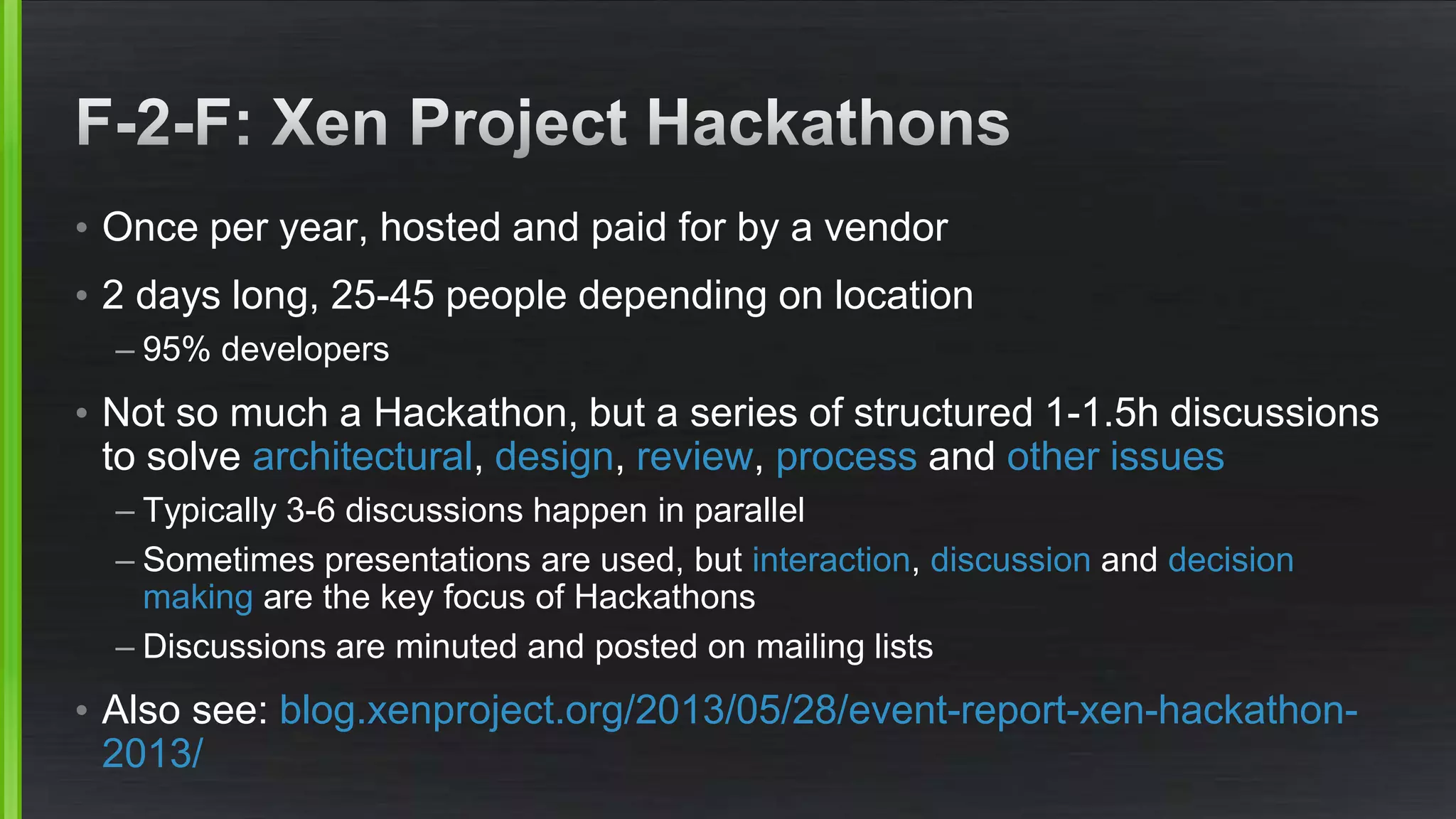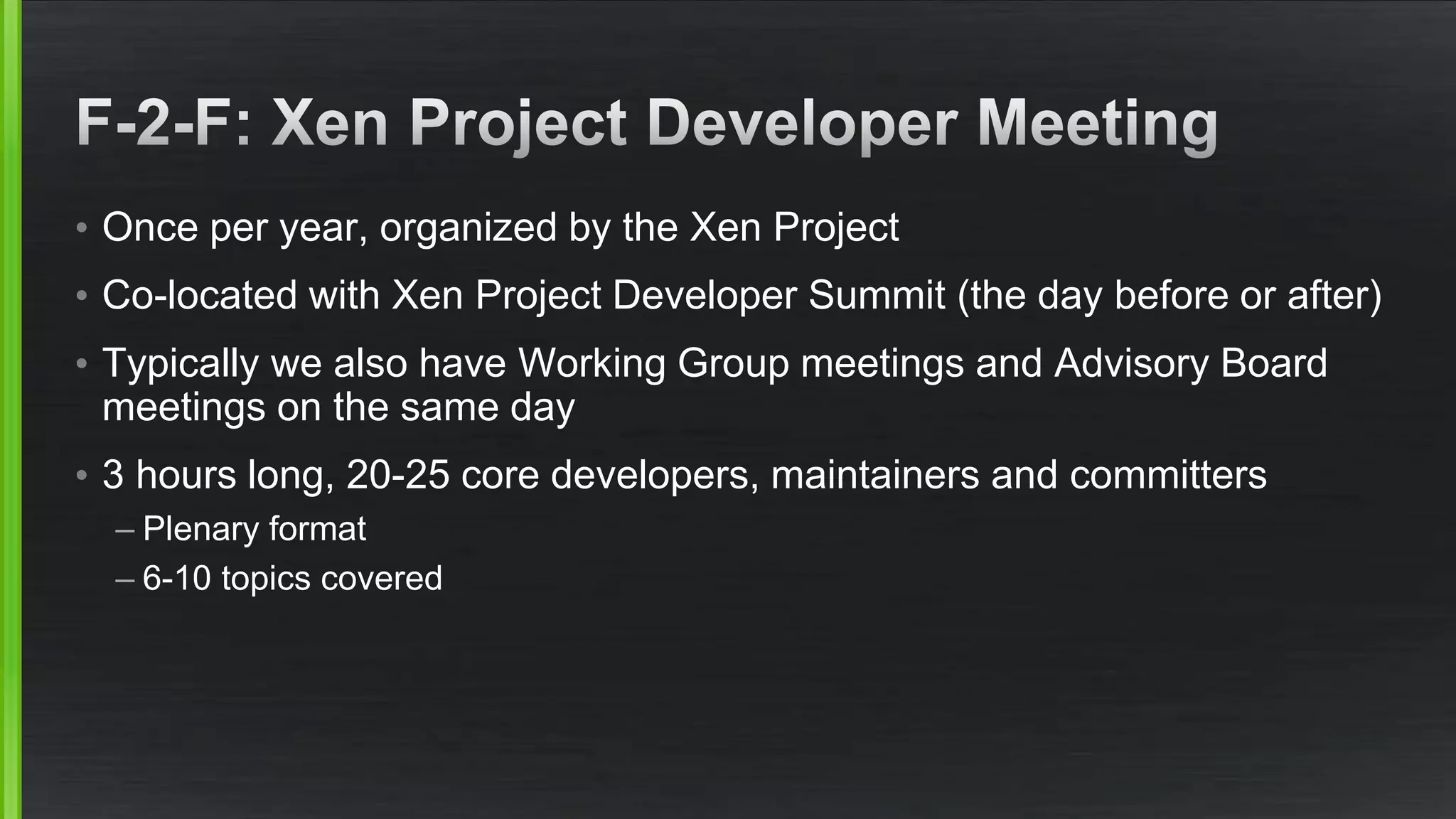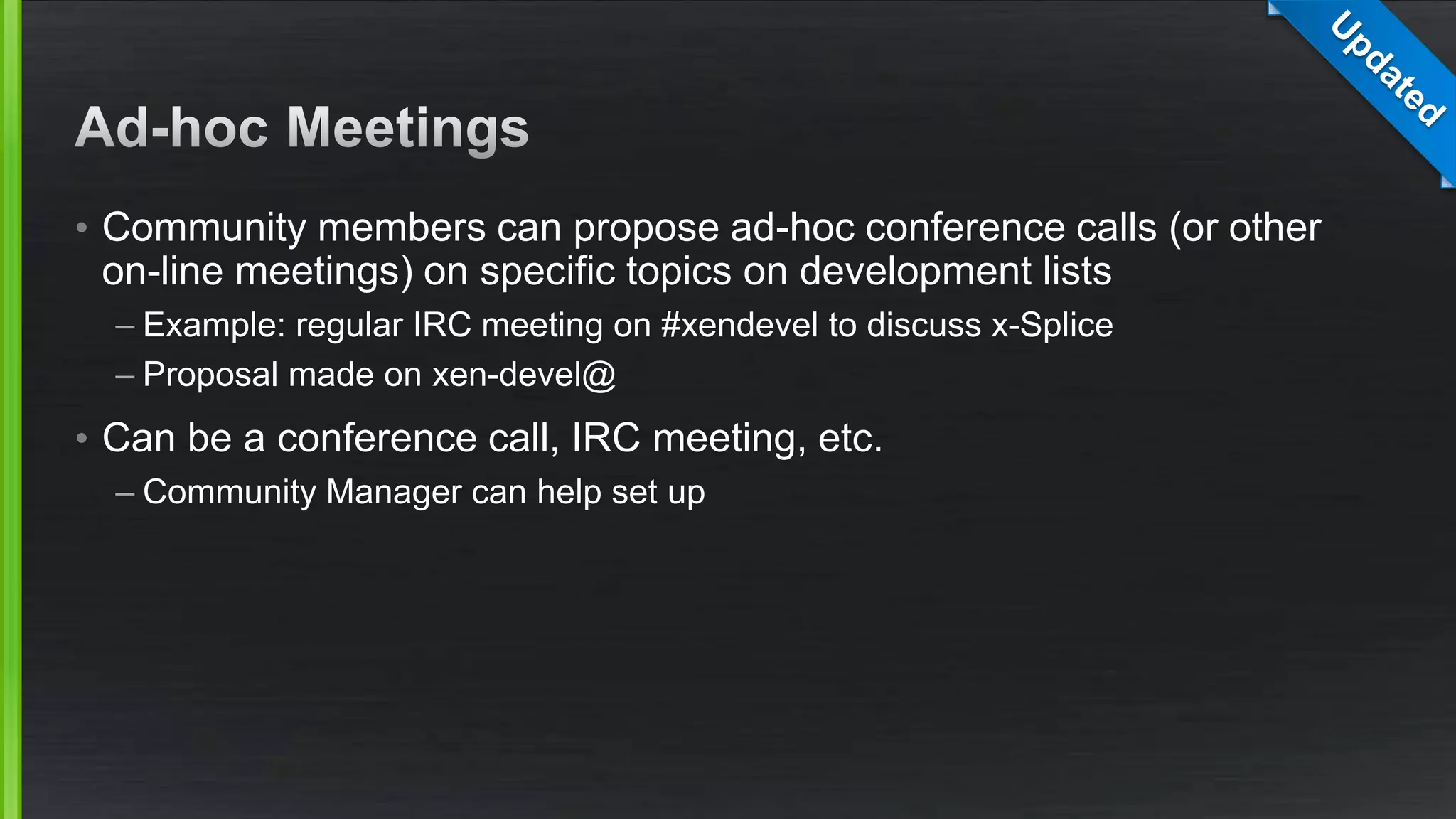The document outlines the governance principles and processes of the Xen Project open source hypervisor community. It discusses principles of openness, transparency and meritocracy. It describes roles like maintainers, committers and project leads. It covers topics like decision making, design reviews, release processes, earning status, and resolving conflicts.
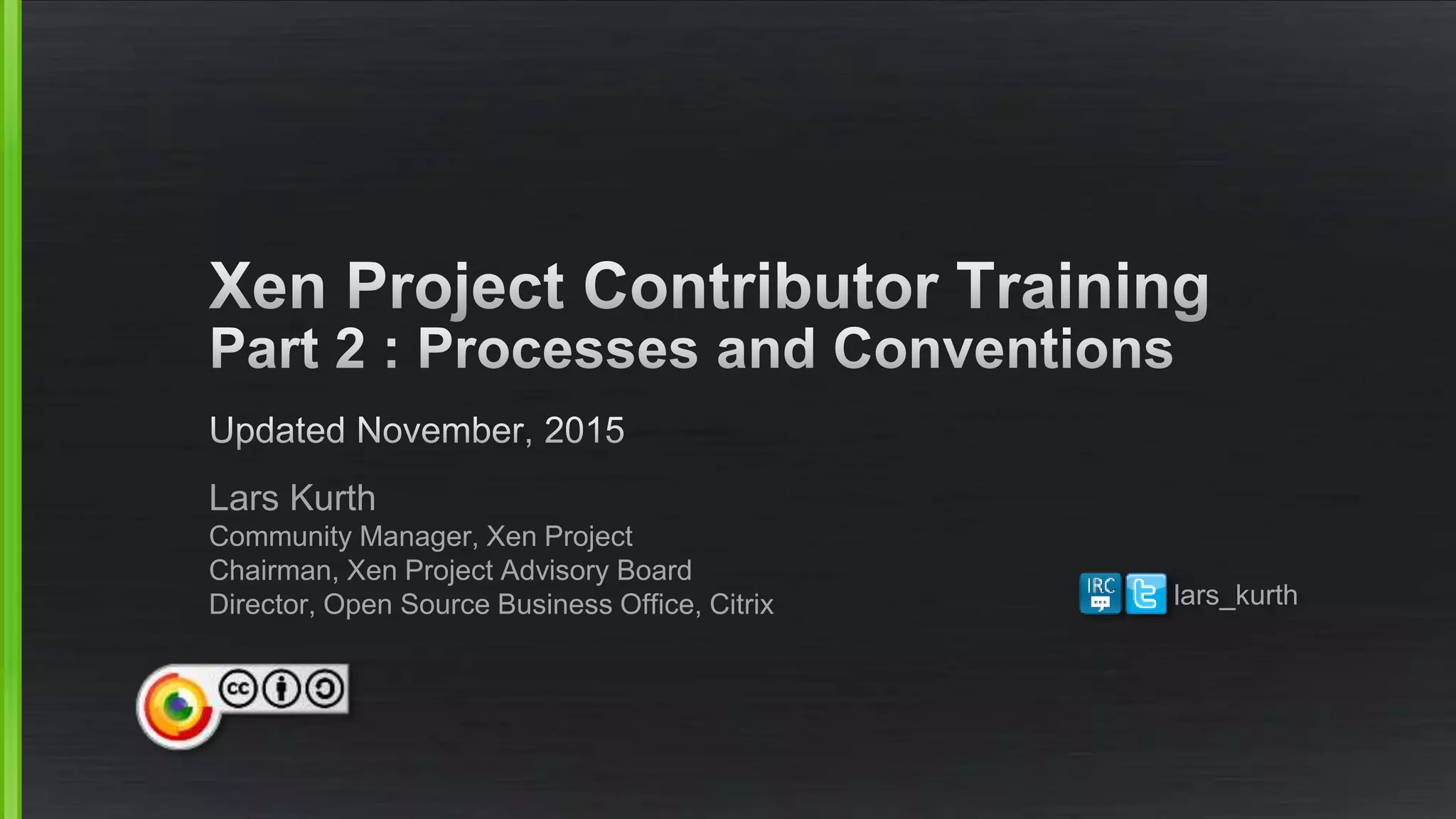
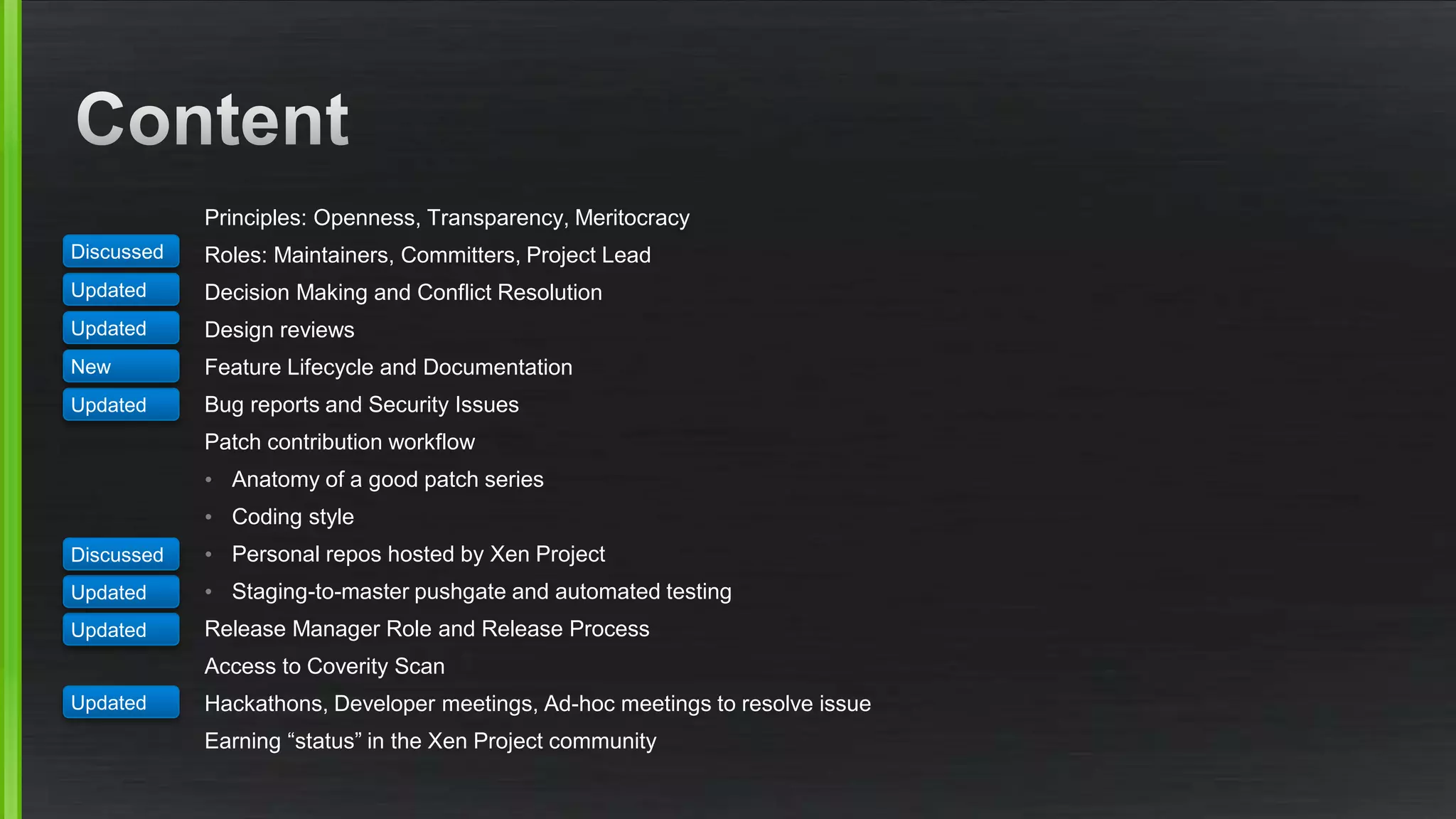
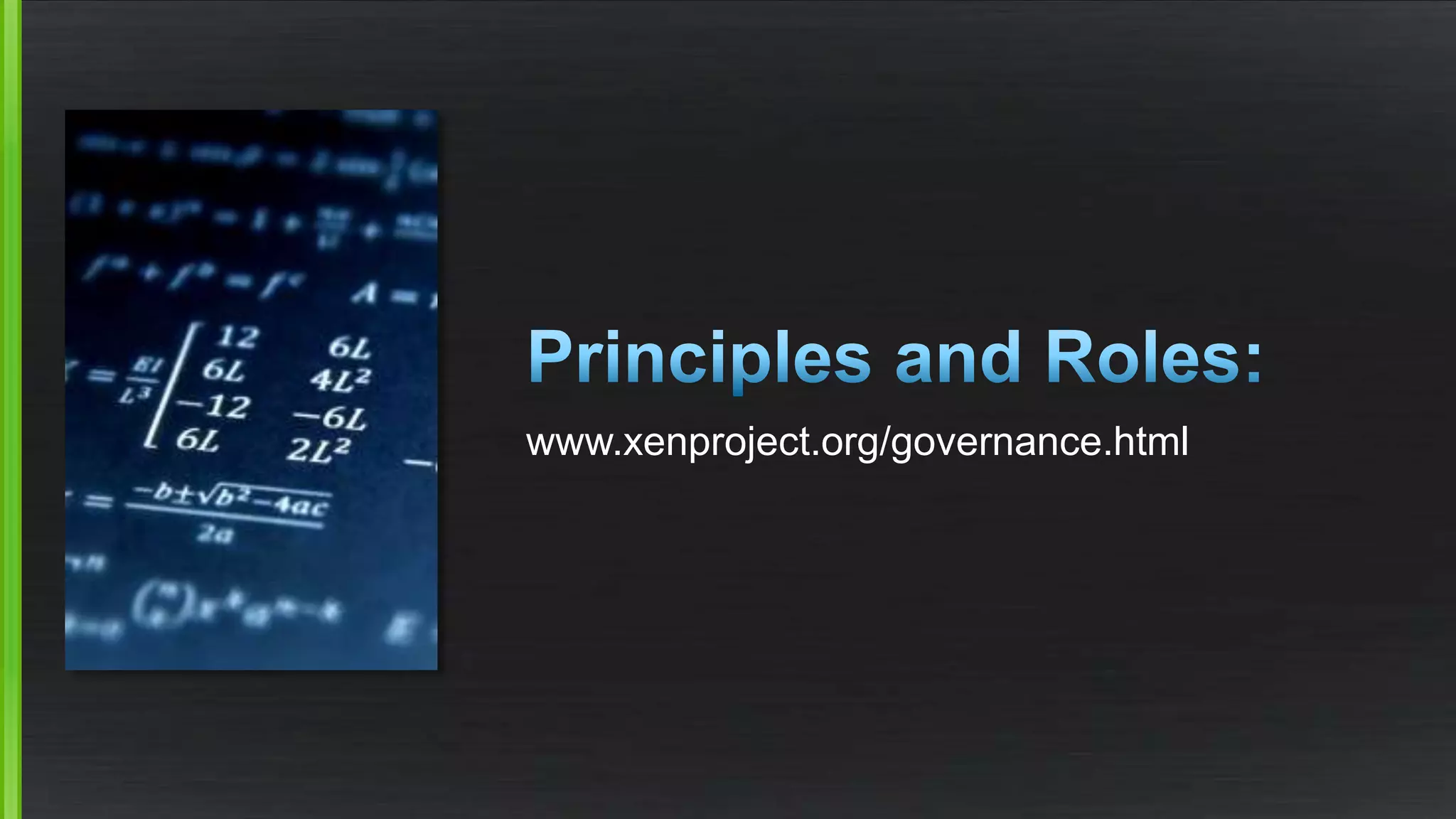
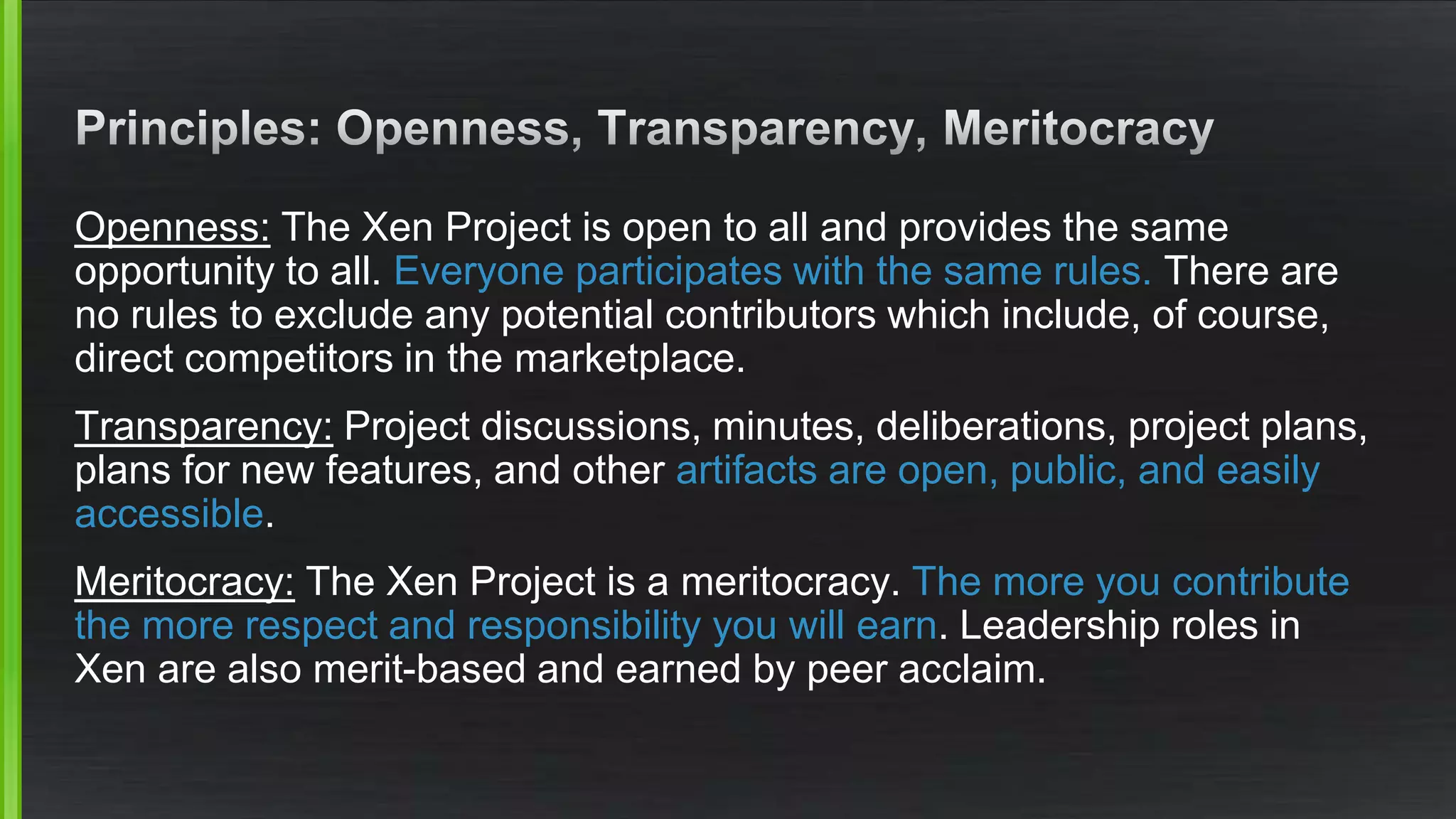
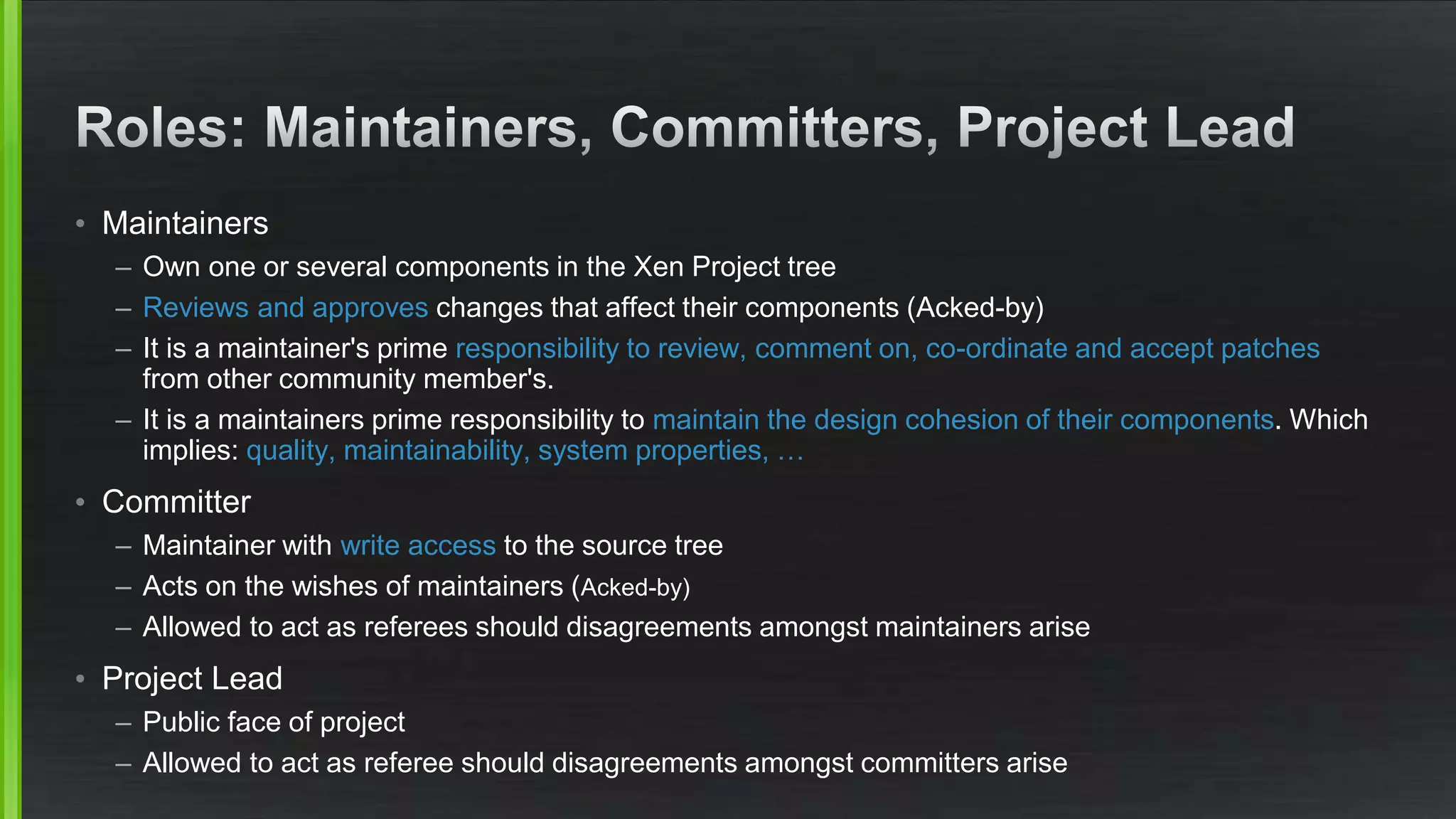

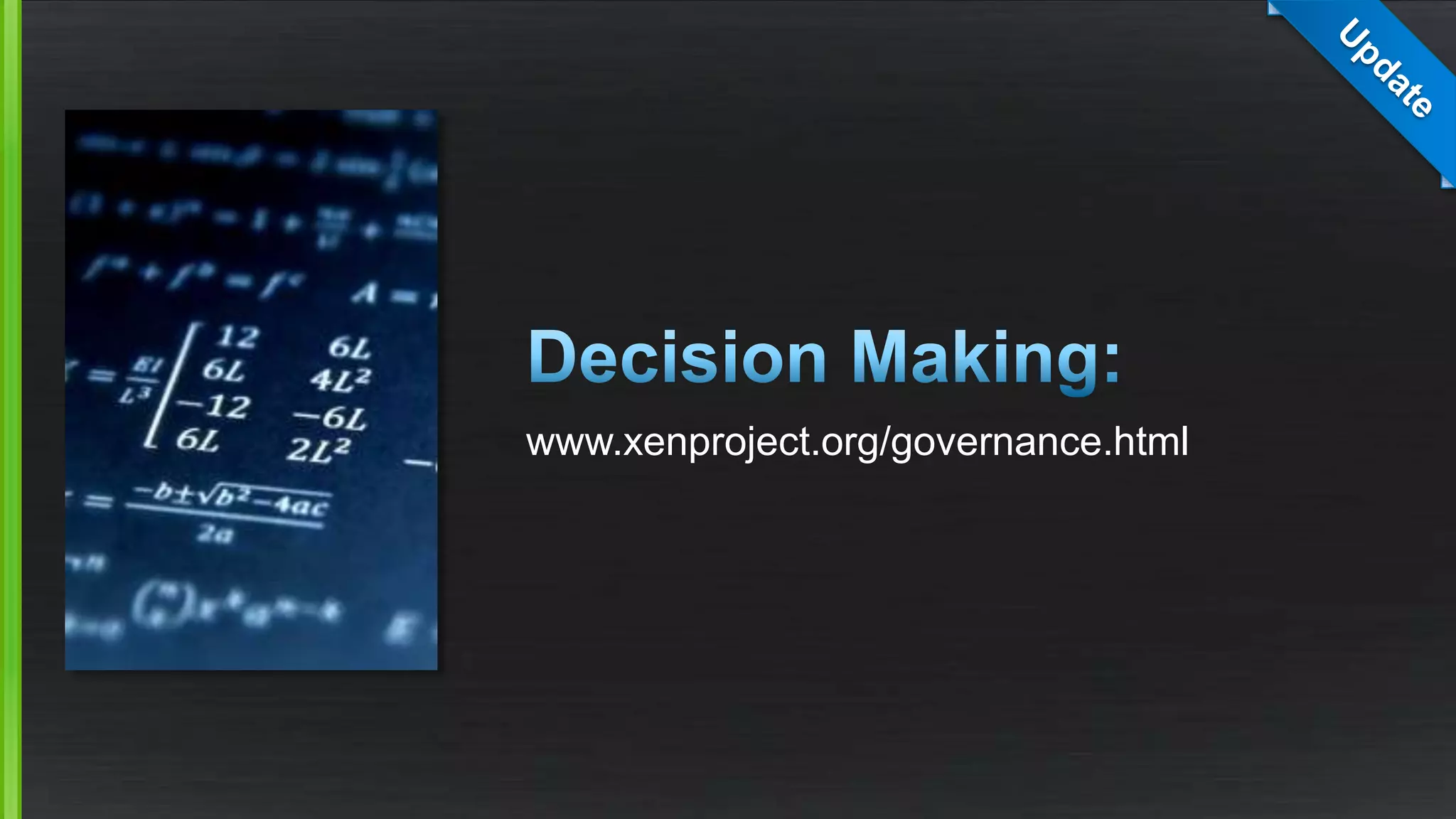

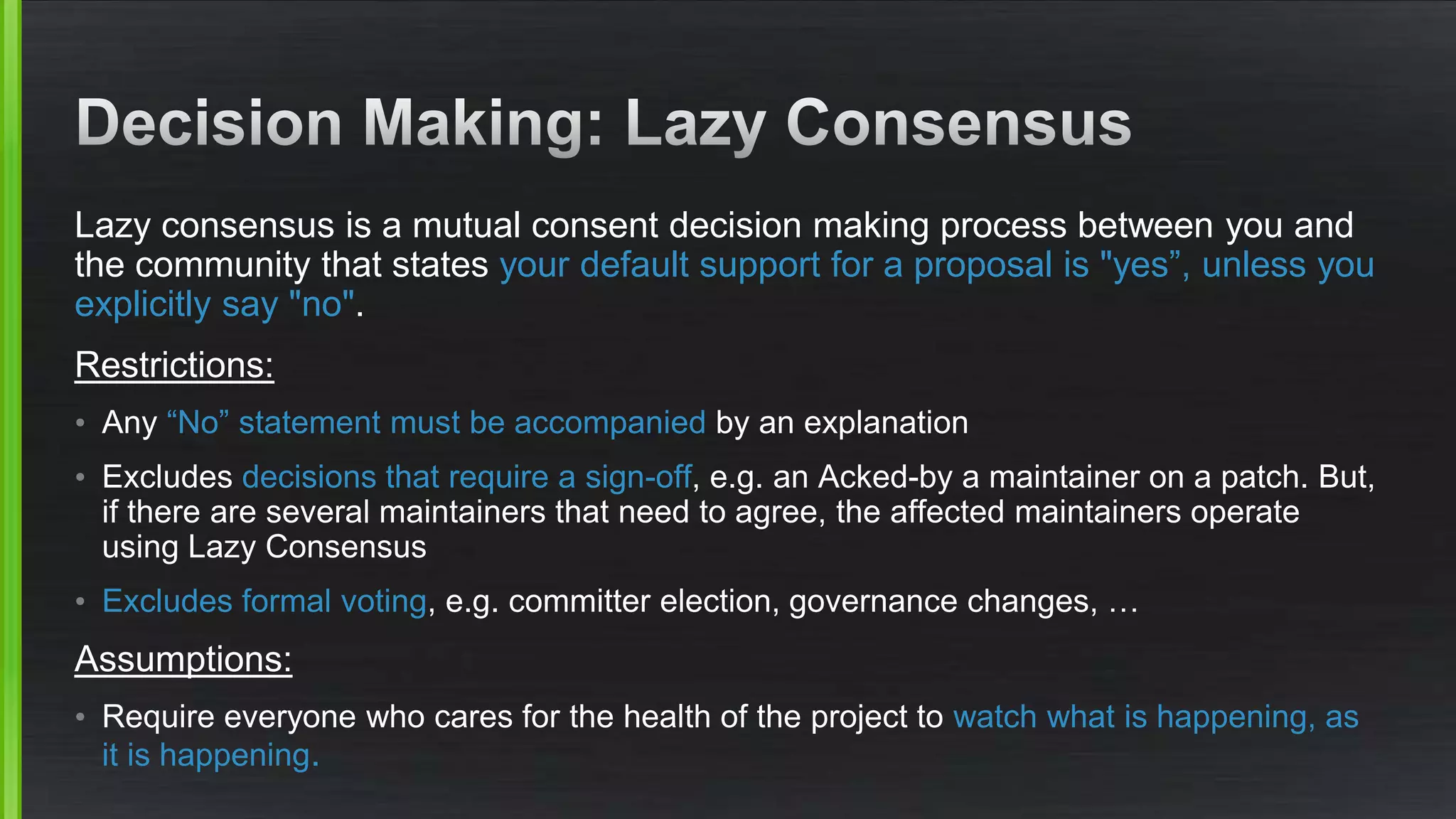
![The design discussion leading to this point in time was lengthy with some disagreements amongst core developers. It took 2 months and 43 email
exchanges to get to the point below.
The example shows how the proposer prompting the Maintainers for clarification on whether all the issues have been resolved and by doing so, got
to an agreement.
[Contributor]
In this case, if libvirt/XenAPI is trying to query a domain's cache utilization in the system
(say 2 sockets), then it will trigger _two_ such MSR access hypercalls for CPUs in the 2 different
sockets.
If you are okay with this idea, I am going to implement it.
[Maintainer]
I am okay with it, but give it a couple of days before you start so that others can voice their
opinions too. Dom0 may not have a vcpu which is scheduled/schedulable on every socket.
[snip: ... there was another short exchange clarifying a question, which were addressed during the
conversation]
[Contributor]
No more comments on this MSR access hypercall design now, so I assume people are mostly okay with it?
[Another Maintainer]
Yes -- I think everyone who commented before is satisfied with that approach, and anyone who hasn't
commented has had ample opportunity to do so](https://image.slidesharecdn.com/xpcontributortraining-pt2processesandconventionsv1-151110182541-lva1-app6892/75/Xen-Project-Contributor-Training-Part2-Processes-and-Conventions-v1-1-10-2048.jpg)

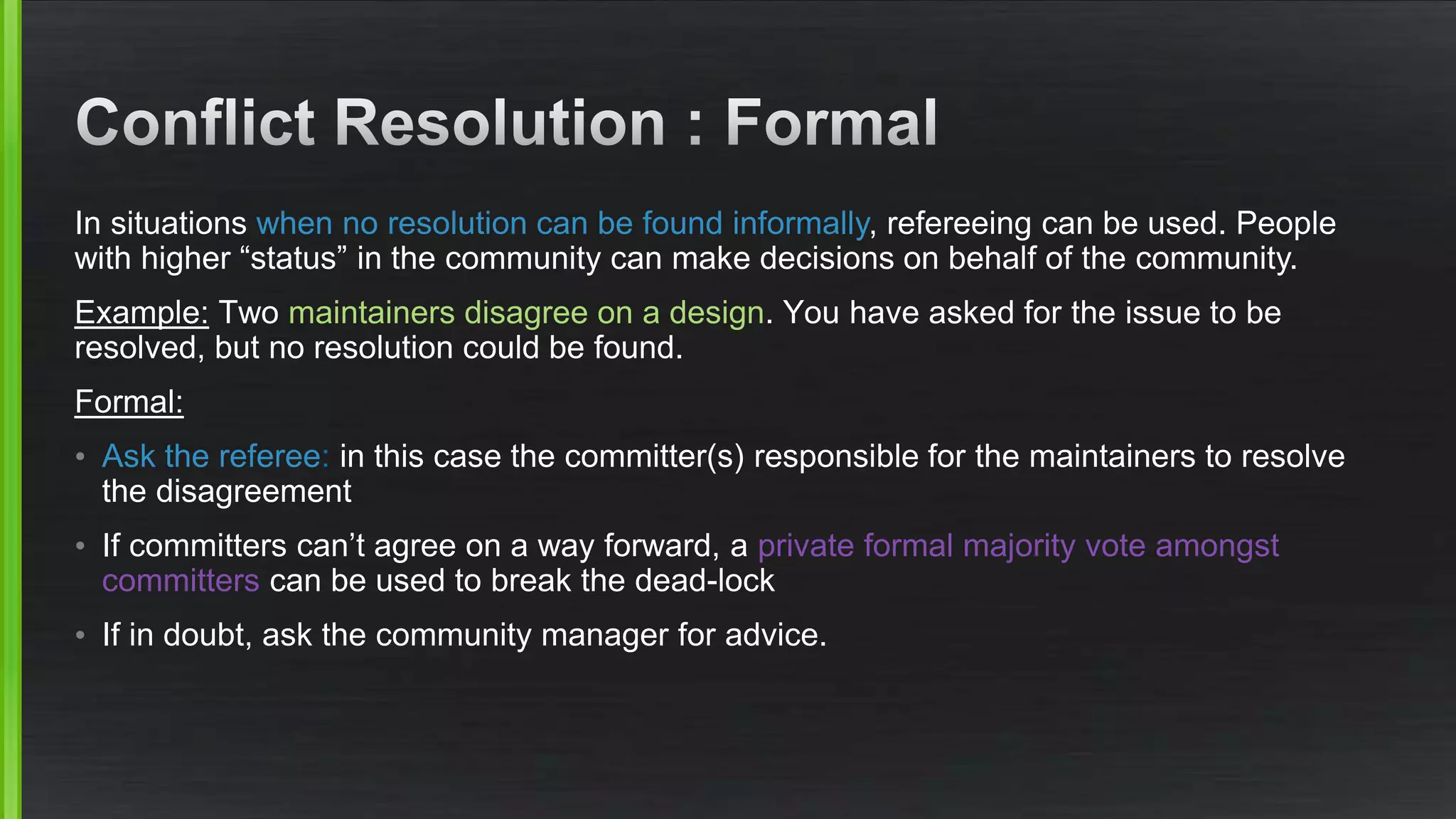
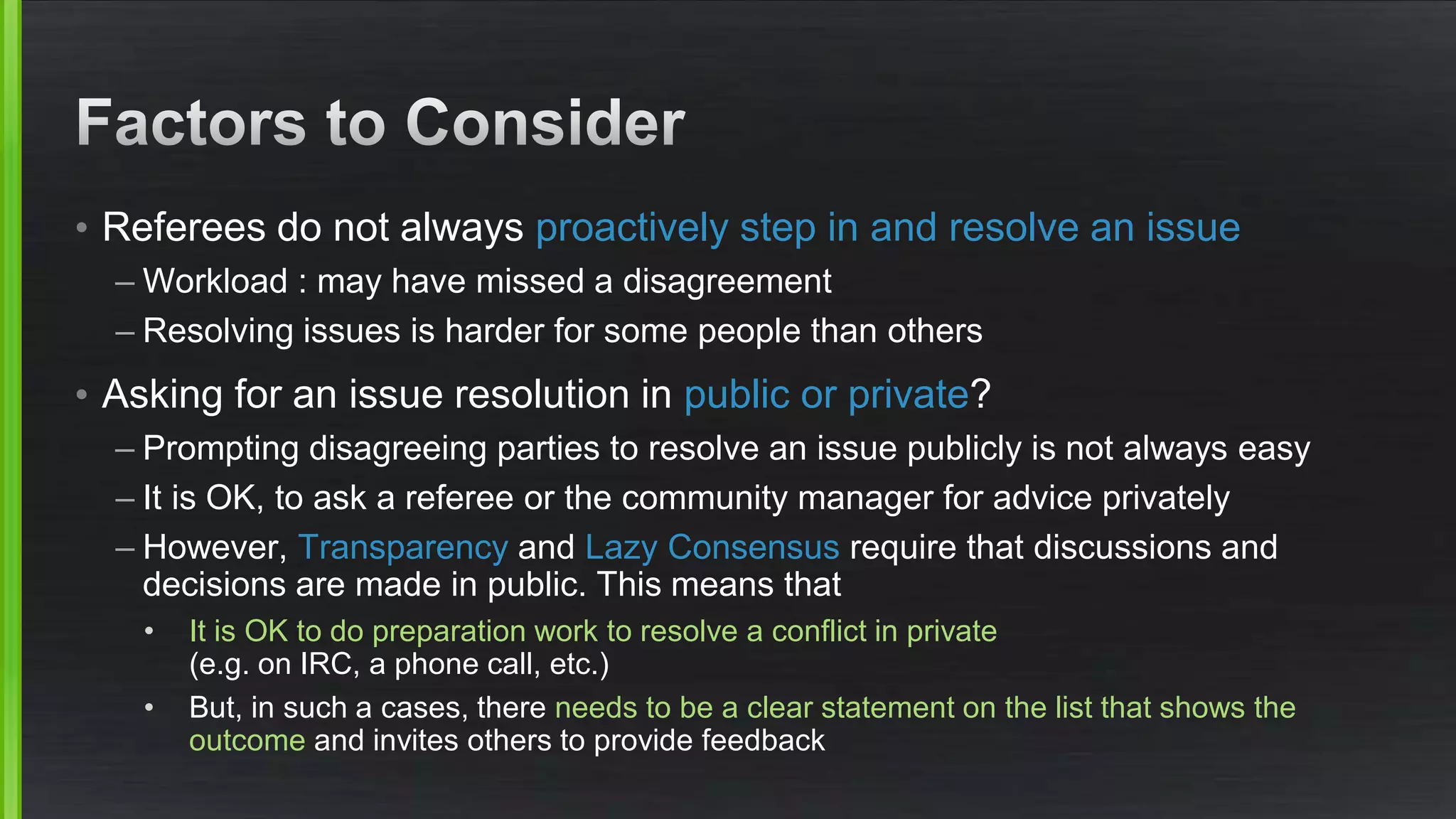
![A maintainer stepped in to understand and resolve an issue by having a quick conversation
with one party involved: he stated the fact that there was a private discussion, summarized
it and invited others to comment.
[Maintainer]
So XXX and I had a chat about this [the disagreement that came up
in a discussion], and I think we came up with something that would
be do-able. (This is from memory, so XXX please correct me if I
missed anything).
So the situation, as I understand it, is:
...
That should be a good balance -- it's not quite as good as having
as separate daemon, but it's a pretty good compromise.
Thoughts?](https://image.slidesharecdn.com/xpcontributortraining-pt2processesandconventionsv1-151110182541-lva1-app6892/75/Xen-Project-Contributor-Training-Part2-Processes-and-Conventions-v1-1-14-2048.jpg)
![Applies to: Proposals related to Development Practices and Processes
Informal Discussion of a Proposal
Possibly several options with an
informal vote on each option to establish
momentum for each option
No clear agreement for a single option
Next step: Proposer makes a formal proposal with one option
Informal or Formal Committer Vote
A single proposal marked [Vote] on a single
concrete proposal
If there is consensus amongst relevant
committers, we are done
ConsensusApproval
If there is clear consensus amongst all
relevant stake-holders we are done
Last Resort:
Private committer vote (majority with tie
break to avoid stale-mate)
No agreement for a single option
Next step: Proposer asks community manager for resolution
Results are published by
community manager](https://image.slidesharecdn.com/xpcontributortraining-pt2processesandconventionsv1-151110182541-lva1-app6892/75/Xen-Project-Contributor-Training-Part2-Processes-and-Conventions-v1-1-15-2048.jpg)
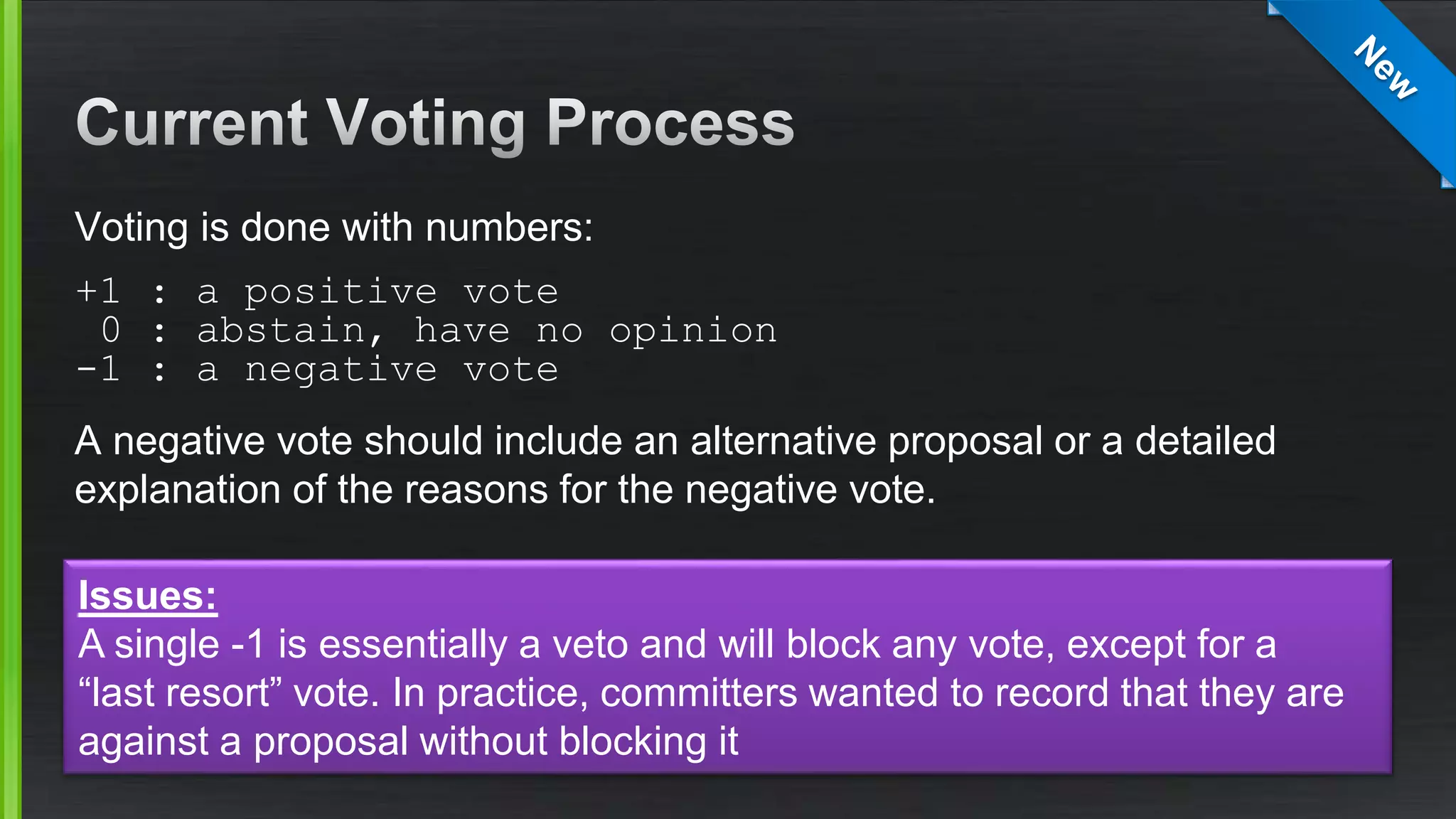
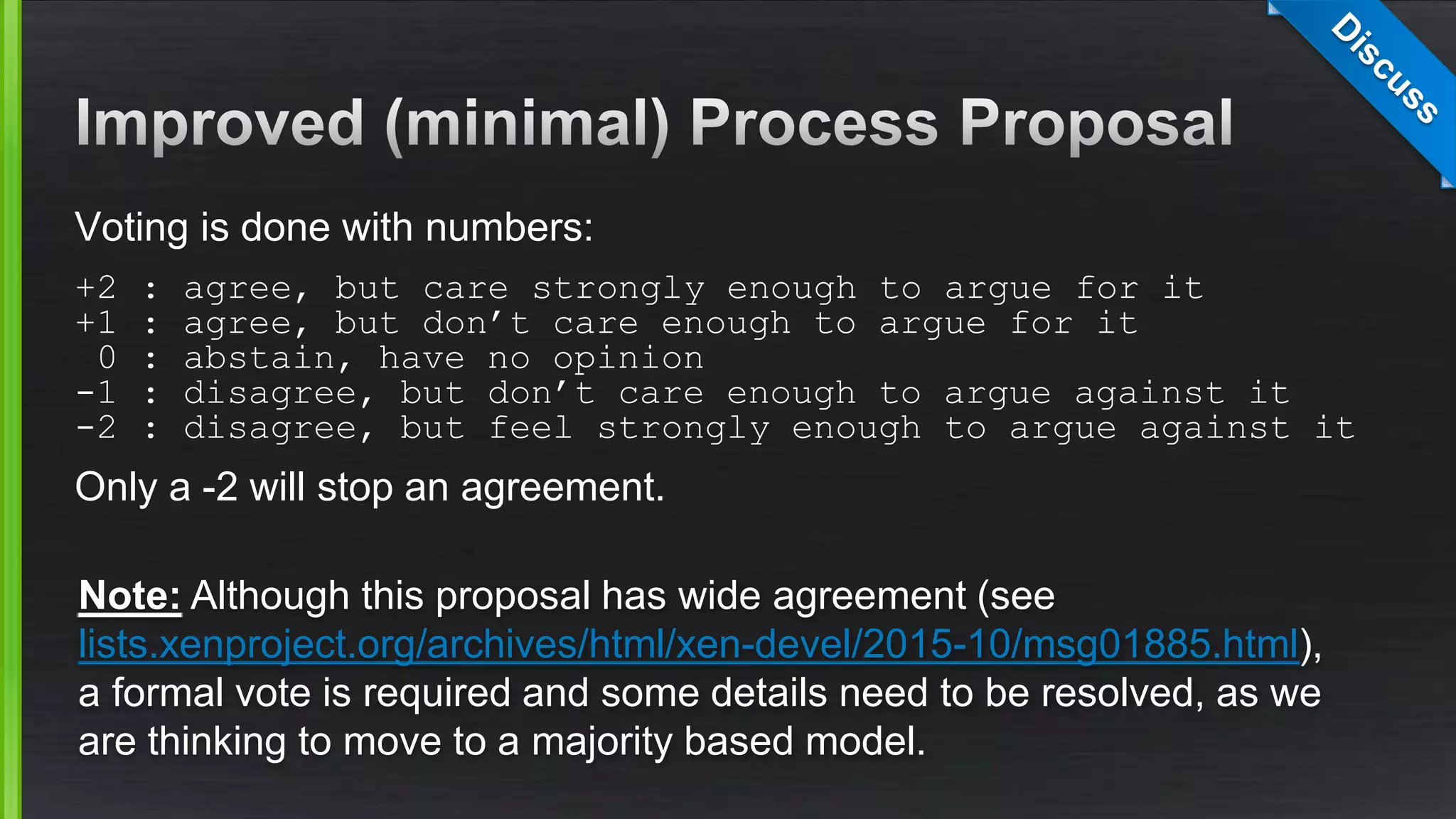
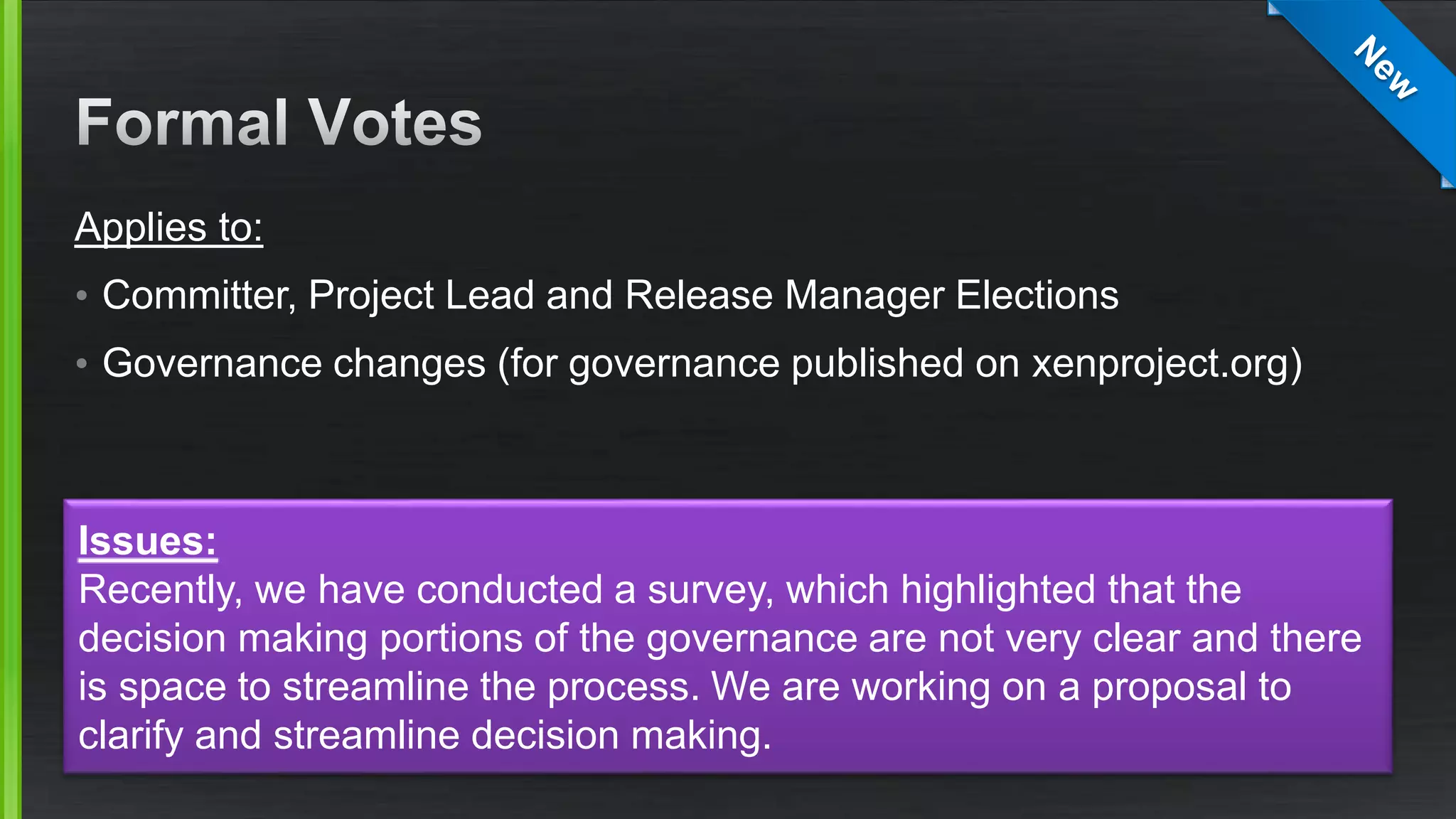
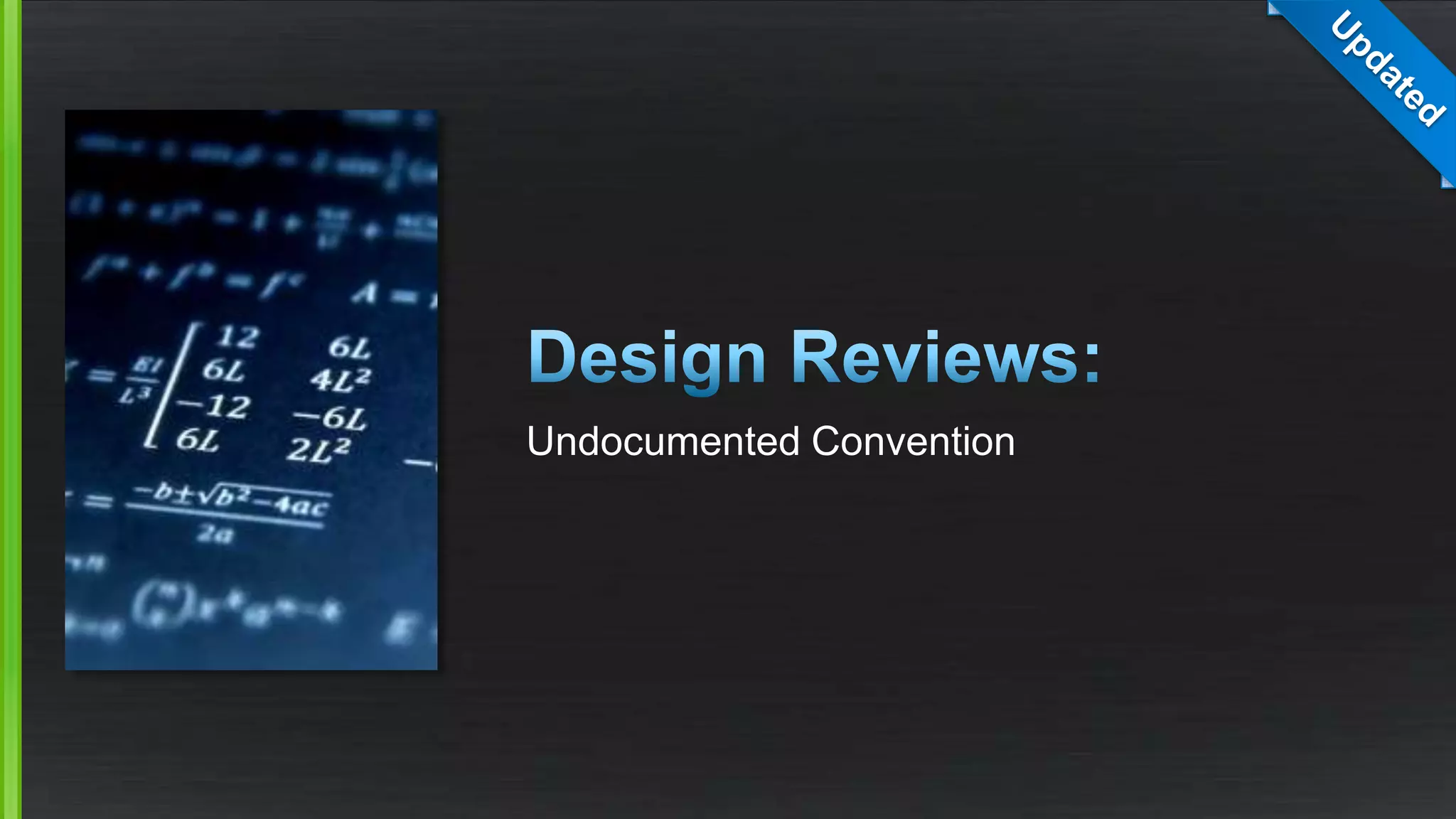
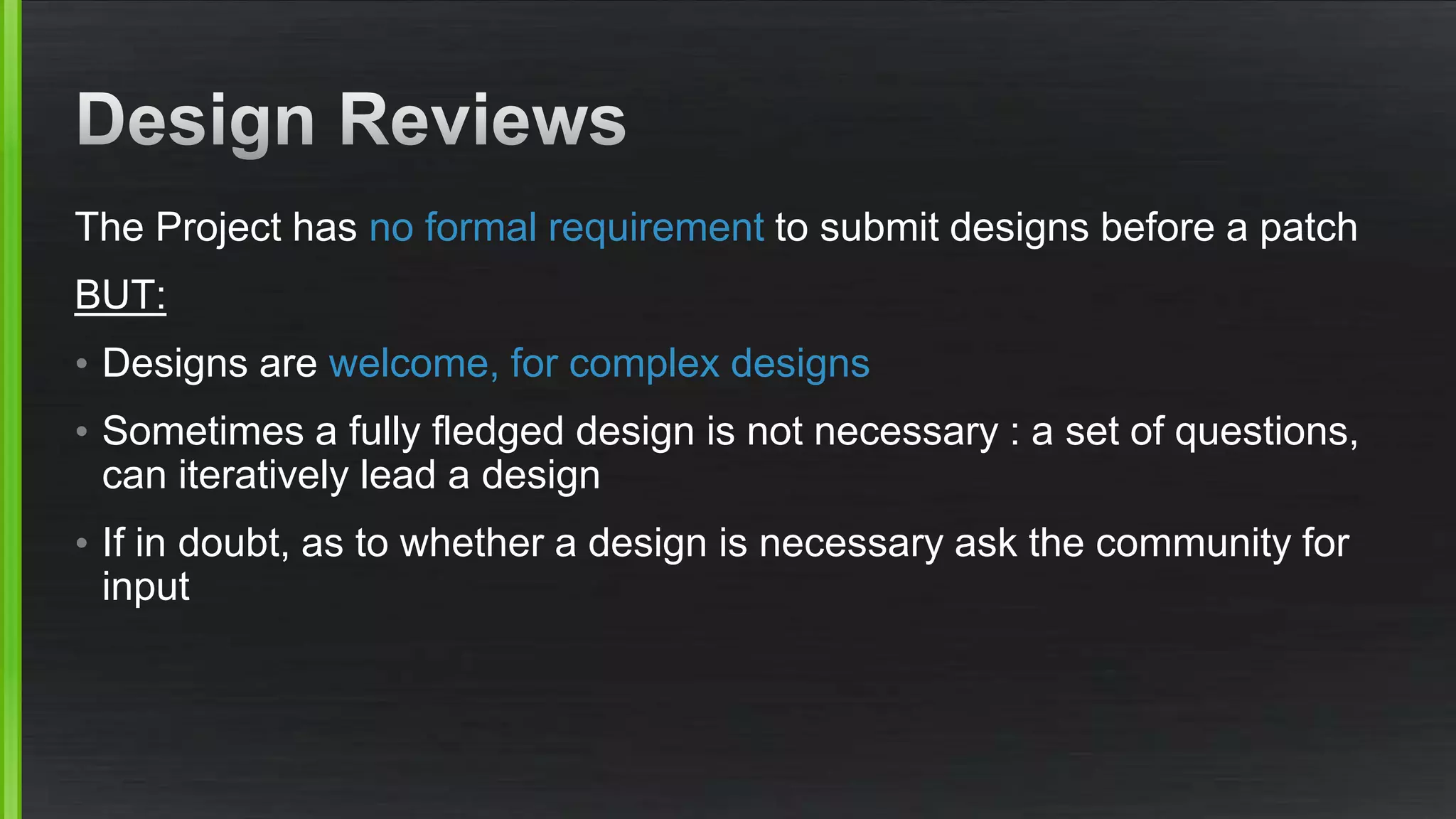
![See “cpufreq implementation for OMAP under xen hypervisor”
[Contributor]
Hi to all.
I want to implement an cpufreq support for OMAP processors in xen. I use the
Linux kernel as Dom0.
I know that there are 2 implementations of cpufreq: Domain0 based cpufreq and
Hypervisor based cpufreq. But those implementations are made only for x86
architecture, not for the ARM architecture.
Could anybody give me an advice how to do that?
After an initial answer, the proposal was iteratively improved leading to a design.
The design turned out to be more complex than anticipated because of dependencies with
Linux and architectural differences between x86 and ARM.](https://image.slidesharecdn.com/xpcontributortraining-pt2processesandconventionsv1-151110182541-lva1-app6892/75/Xen-Project-Contributor-Training-Part2-Processes-and-Conventions-v1-1-21-2048.jpg)
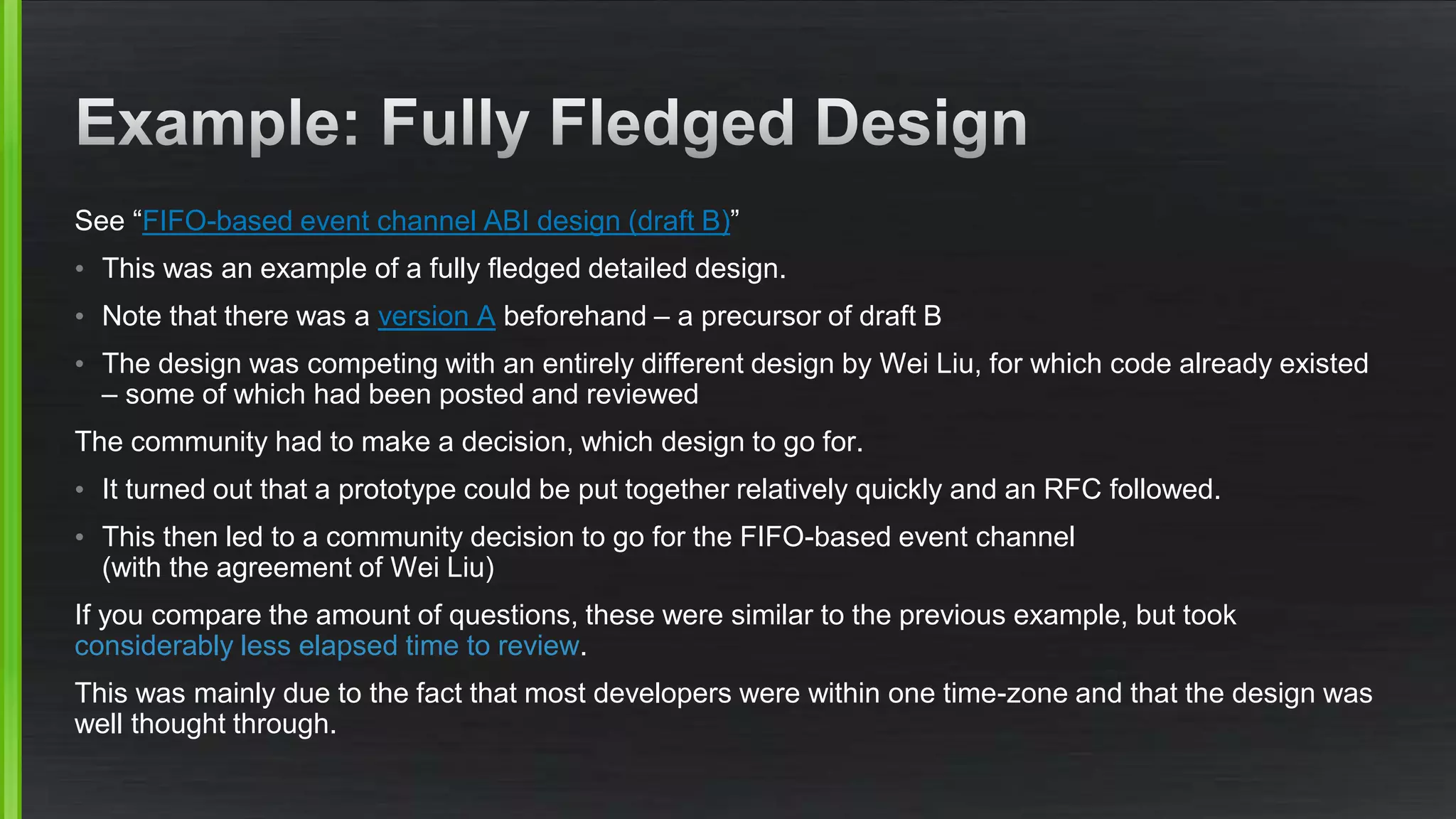
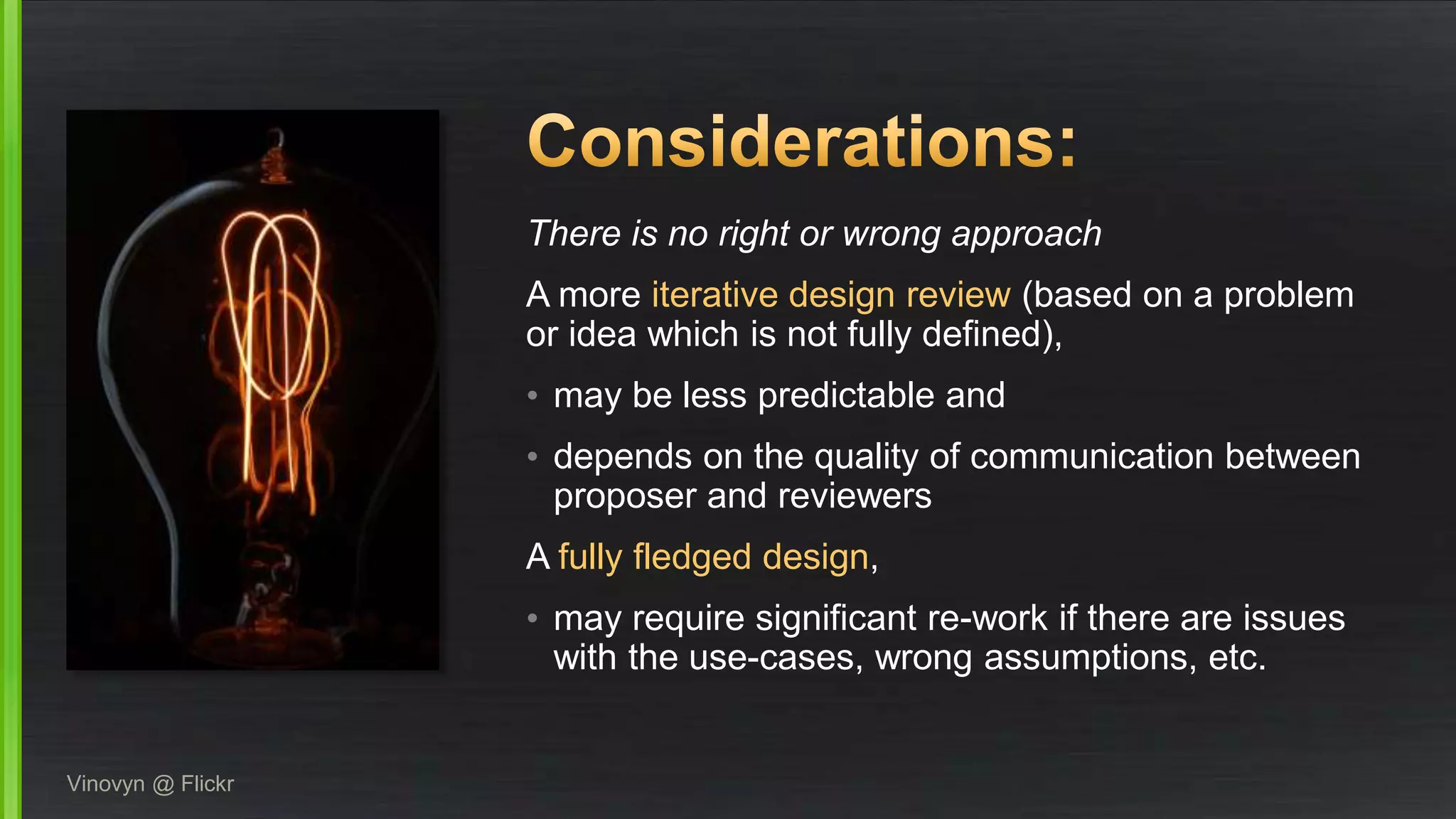
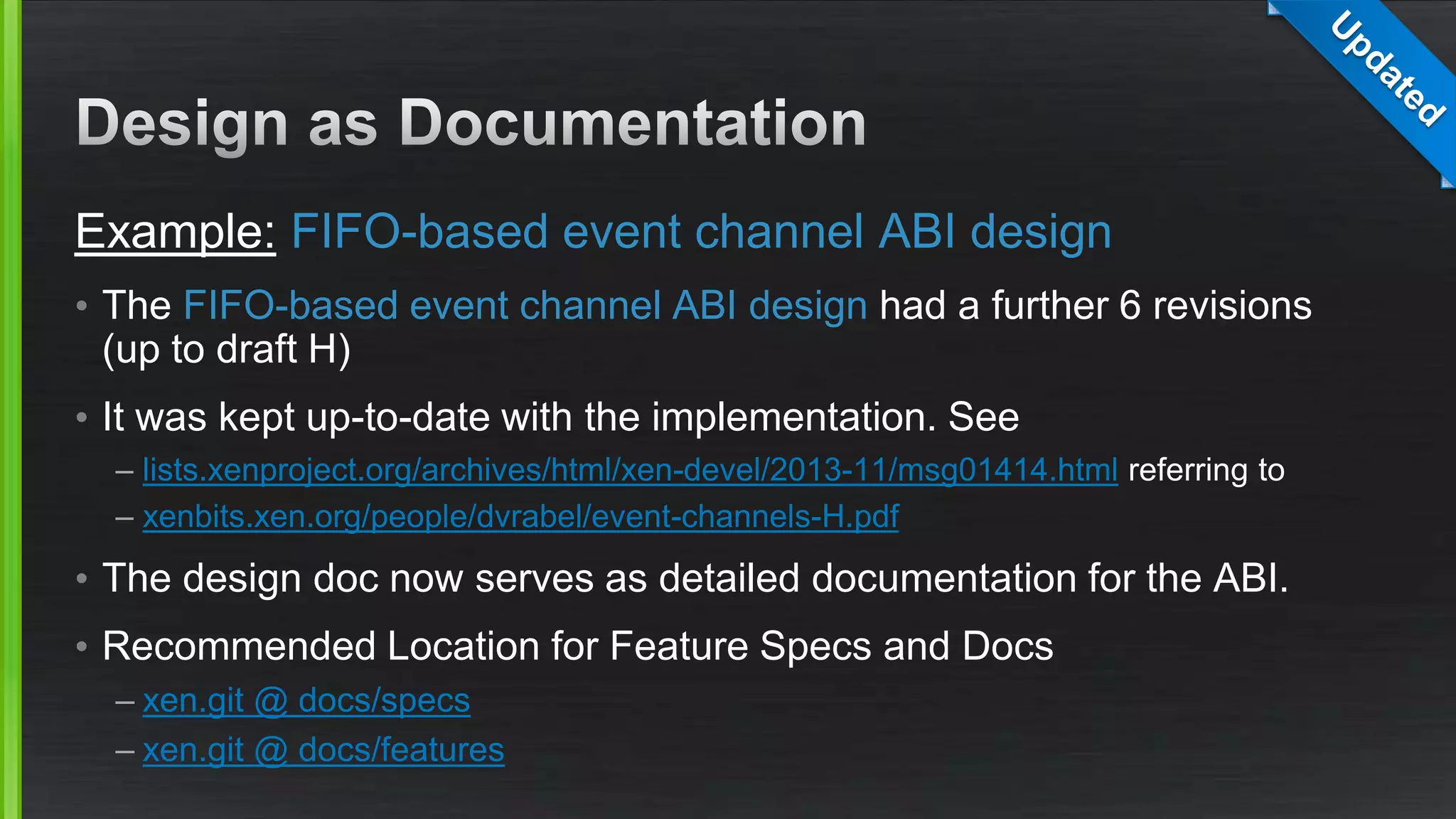
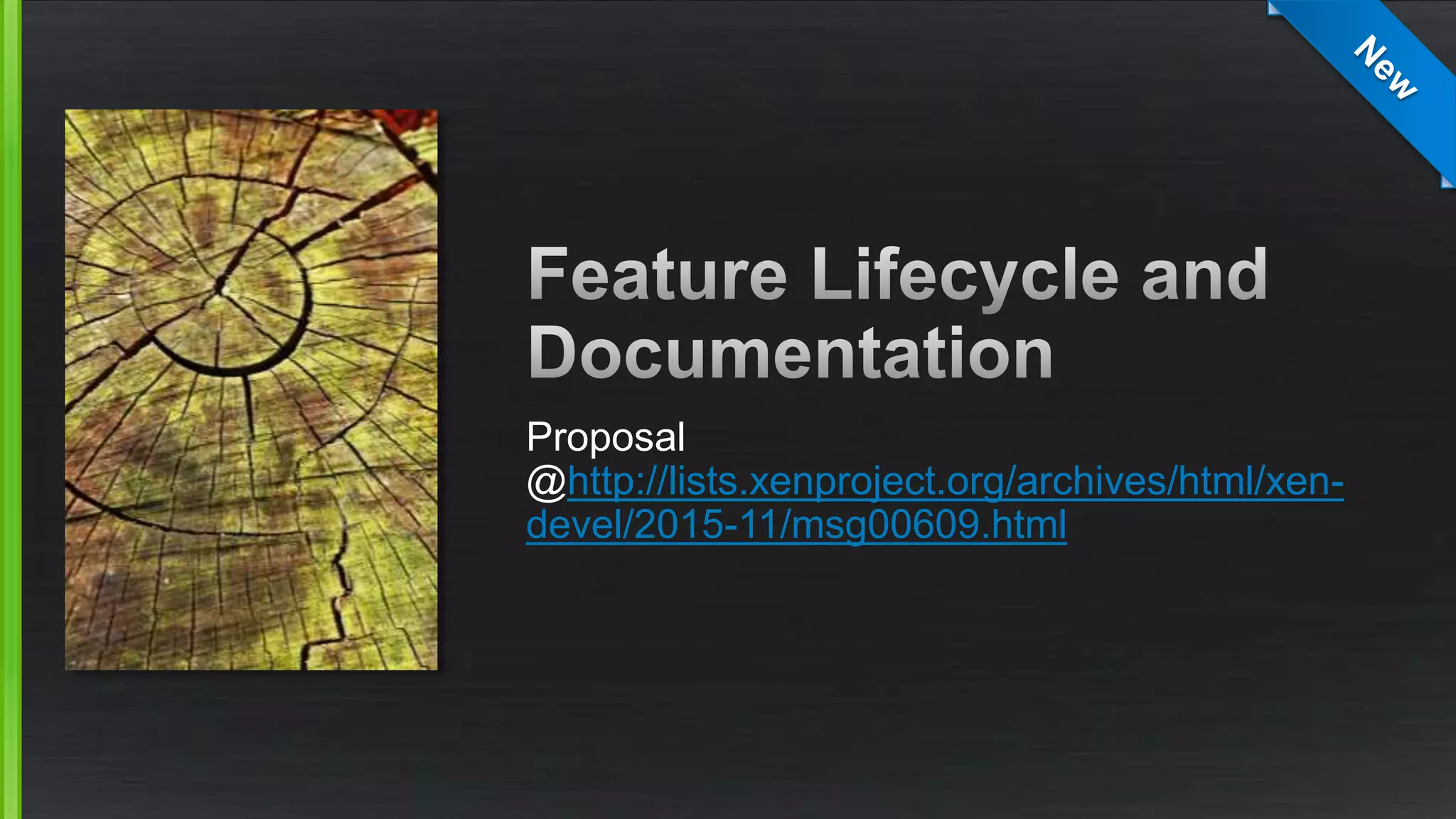
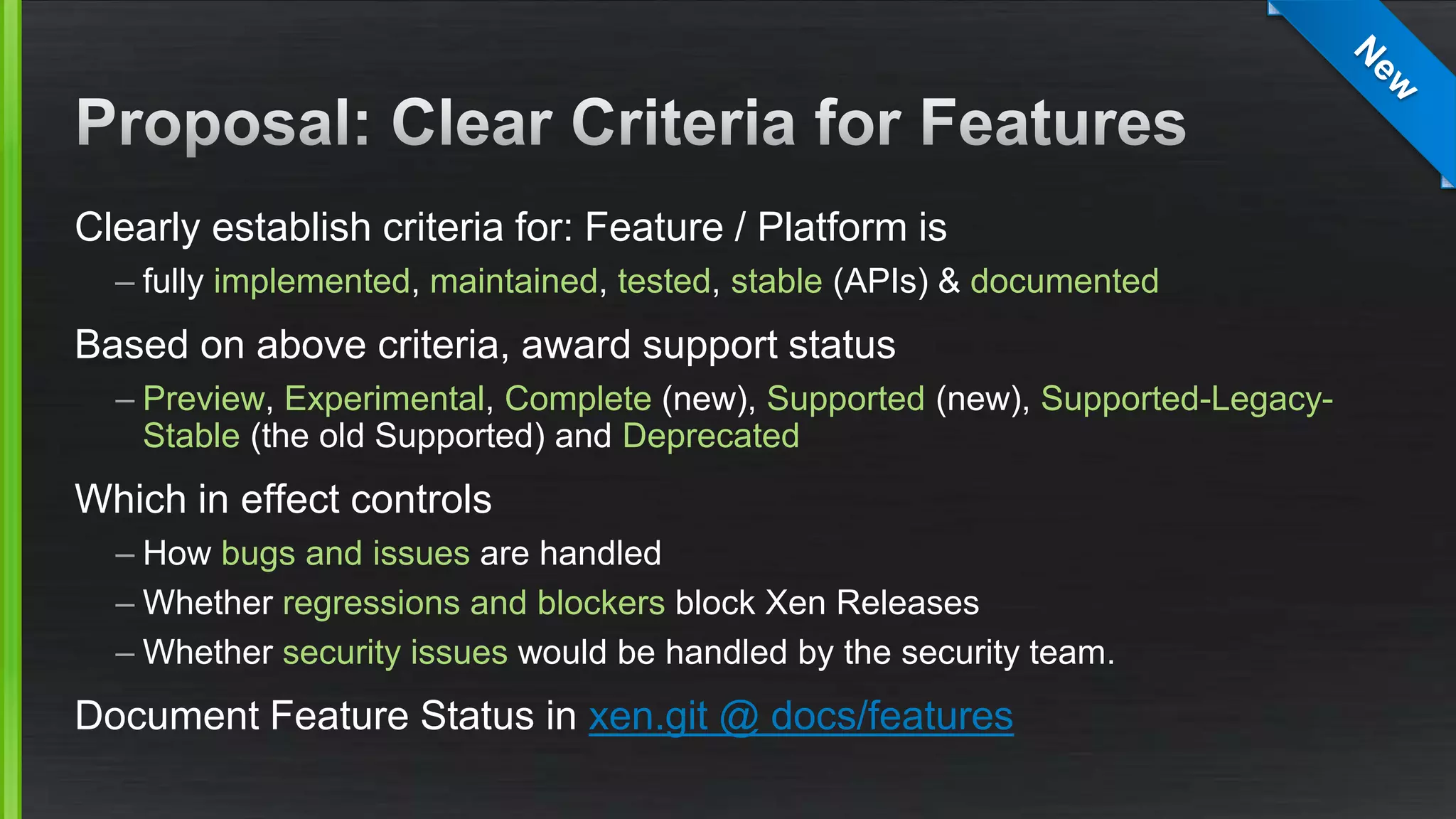
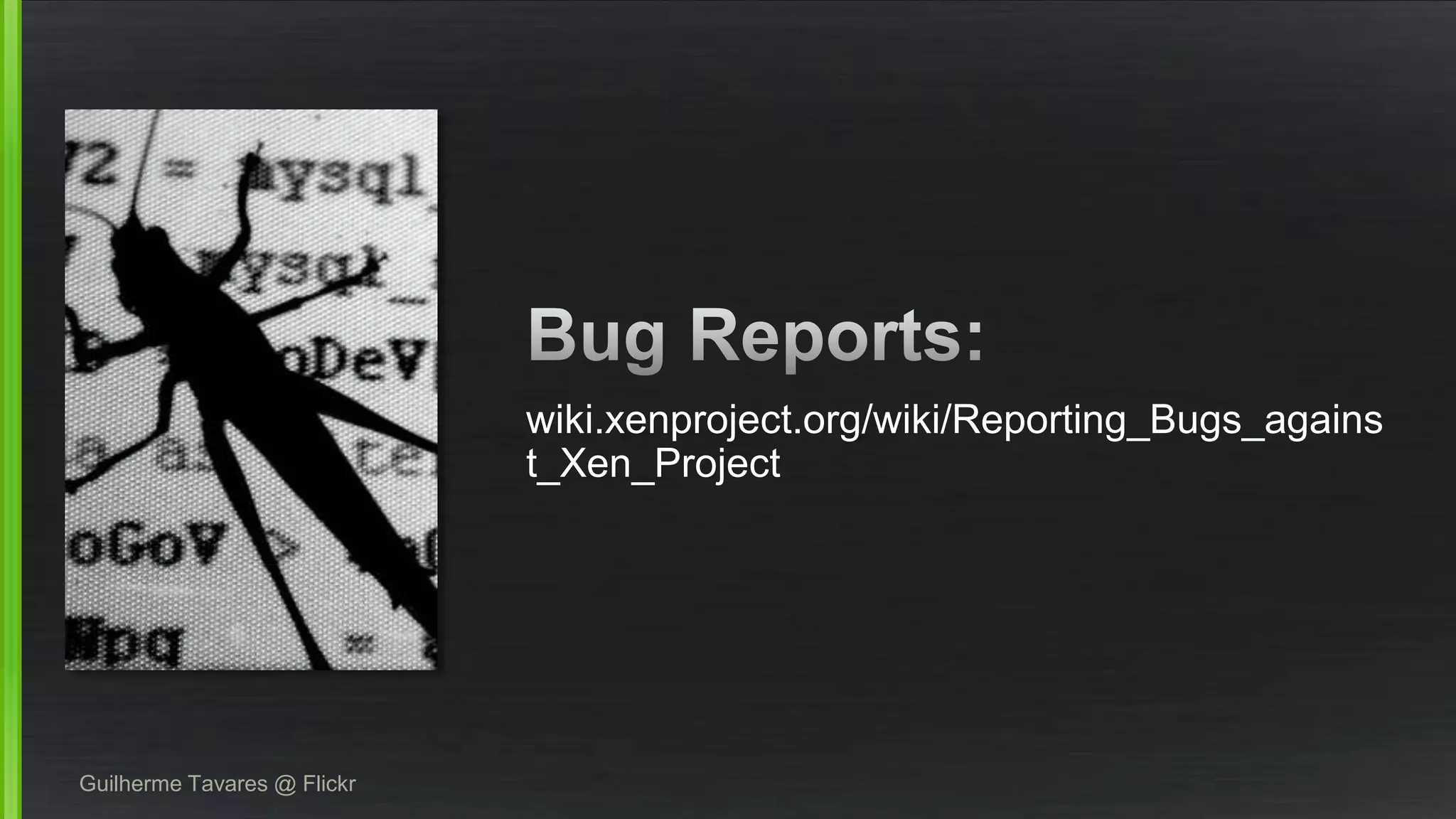
![Raise Issue or [BUG]:
Description of issue with supporting
information, such as environments,
logs, etc. to xen-devel or xen-users
IMPORTANT: suspected security
vulnerabilities are reported to
security@xenproject.org only
Clarification:
Community may ask some more questions to clarify
the issue and determine whether the issue in question
is a bug or not.
More Information:
Raiser of bug provides more information
Fixing:
Community member fixes the bug using the
contribution workflow. Once the fix is committed and
the bug confirmed fixed the maintainer closes
the bugClosed
Tracked bug:
Maintainer adds bug to bugs.xenproject.org
Maintainer
confirms issue as
bug that needs to
be tracked](https://image.slidesharecdn.com/xpcontributortraining-pt2processesandconventionsv1-151110182541-lva1-app6892/75/Xen-Project-Contributor-Training-Part2-Processes-and-Conventions-v1-1-28-2048.jpg)

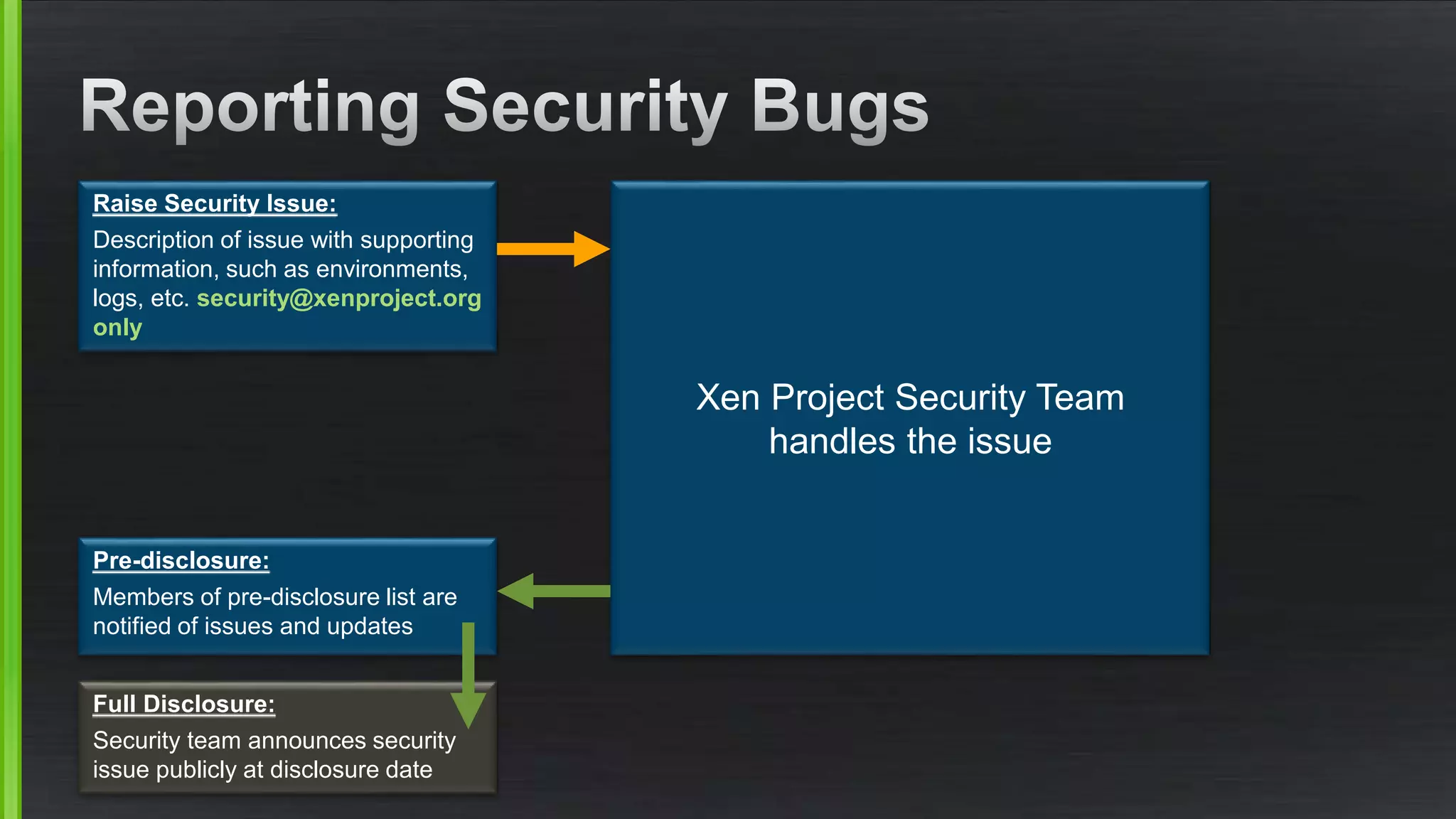
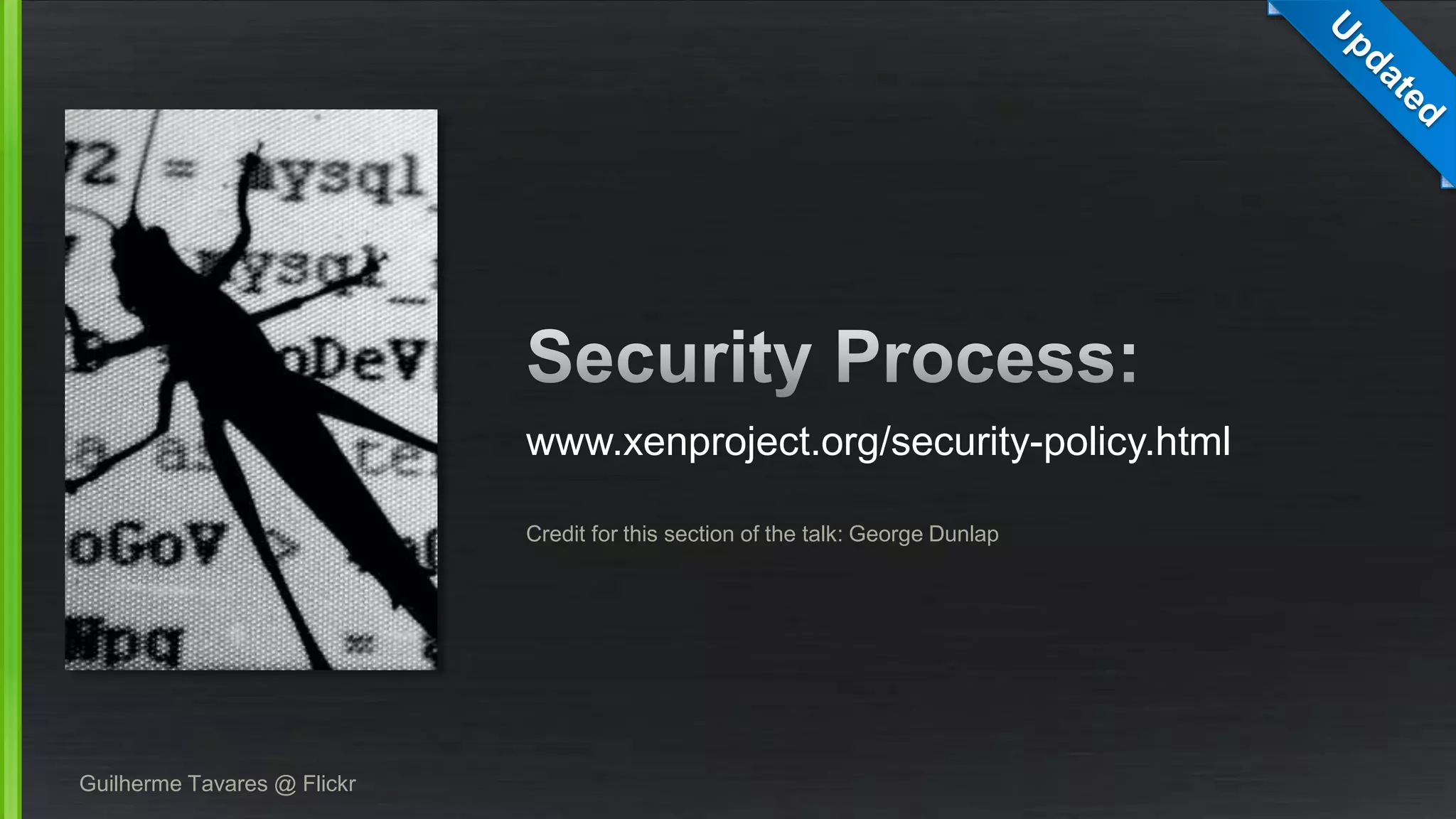
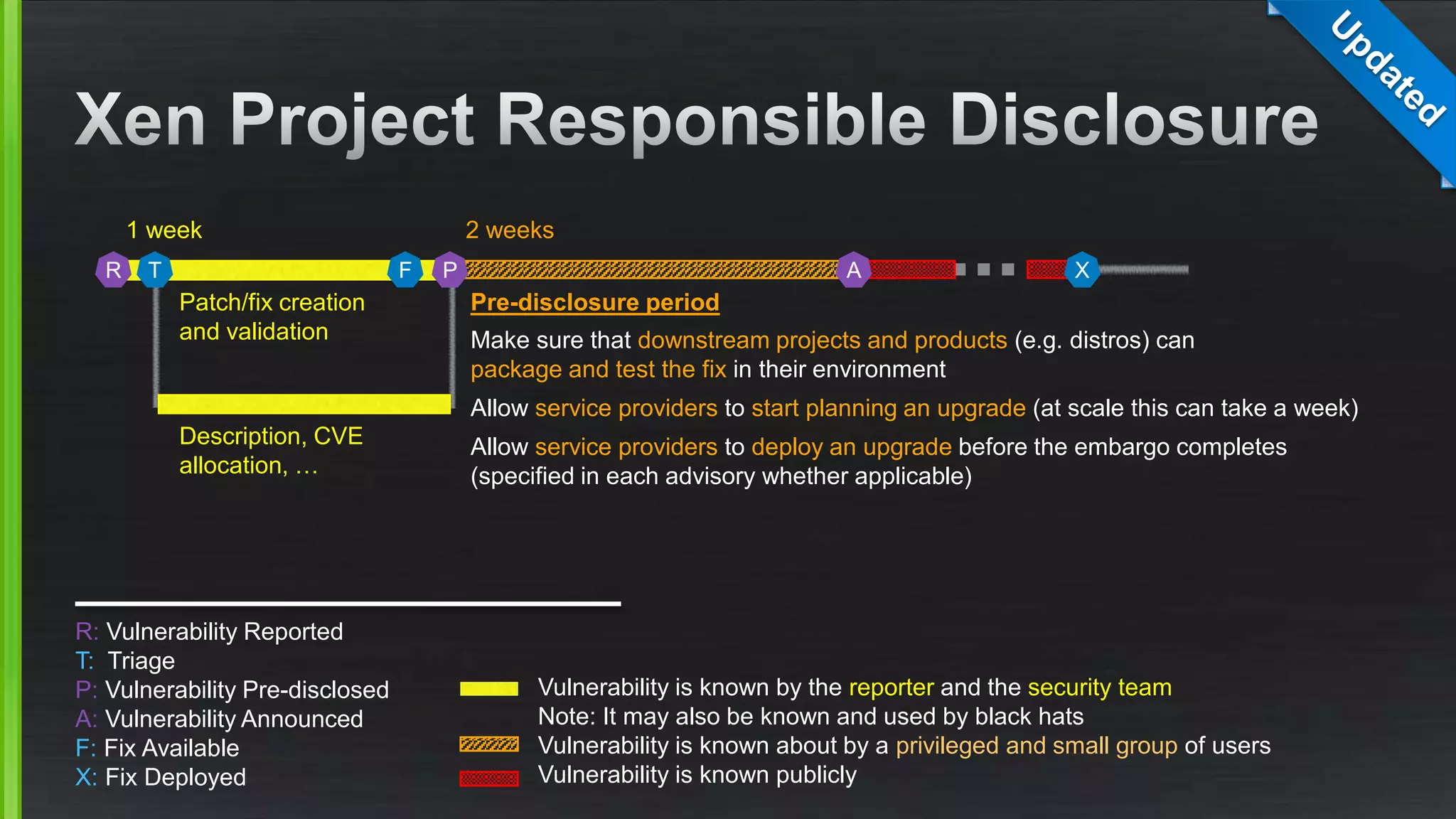
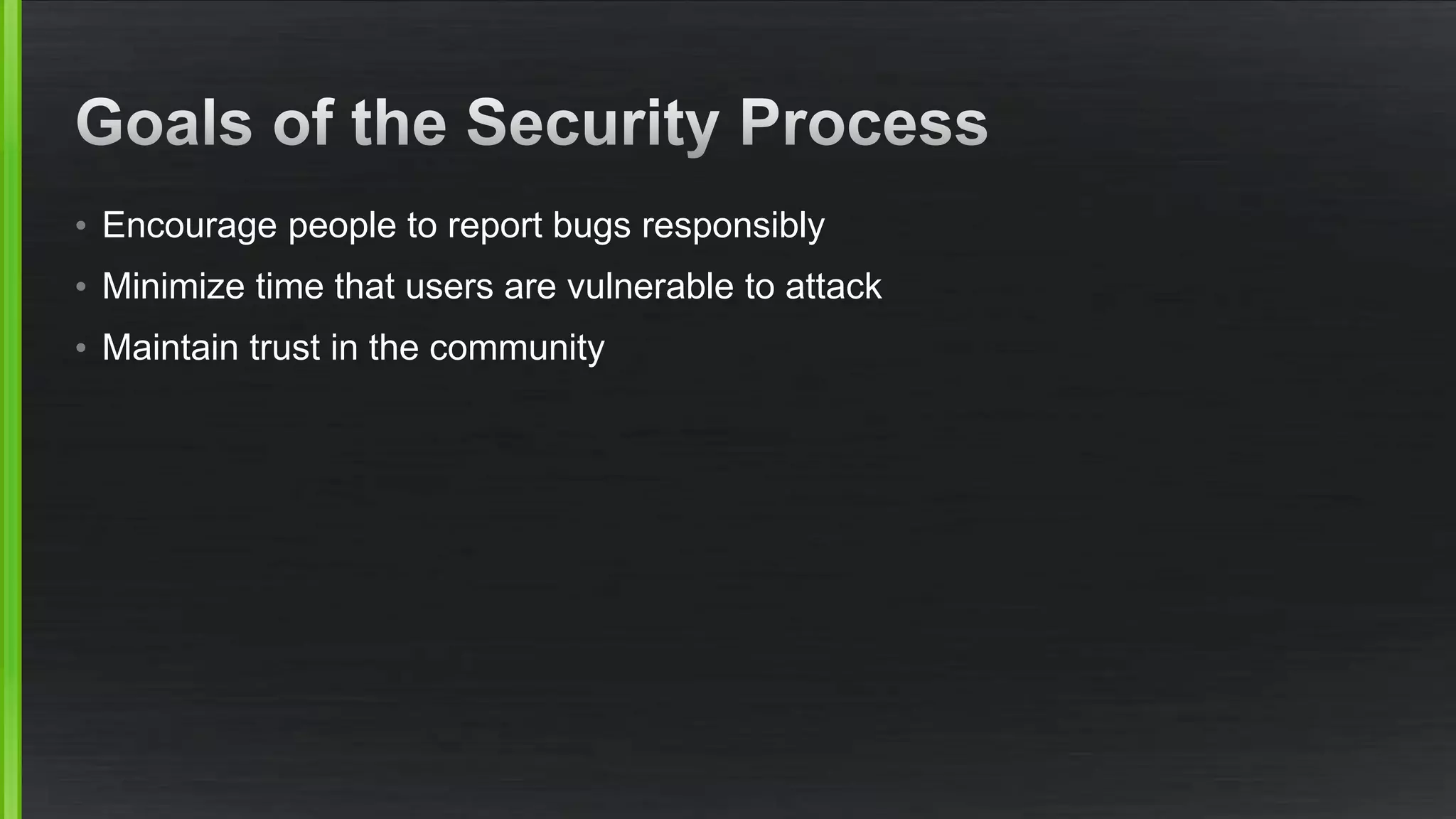
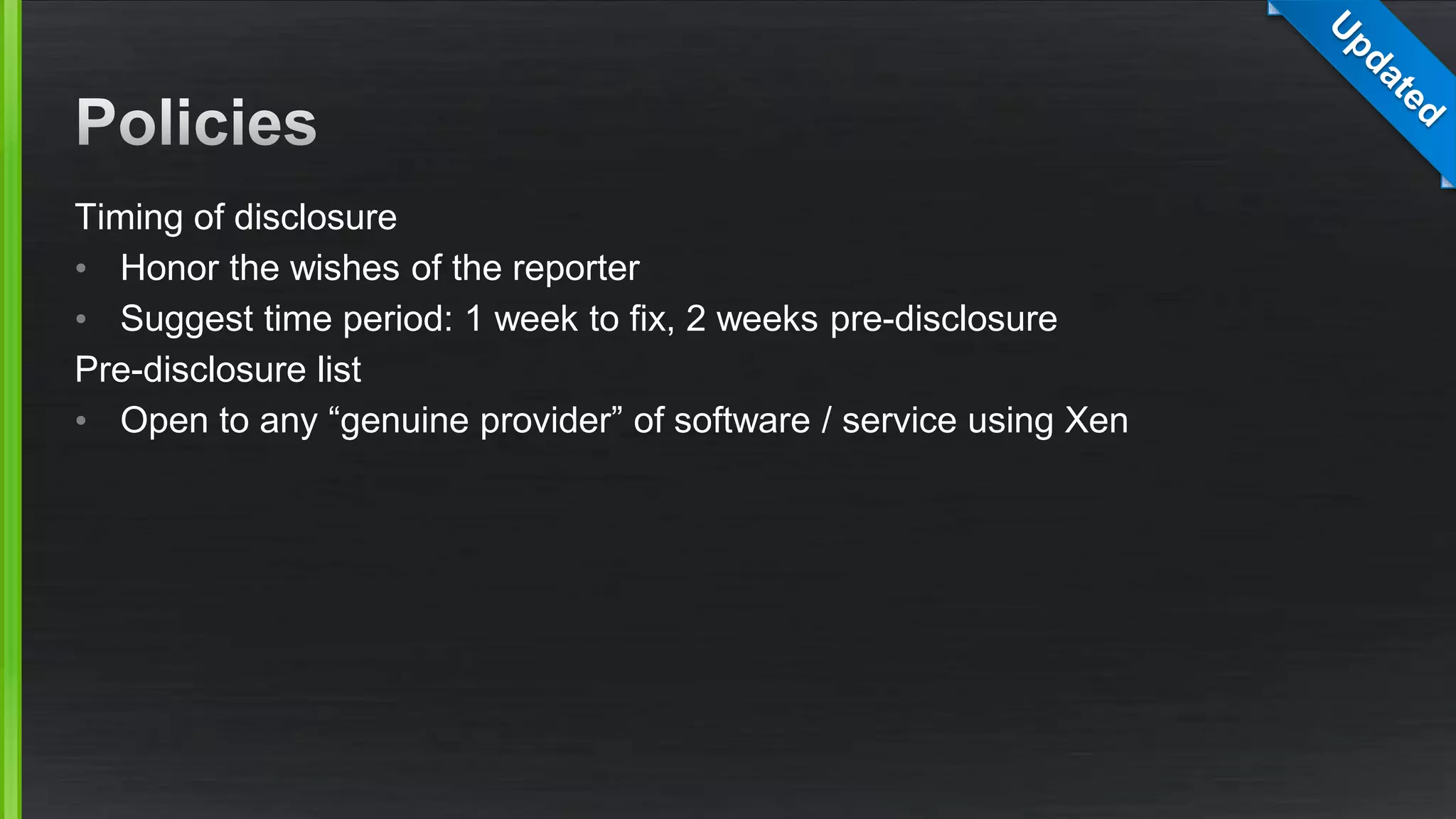
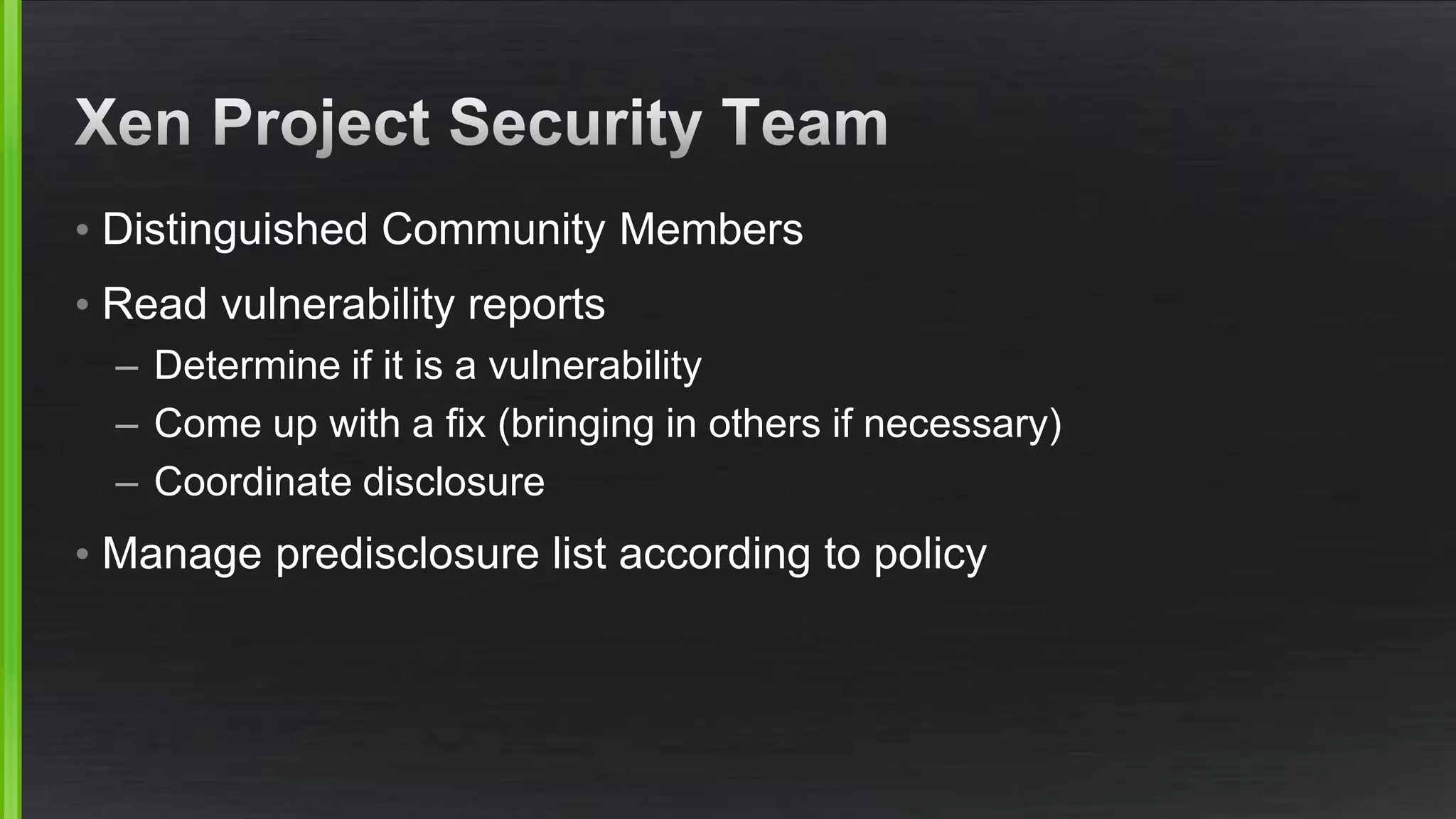
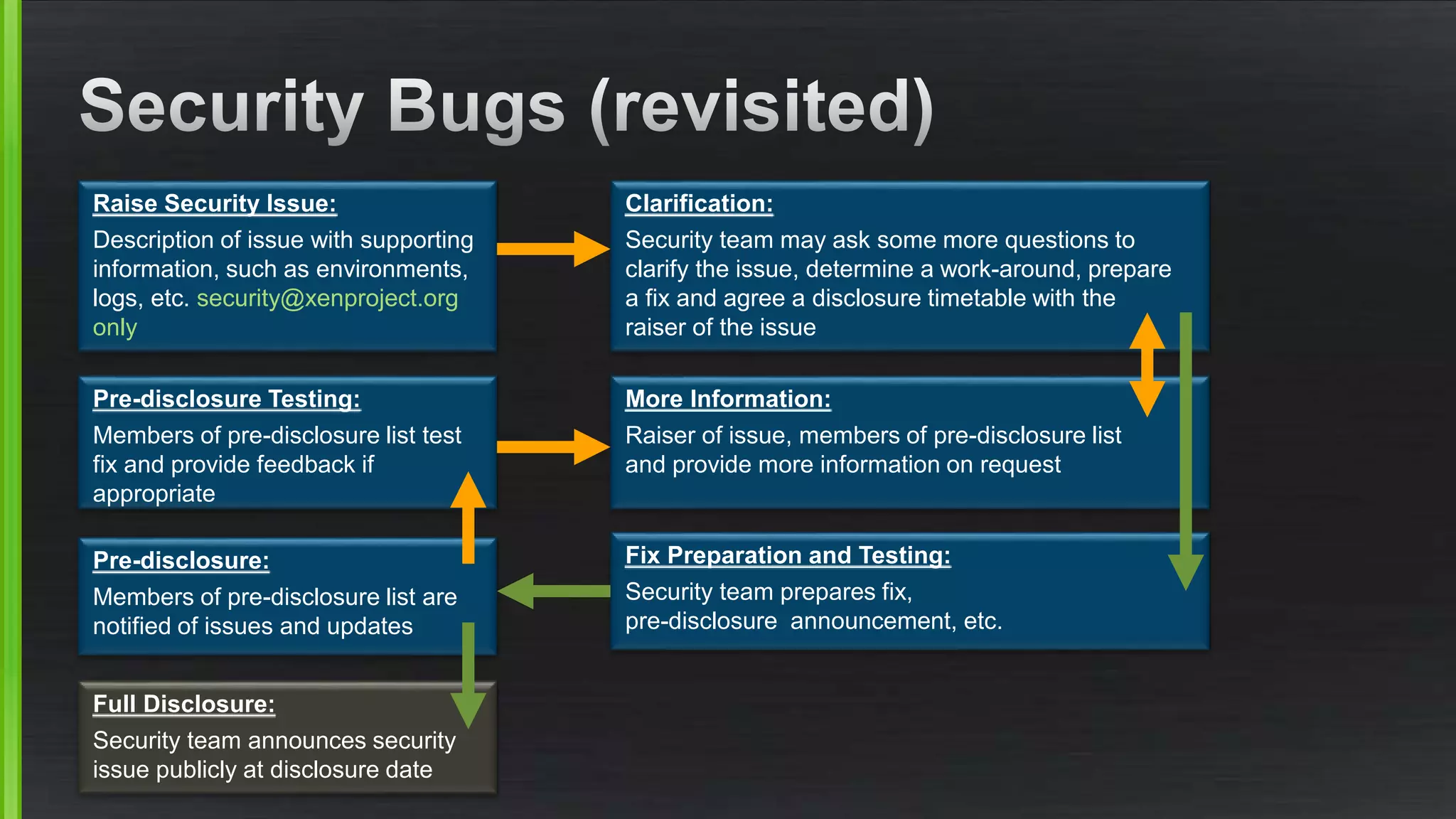
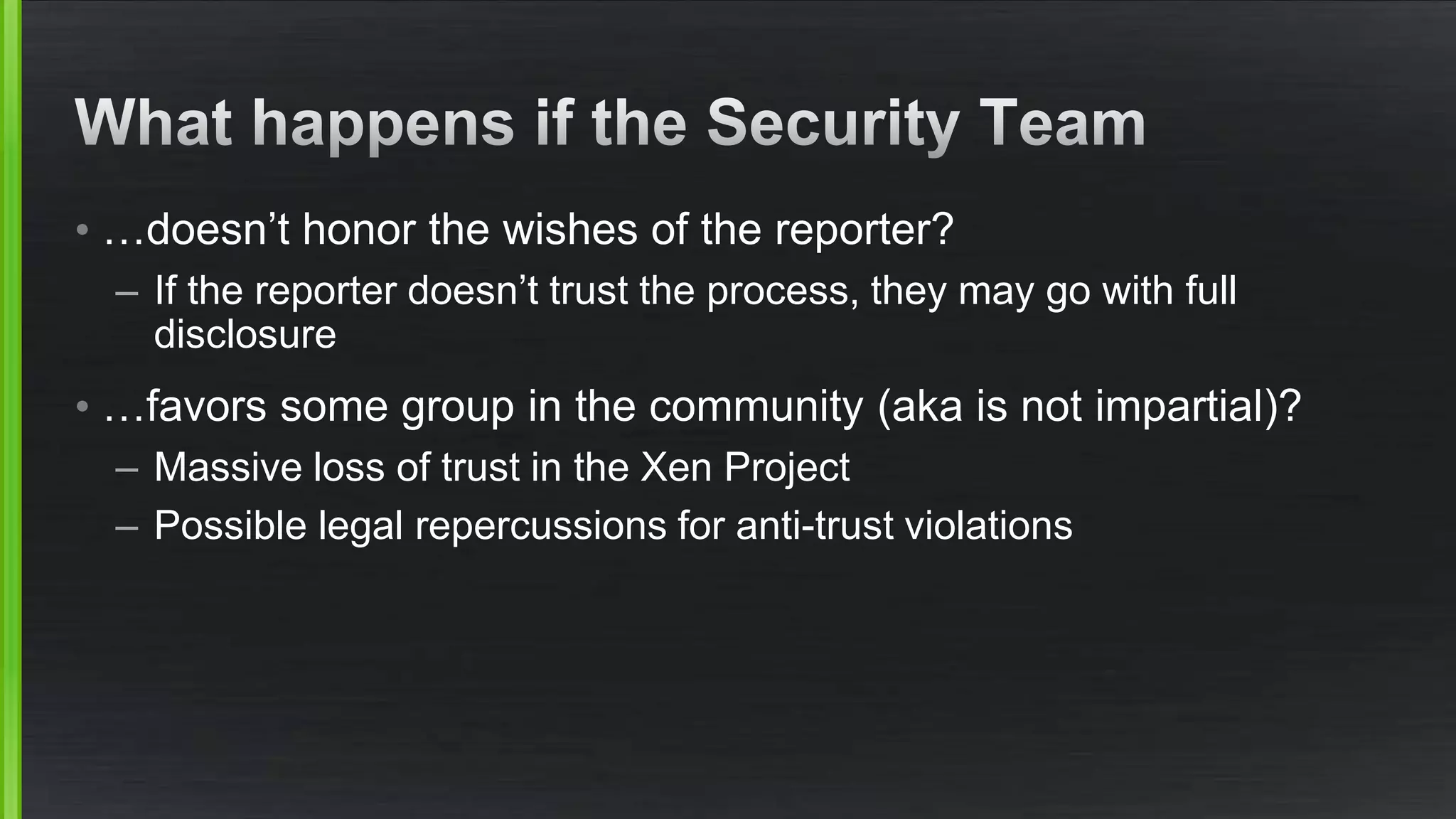
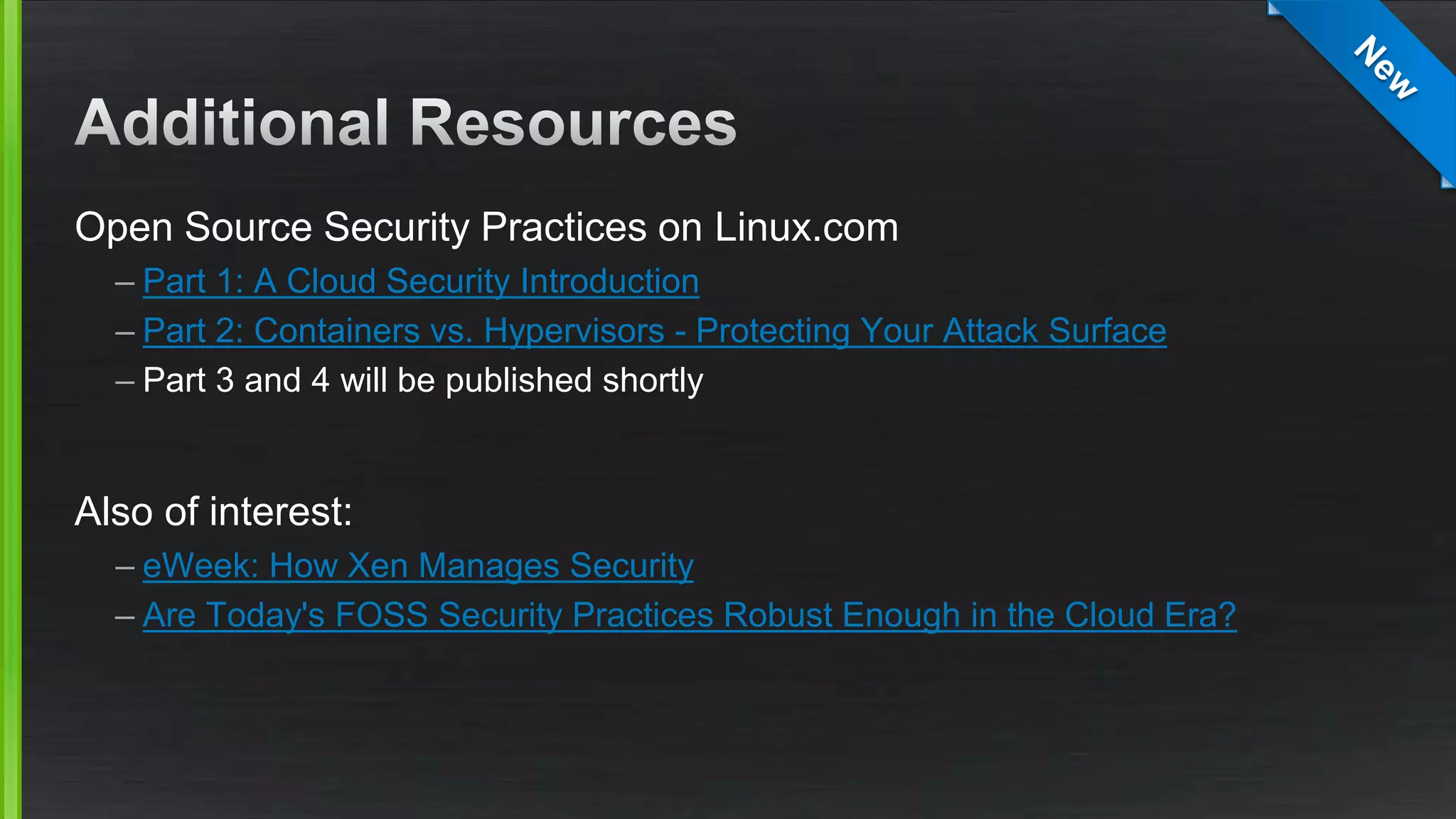
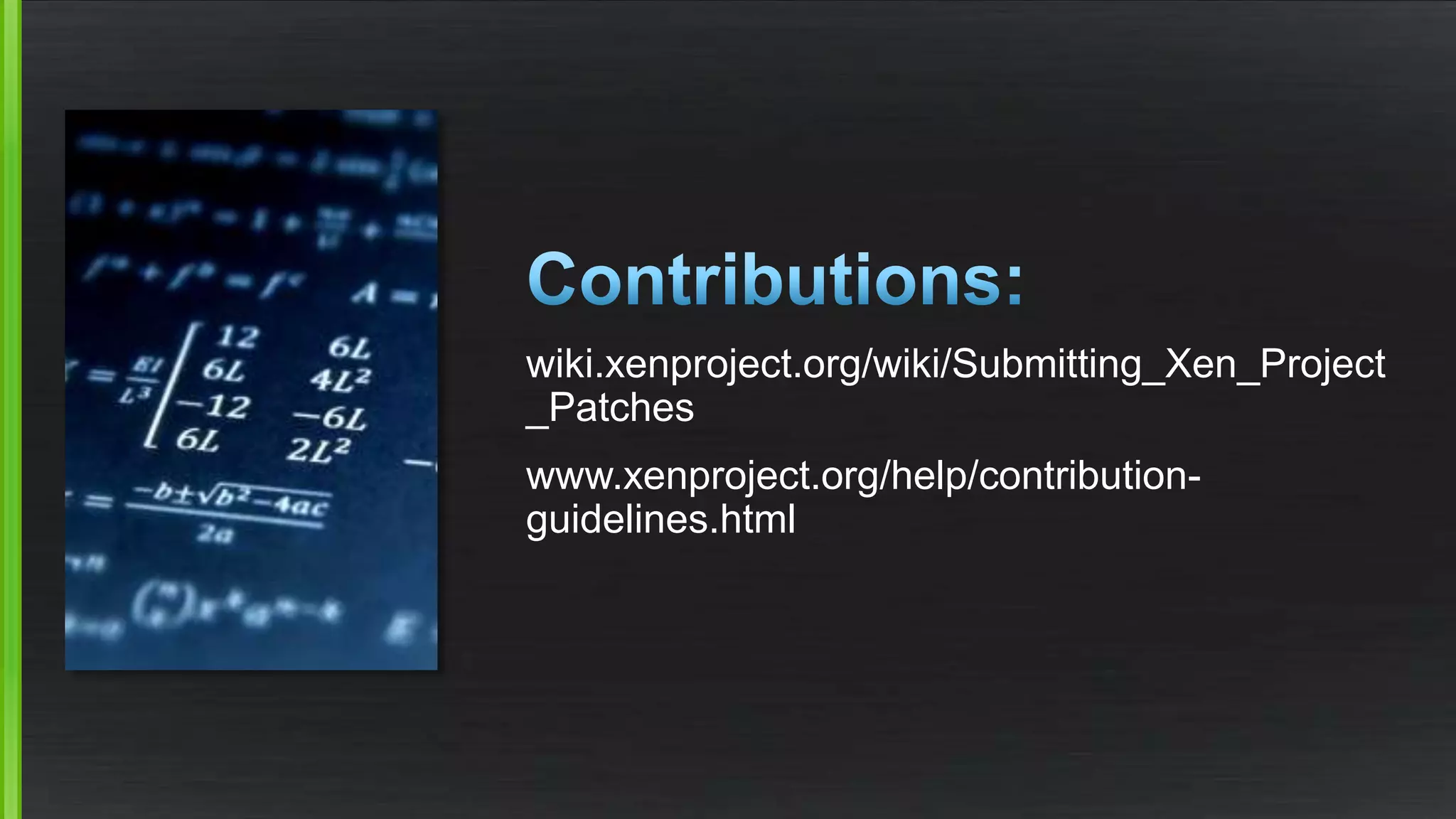


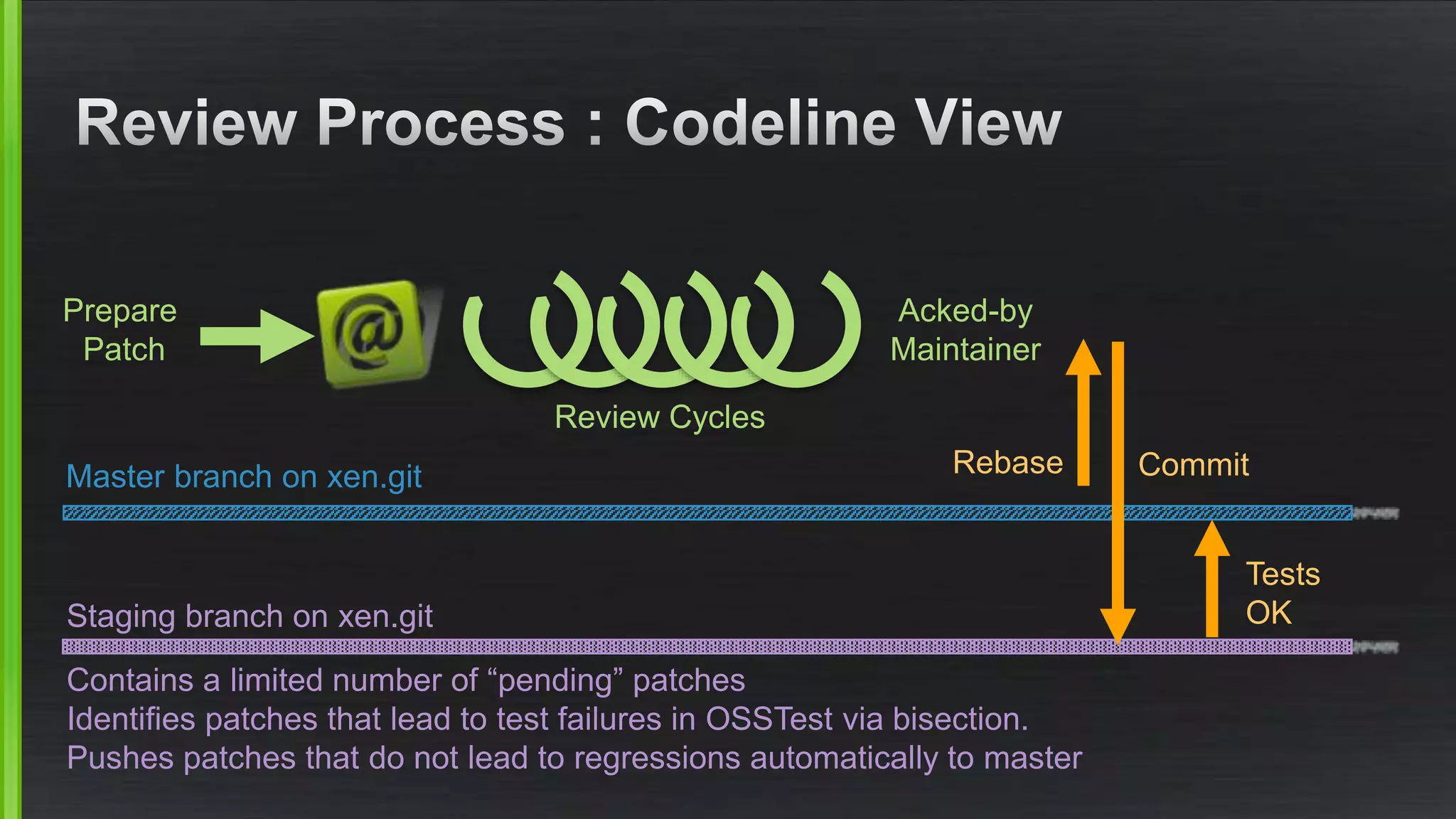

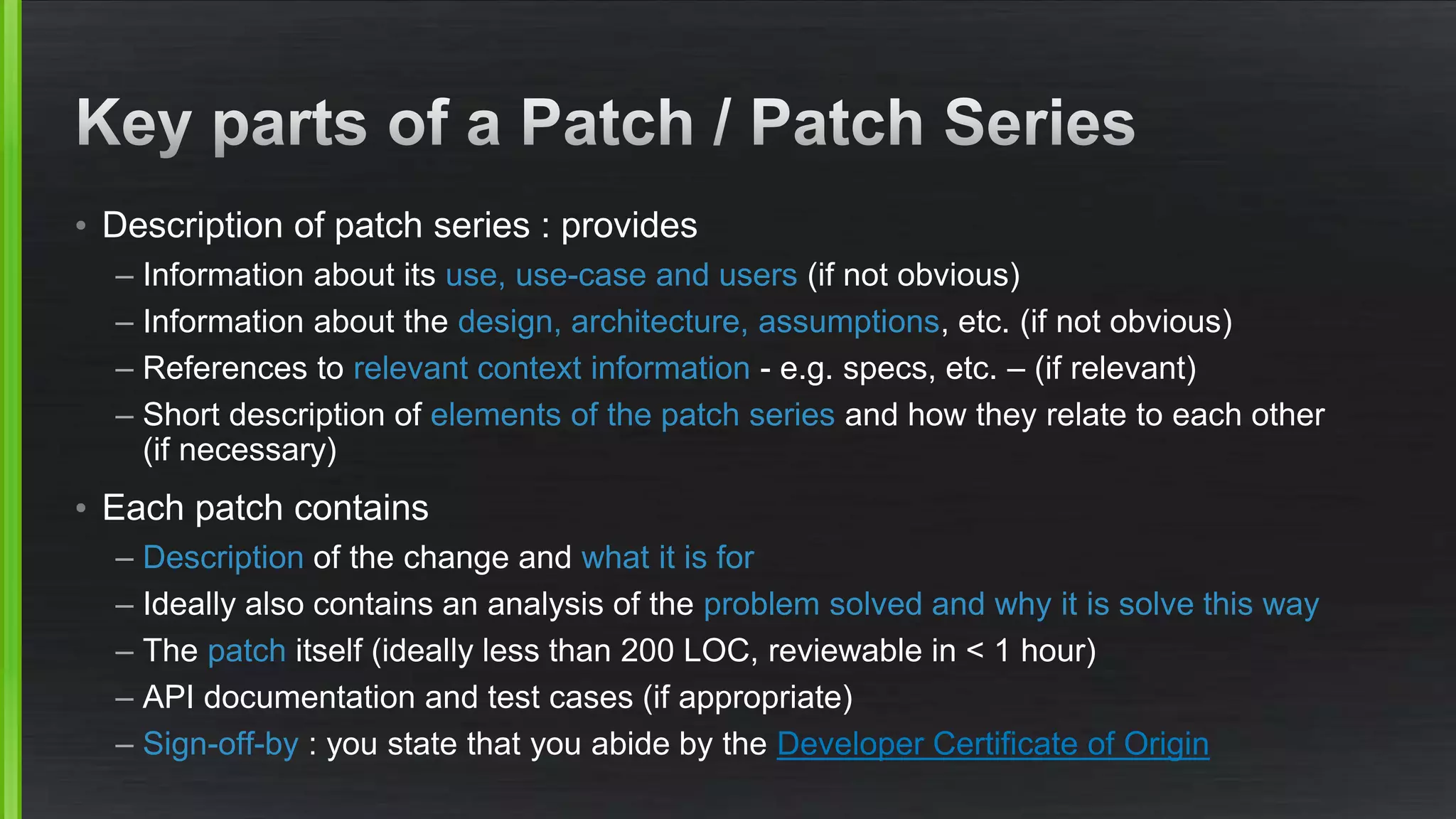
![marc.info/?l=xen-devel&m=141407695210809
This driver uses hwdom to change frequencies on CPUs
marc.info/?l=xen-devel&m=141407702410864
Xen changes frequencies on CPUs using this high-level cpufreq driver.
marc.info/?l=xen-devel&m=141492507021019&w=2
This patch series are only the Qemu part to enable Xen stubdom vTPM for HVM virtual machine. it
will work w/ Xen patch series and seaBios patch series.
Build it with --enable-tpm and --enable-xen options and link with Xen, or change
QEMU_STUBDOM_VTPM compile option from 'n' to 'y' in <Xen>/Config.mk, when the Qemu/ SeaBios patch
series are merged.
Run Xen virtual machine with below QEMU command line options: "-tpmdev xenstubdoms,id=xenvtpm0 -
device tpm-tis,tpmdev=xenvtpm0" or Xen xl tool adds this options when virtual machine cfg
includes: vtpm=["backend=vtpmN"]
qemu-system-* --tpmdev help
Supported TPM types (choose only one): passthrough - Passthrough TPM backend driver xenstubdoms;
Xenstubdoms -TPM backend driver](https://image.slidesharecdn.com/xpcontributortraining-pt2processesandconventionsv1-151110182541-lva1-app6892/75/Xen-Project-Contributor-Training-Part2-Processes-and-Conventions-v1-1-45-2048.jpg)
